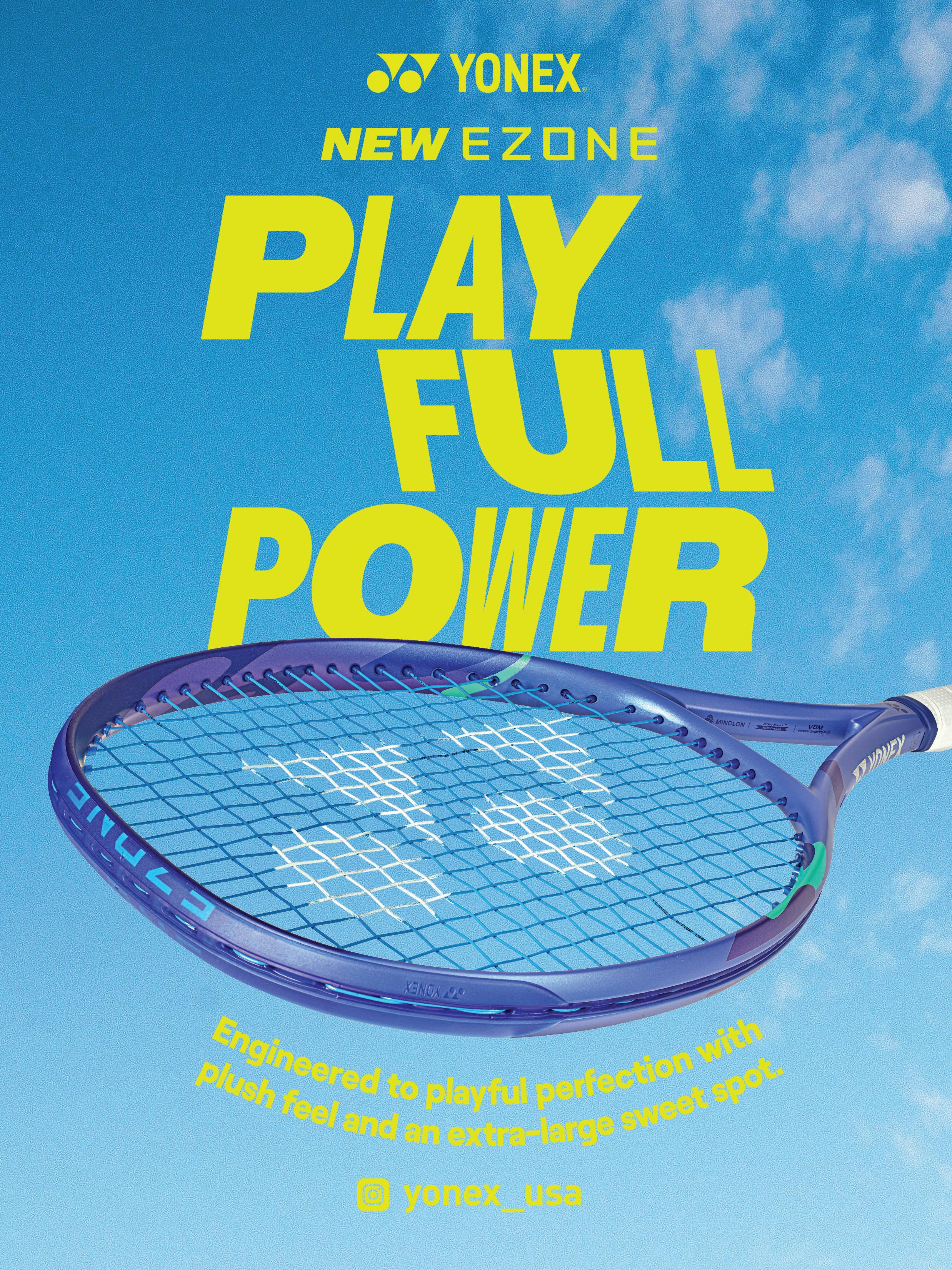RETAILING
GRASSROOTS
Wake up your career by investing in yourself
Water bottles to keep your players sipping in style
Wheelchair and adaptive tennis stars are raising the game ACCESSORIES
An iconic NYC shop celebrates 50 years in business

RETAILING
GRASSROOTS
Wake up your career by investing in yourself
Water bottles to keep your players sipping in style
Wheelchair and adaptive tennis stars are raising the game ACCESSORIES
An iconic NYC shop celebrates 50 years in business
Our exclusive guide to stringing machines will find the perfect investment for your shop.
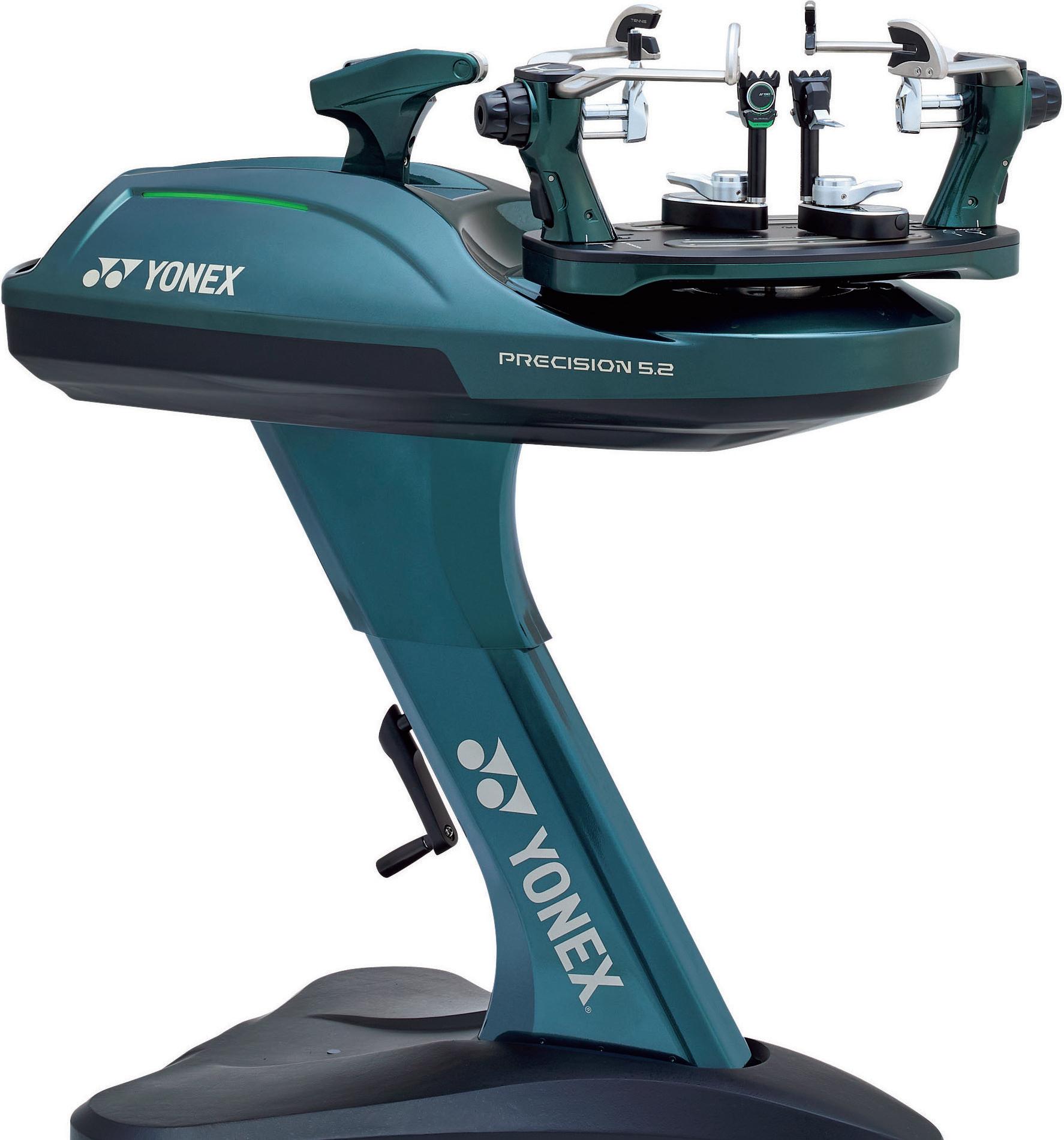

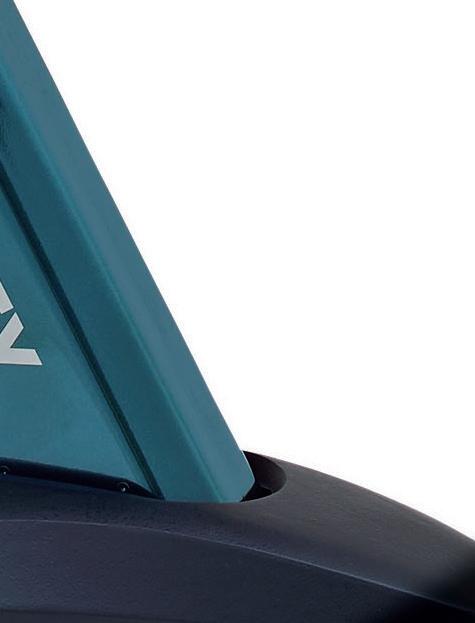

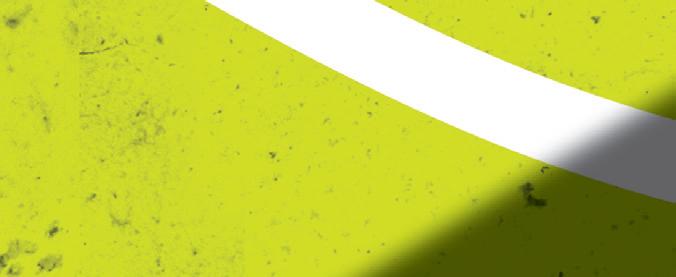



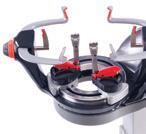


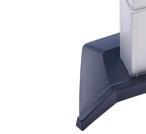




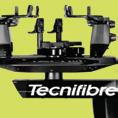


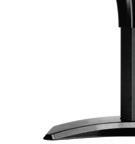
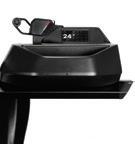

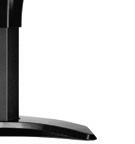
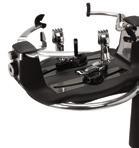
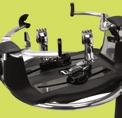





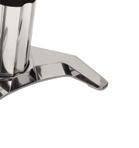












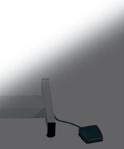
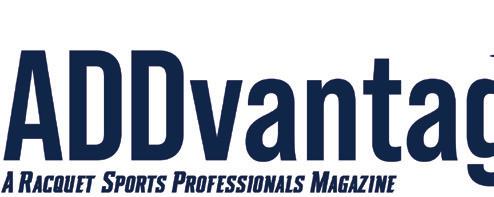









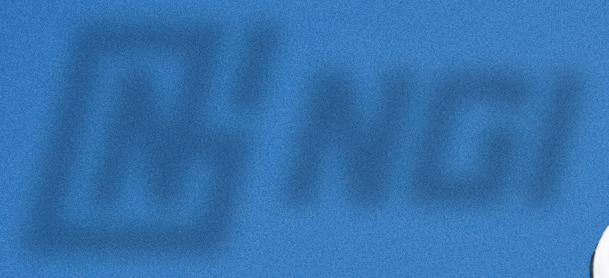



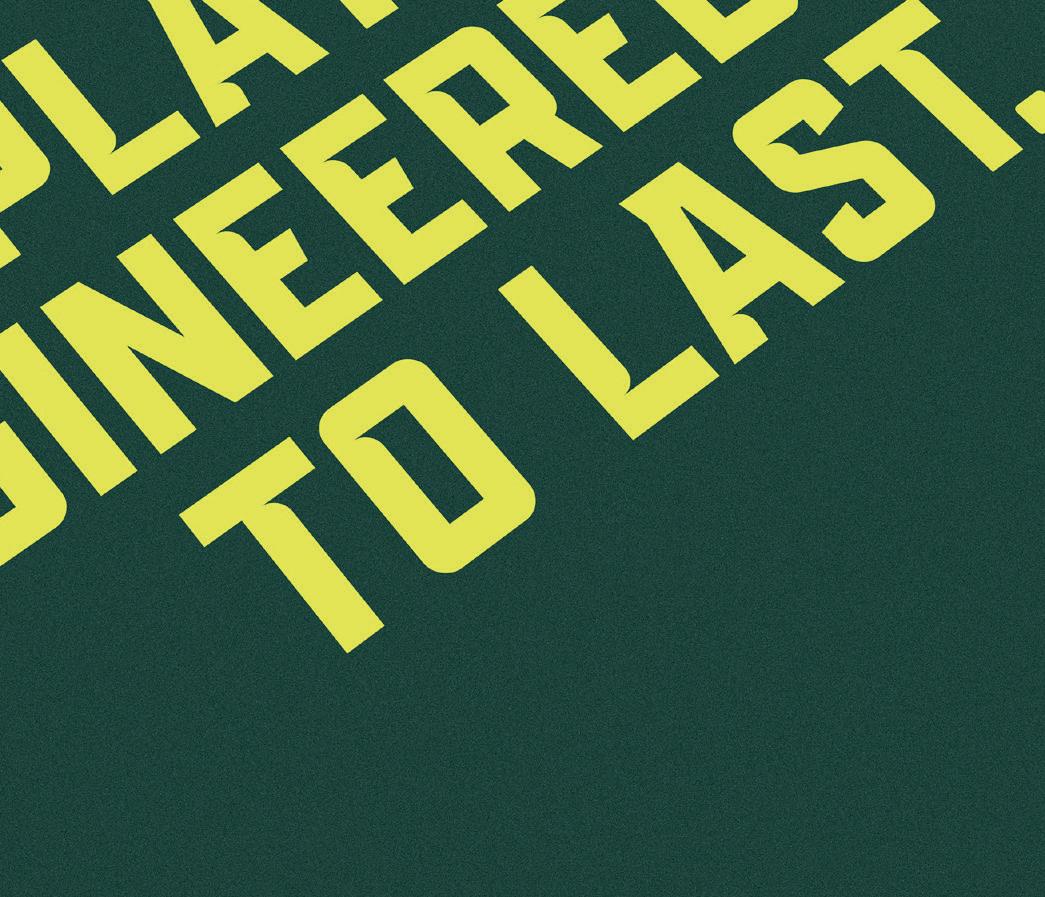









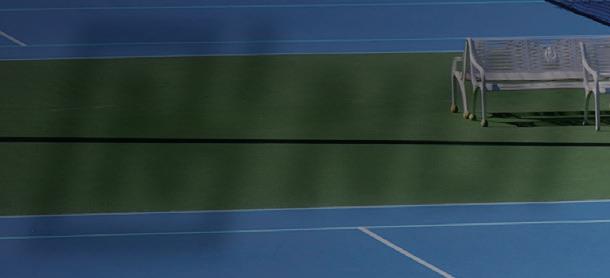



The best crack repair method available. The Shield covers the entire court & is guaranteed to protect your surface from cracks.


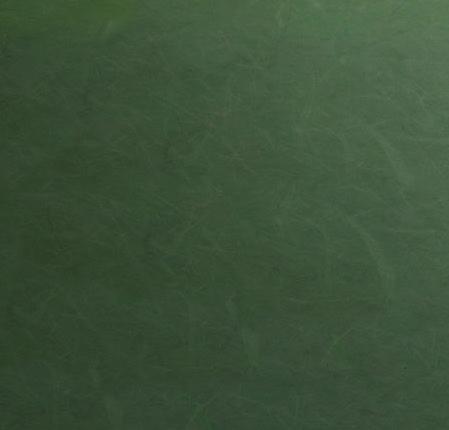


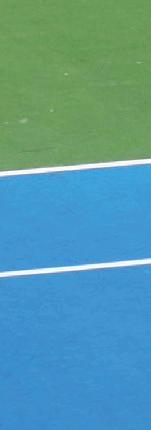
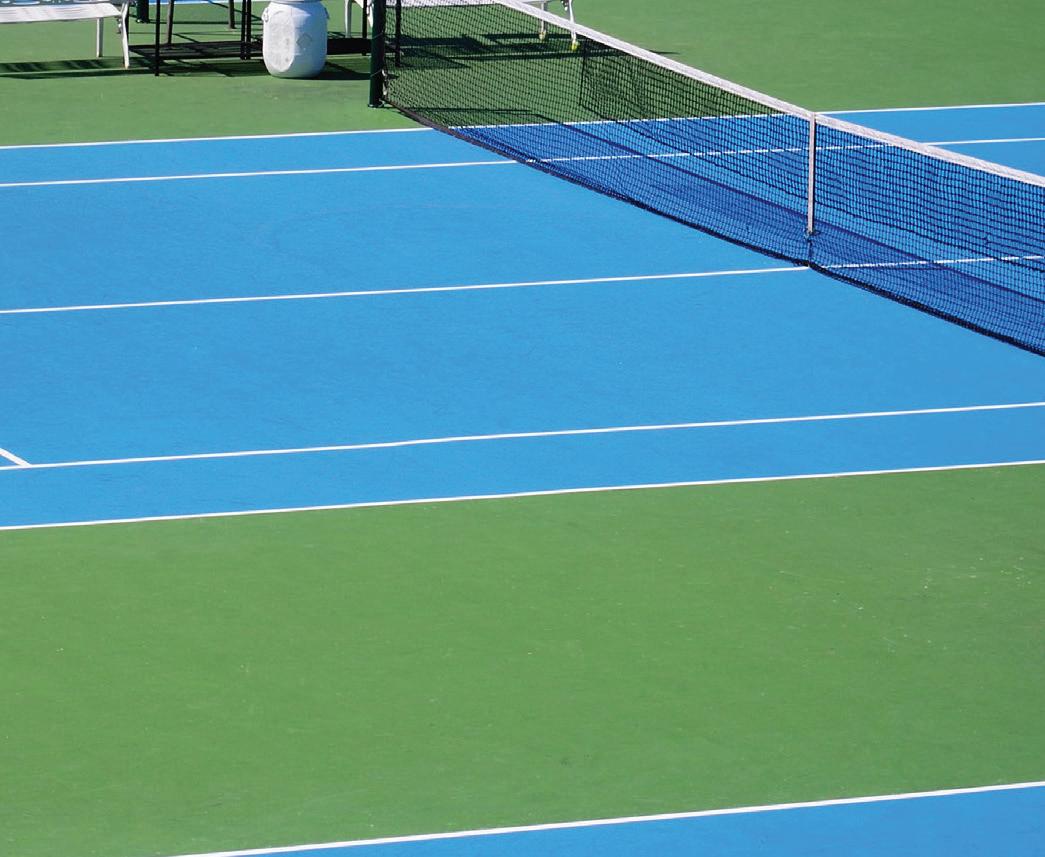

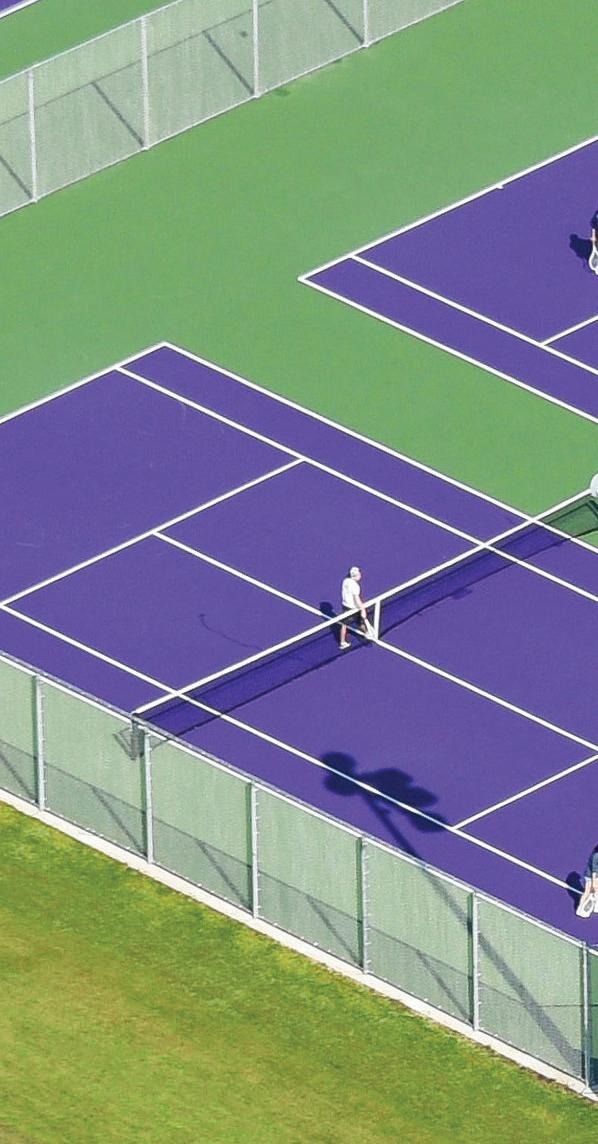
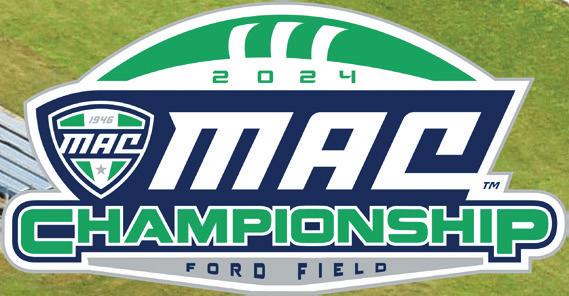

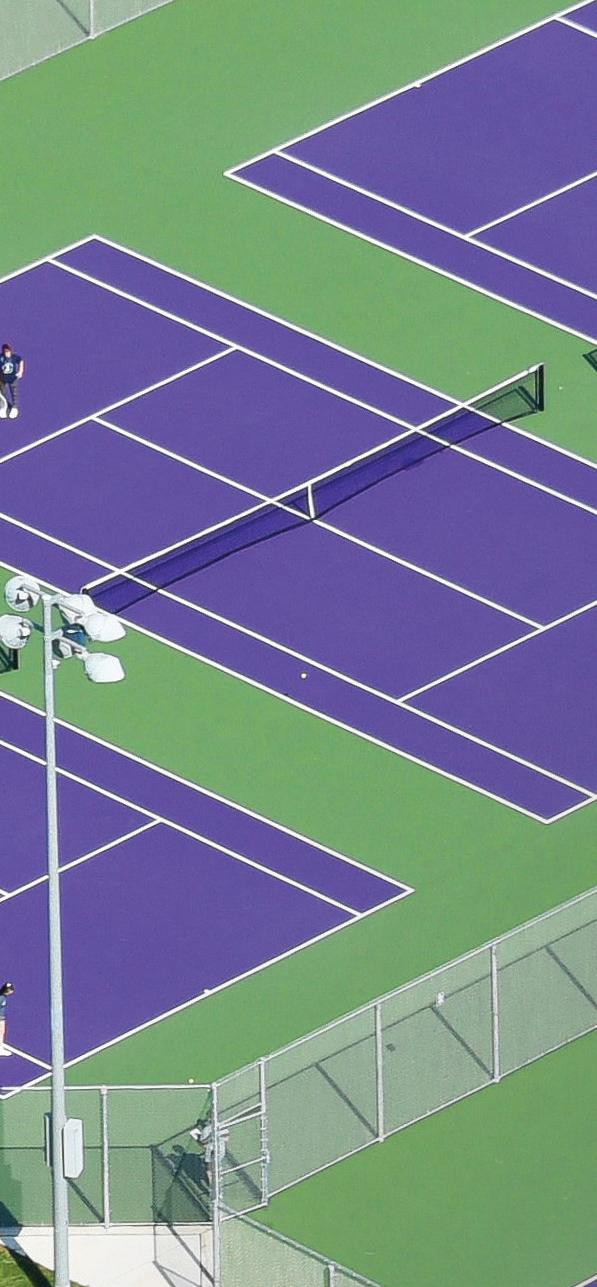
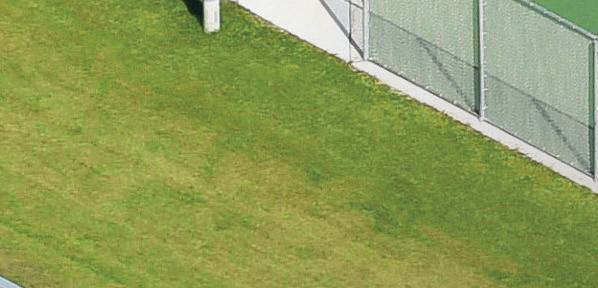






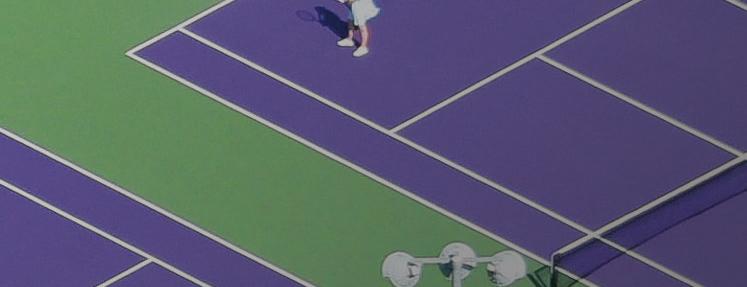


The official surface of the 2024 MAC Championship, now available with a 15 year warranty.


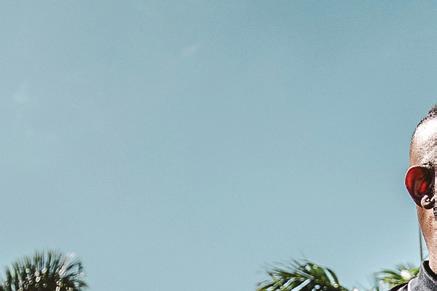
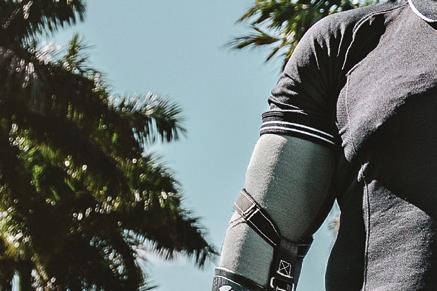
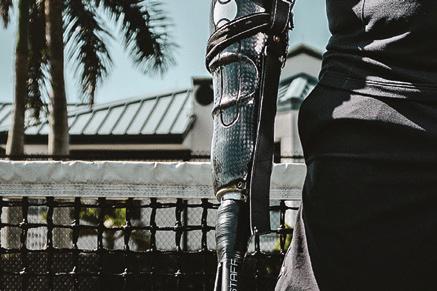
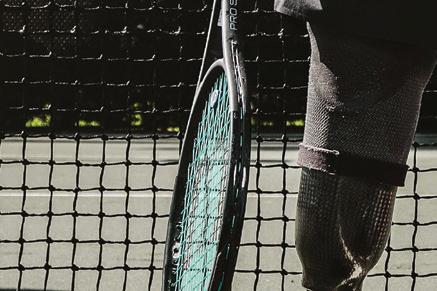

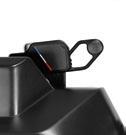







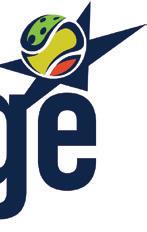
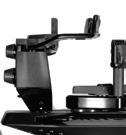

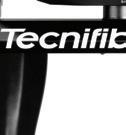

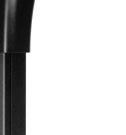

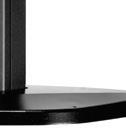
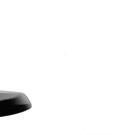
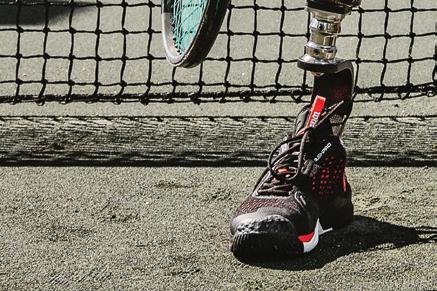

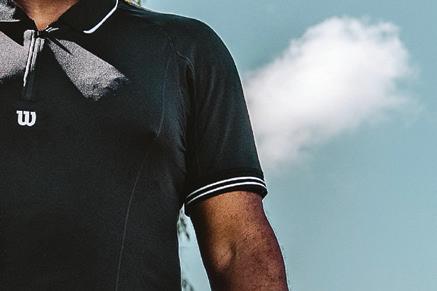

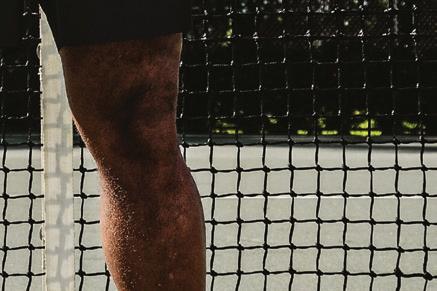
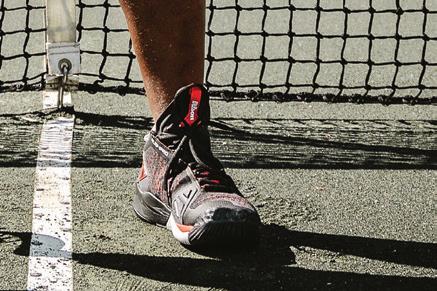






Proudly serving country clubs, independent retailers, teams, facilities, and the entire racquet sports community for more than 50 years.
























My favorite thing about ordering with Fromuth is the customer service, hands down! Whether I’m calling into the regular phone line or my personal representatives, Lisa & Andy, I always receive quick and thorough help!
Jennie Maier- Pro Shop Buyer/Merchandiser, Raleigh Racquet Club (RRC), Raleigh, NC

Information to help you run your business
Global business executive Mike McGoohan will be the USTA’s new Chief Growth O cer, a newly created role at the organization. McGoohan will lead e orts to expand tennis participation and engagement in the U.S., focusing on driving strategic growth initiatives that attract more players to the sport in areas such as grassroots activations, membership development and digital engagement, says the USTA.
“Reaching 35 million tennis players by 2035 is an ambitious goal, and it’s going to require a coordinated, collaborative e ort across every part of our organization,” said former USTA CEO and Executive Director Lew Sherr. “That’s why we created this new leadership role. Mike has a proven track record of driving growth, and we’re confident that his experience and vision will help us bring the benefits of the world’s healthiest sport to more people and communities across America.”
PTR’s branding and overseeing marketing and social media strategies that have played a key role in expanding the organization’s reach.
• Paige Payne will return to PTR in a new role, director of development. The 12year PTR veteran will support workshop coordination—overseeing scheduling, assisting members throughout their certification journey, and serving as a key liaison between coach developers and workshop hosts.
• Joining PTR as education manager is Isaac McBroom, formerly PTR’s director of development. He previously served as the National Coach Education Lead for LifeTime Fitness, designing and implementing coaching philosophies for 26 clubs nationwide. McBroom will play a key role in expanding and elevating PTR’s educational offerings.
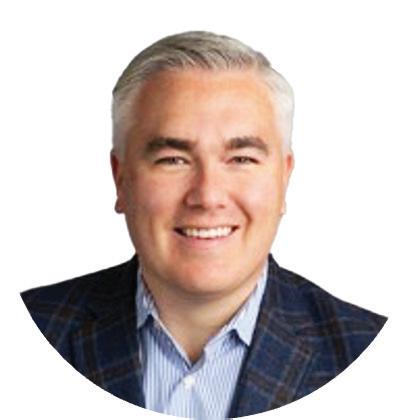
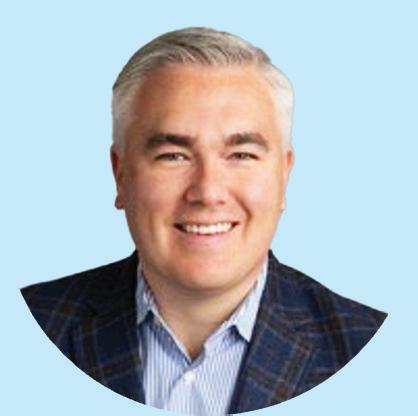
The Professional Tennis Registry has announced two strategic leadership promotions and the addition of several key team members as part of its continued growth.
“As we embark on our 50th year, we are doubling down to grow our best-in-class education, setting higher standards and bringing in new talent to greater serve our coaches, members and partners,” says PTR CEO Pete Hurley.
• Milena Vidos has been promoted to
McGoohan joins the USTA from Solo Brands, where he served as President of Solo Stove and Chief Growth O cer for Solo Brands, leading a turnaround and transformation of the $500 million consumer lifestyle brand. Among other things, he developed a multi-year growth plan for the organization while strengthening the leadership team and building a high-performance culture across the organization.
vice president, where she will lead the organization in driving growth, enhancing educational programs, and expanding membership value. Vidos will oversee key areas including educational program management, membership growth and strategic partnerships. She’ll continue to lead initiatives like PTR ACE, PTRW, Wheelchair and Adaptive Programs, and the Junior Apprentice Program.
• Caitlyn Fries has been promoted to director of marketing. Since joining PTR in 2018, Fries has been integral to managing
To support the organization’s growth and the Saddlebrook office, PTR recently expanded its team with four hires: a Creative Marketing Specialist, Social Media Coordinator, Member Experience Coordinator, and Bookkeeper/HR & Office Manager.
The National Public Parks Tennis Championships will be coming to Orlando, Fla., in September. For 2025, the event will be split into two weekends: The adult tournament will be Sept. 12-14 at the USTA National Campus, and youth competition will be Sept. 20-21 at Orlando's Lake Cane Tennis Center.
This year, the NPPTC coordinates with the National Recreation and Park Association (NRPA) Annual Conference, held at the Orange County Convention Center Sept. 16-18, and which expects more than 10,000 attendees. NRPA conference attendees can take part in a tour of the USTA National Campus on Sept. 15 that will highlight Red Ball Tennis, and NPPTC tournament registration details will be included in NRPA conference materials.
The USTA has launched a new microgrant program aimed at growing tennis at the local level, which includes a pledge of $5 million over the next five years ($1 million per year).
Less than a month after the application for the new program went live on May 31, the USTA said it already had received more than $1 million in micro-grant applications for 2025. The program will next become available in 2026.
The new micro-grant program and funding is in addition to $10 million in grants earmarked to significantly expand the USTA’s facility grant program that supports local tennis infrastructure, which was announced earlier this year. The micro-grants, designed to be accessible to as many orga-
nizations as possible, range from $2,500 to $10,000, and can cover a wide range of growth-related expenses, including new equipment as well as events and activations designed to promote the sport. Grants can also be used to create Community Tennis Associations.
Players from all 50 states and 40 countries participated in the 2025 Minto US Open Pickleball Championships, held in Naples, Fla., in April. The event also broke previous records, including:
• 3,450 total players
• 5,600 matches played
• 55,000 spectators throughout the week
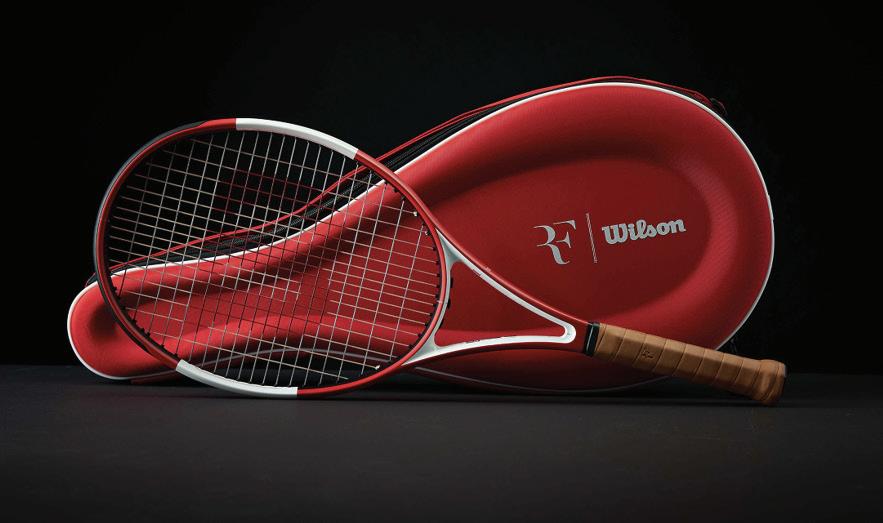
Wilson Sporting Goods released in June the next chapter in its partnership with Roger Federer: the RF Classics Collection by Wilson. The new collection pays homage to Federer’s legacy and global influence, drawing inspiration from the nCode racquet he used during his dominant run from 2004 to 2006.
The RF Classics Collection features two limited-edition racquets, developed in collaboration with Federer. One is a modern interpretation of the nCode design, reimagined on the RF 01, which was released last year (suggested retail $350, including molded RF cover). The other is a reissue of the original nSix-One Tour 90 ($299), offering fans a chance to own a piece of tennis history.
“Continuing to work with Roger has been extremely special for all of us at Wilson,” says Global General Manager Jason Collins. “From building innovative collections to celebrating tennis heritage, we’re proud to partner with him in honoring his impact on the game and inspiring future generations.”
PUBLISHER BILL SIMON
EDITOR
PETER FRANCESCONI peter@acepublishinggroup.com
MANAGING EDITOR SCOTT GRAMLING
CREATIVE DIRECTOR IAN KNOWLES
SENIOR EDITOR ED M c GROGAN
ART DIRECTOR
CRHISTIAN RODRIGUEZ
SPECIAL CONTRIBUTOR BOB PATTERSON
CONTRIBUTING EDITORS
KIM BASTABLE, CYNTHIA CANTRELL, PEG CONNOR, JOE DINOFFER, JUDY LEAND, GREG MORAN, KENT OSWALD, CYNTHIA SHERMAN, MARY HELEN SPRECHER, JOE TEDINO
CONTRIBUTING PHOTOGRAPHER DAVID KENAS
EDITORIAL DIRECTION 10TEN MEDIA
RACQUET SPORTS INDUSTRY
60 East 42nd St., Suite 740, NY NY 10165 peter@acepublishinggroup.com
ADVERTISING DIRECTOR JOHN HANNA 770-650-1102, x125 hanna@knowatlanta.com
APPAREL ADVERTISING
CYNTHIA SHERMAN 203-558-5911 cstennisindustry@gmail.com
Racquet Sports Industry is published 10 times per year: monthly, January through August with combined issues in September/October and November/ December, by Tennis Channel, Inc., 60 East 42nd St., Suite 740, New York NY 10165. Periodical postage paid in New York, NY and at additional mailing offices (USPS #004-354). August 2025, Volume 53, Number 8 © 2025 by Tennis Channel, Inc. All rights reserved. Racquet Sports Industry, RSI and logo are trademarks of Tennis Channel, Inc. Printed in the U.S.A. Phone advertising: 770-650-1102 x 125. Phone circulation and editorial: 917-817-0896. Yearly subscriptions $25 in the U.S., $40+ elsewhere. POSTMASTER: Send address changes to Racquet Sports Industry, 60 East 42nd St., Suite 740, New York NY 10165. Racquet Sports Industry is the official magazine of the USRSA, RIRG and ASBA.
Looking for back issues of Tennis Industry/Racquet Sports Industry? Visit the archives at our website at TennisIndustryMag.com for free digital versions.



The USTA has added four leaders in grassroots and pro tennis in strategic roles to help grow tennis.
Grassroots efforts include new roles to advocate for more courts, expand court inventory and grow digital engagement, with the hiring of Patrick Briaud as Managing Director of Tennis Advocacy; Lydia Colaresi as Managing Director, Head of Digital Strategy; and Christian Gabriel as Managing Director of Tennis Infrastructure and Venue Strategy. Angus Mugford joins USA Tennis as Managing Director of Athlete Performance and Operations.
“All four of these exceptional individuals bring an incredible mix of experience and passion for sport that will be highly accretive to our efforts to grow the game of tennis in the U.S.,” said Lew Sherr, former USTA CEO and Executive Director. “Their strategic thinking and resultsdriven mindset will be a huge part of helping us hit our growth goals and continue expanding the reach and impact of tennis across the country.”
MEDIA
WTA Ventures and Tennis Channel have agreed to a new six-year media rights deal ensuring that Tennis Channel platforms will continue to be the exclusive home of WTA tennis in the U.S. through 2032.
The deal means the Hologic WTA Tour will be available to tennis fans across the country through Tennis Channel, its streaming network Tennis Channel 2, its app and its website, TennisChannel.com. The deal covers all WTA 1000, 500 and 250 events (except tournaments in the U.S.) through to the season-closing WTA Finals. (The net-

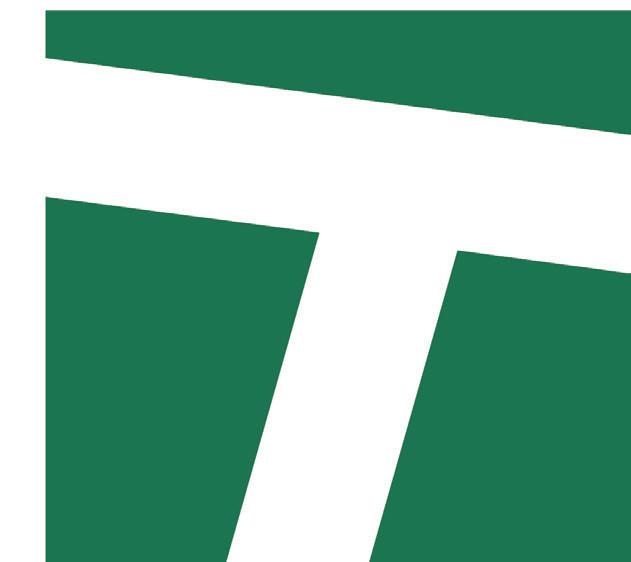


work covers women’s events in the U.S. through other rights contracts.)
Following the new agreement, WTA Ventures and Tennis Channel will work together to continue to enhance and innovate coverage of women’s tennis, engaging fans and promoting the game to new audiences. These combined efforts will build on the launch of the WTA’s new brand identity and the strong growth of women’s tennis in the U.S.
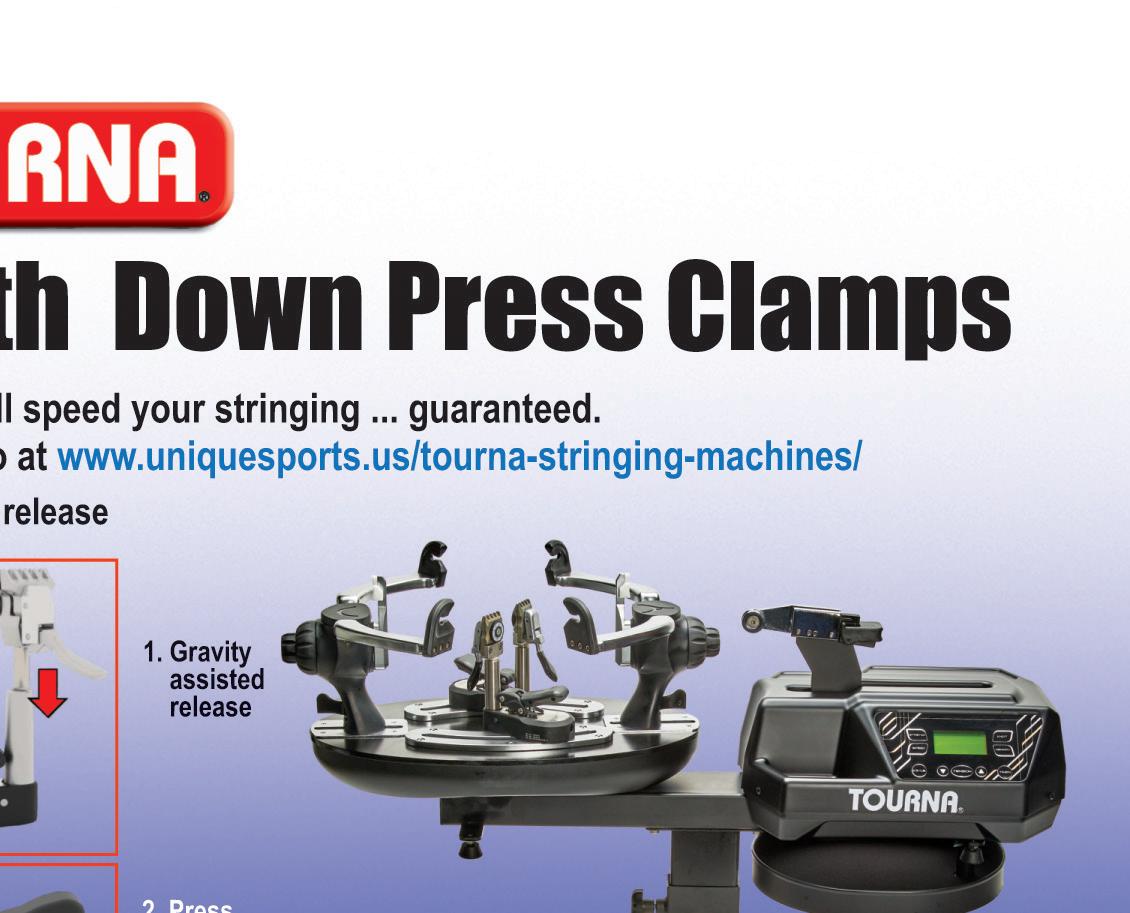
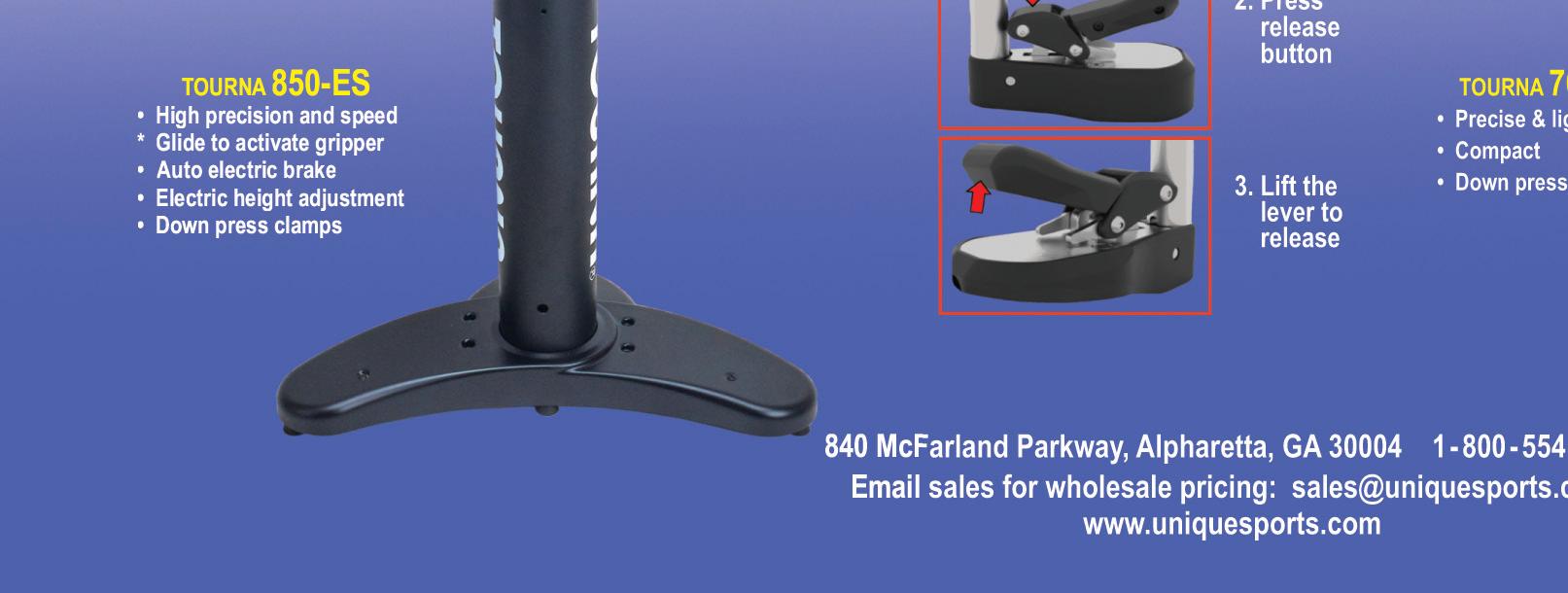

Spain’s King Felipe VI granted Rafael Nadal the noble title of marquis, recognizing his contribution to the nation through sporting prowess, according to a royal household statement. The former world No. 1 will hold the title Marquis of Llevant de Mallorca, the island where he was born and lives. The title can be inherited by his descendants.
The 39-year-old Nadal, a 22-time Grand Slam champion who retired last year, was among six individuals honored as part of celebrations marking the monarch’s 10th anniversary on the throne. Others given such titles included poprock singer Luz Casal and Paralympic swimmer Teresa Perales.
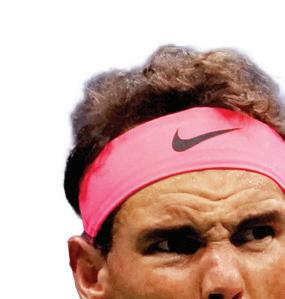

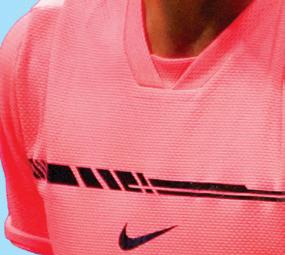


USTA Expands Althea Gibson Scholarship Program for HBCUs
In honor of the 75th anniversary of Althea Gibson breaking the color barrier in tennis, the USTA is expanding its Althea Gibson HBCU Scholarship Program. The announcement was made in June during the HBCU Week 2025 Awards Gala held in Wilmington, Del.
Together with the HBCU Week Foundation, the USTA will award an additional $20,000 in college scholarships to two students ($10,000 each) who are currently or will be enrolled in a Historically Black College or University. Applications will open in September, with recipients selected in early 2026.

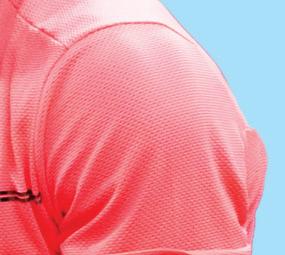




Since its inception in 2022, the USTA Althea Gibson HBCU Scholarship program has awarded nearly $60,000 in college scholarships to students enrolled in an HBCU.
In 1950, Althea Gibson broke the color barrier in tennis, becoming the first African American to compete in the U.S. National Championships (now the US Open). For information visit USTA.com.

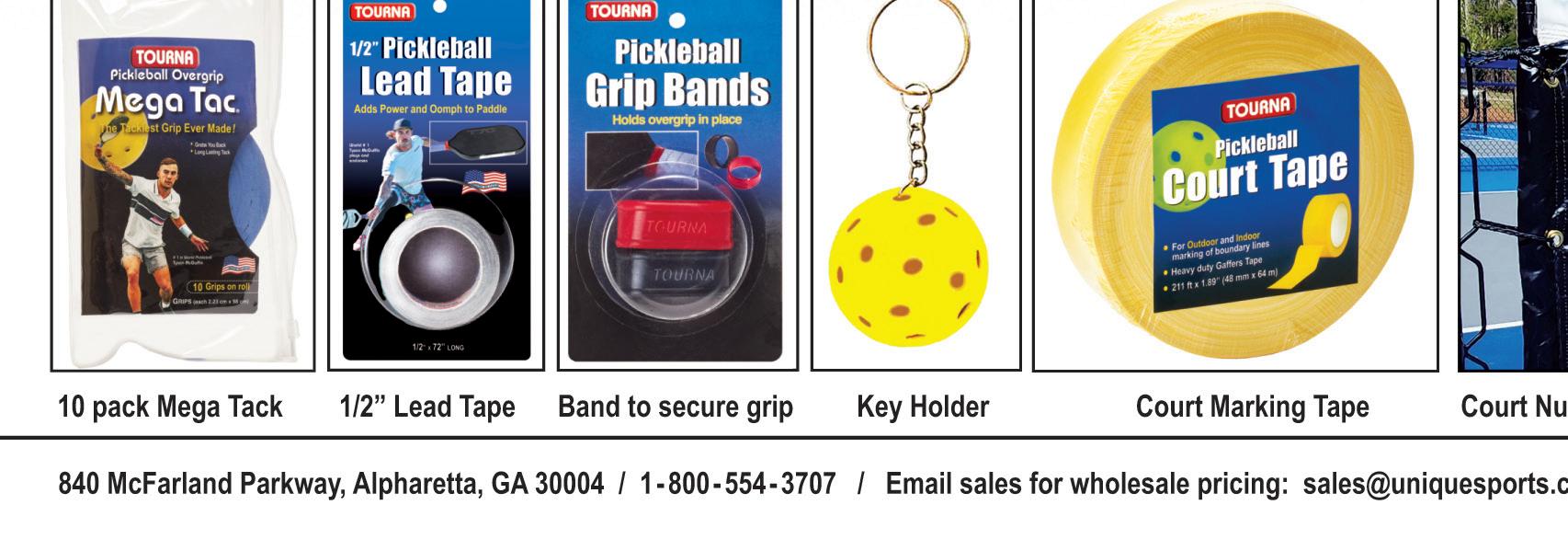

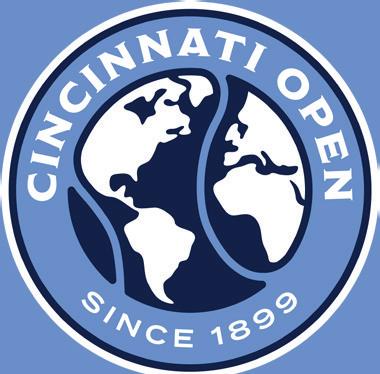
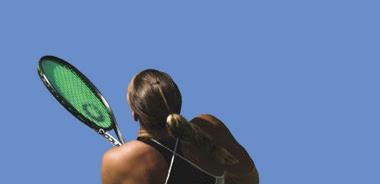



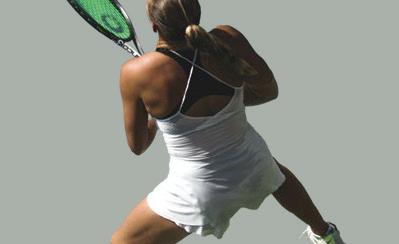




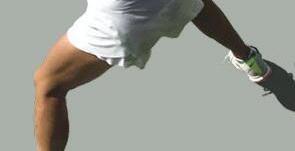






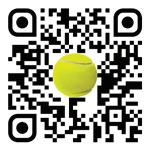
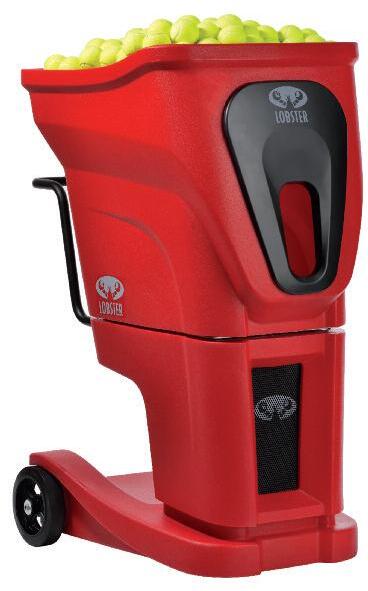
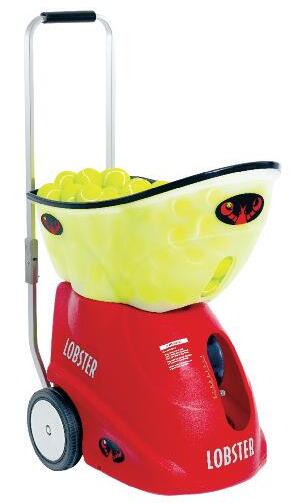
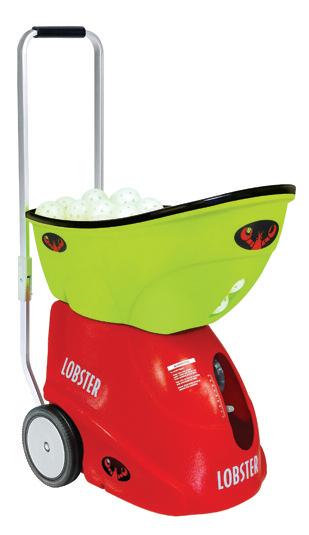
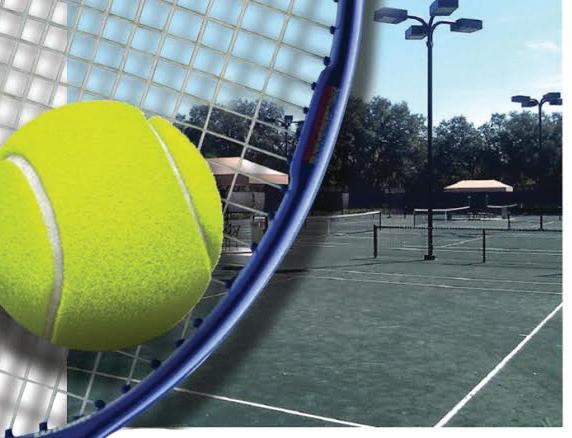

Achieves ITF Silver Rating
PlayReplay has passed the required testing for the International Tennis Federation Silver Classification. To date, PlayReplay is the only system that is classified for electronic line calling by the ITF outside of systems approved for use in high-level professional tennis. The system can be used for review/ challenge by chair umpires, roving officials or the players themselves.
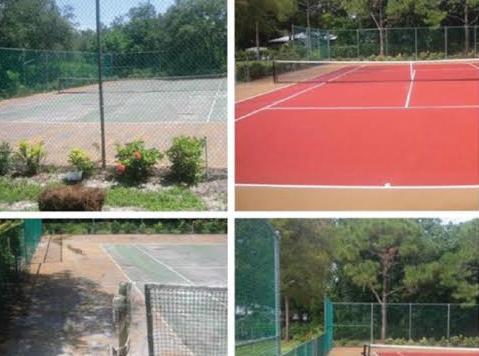

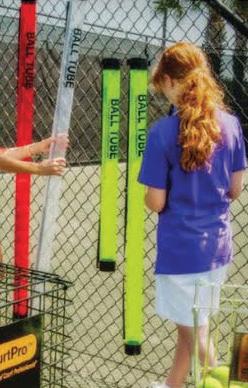

Over the past two years, PlayReplay completed a series of rigorous tests with the ITF to verify the system's accuracy, usability and reliability. These tests were conducted on hard courts, covering both indoor and outdoor environments. The test sequence was finalized during the USTA SoCal Pro Series event held in June at Barnes Tennis Center in San Diego.
"We are exceptionally proud to be the first to break new ground with a system that can address the volume market," says Hans Lundstam, CEO of PlayReplay, which is a USTA partner. Visit playreplay.io.
OnCourt OffCourt has launched branded OCOC Pickleballs. The neon yellow outdoor balls come in a set of 25 and are built for reliable performance, exceptional durability and easy visibility on any court, says the company. Suggested retail is $49.95. Contact 888-366-4717 or visit www. OnCourtOffCourt.com.
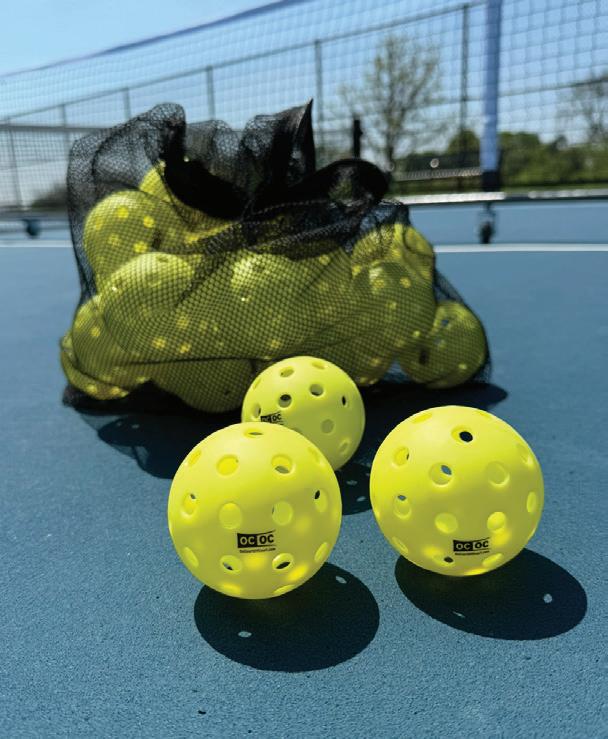
World No. 1 and US Open Champion Andy Roddick. Earlier this year, Psycho

Industry veteran David Malinowski has joined Head Penn Racquet Sports as Vice President. He most recently was at K-Swiss for nearly five years, most recently as Vice President of Performance.
















After 20 years as president and CEO of U.S. Squash, the national governing body and membership organization for the sport in the U.S., Kevin Klipstein will step down at the end of the year. Under Klipstein’s leadership, the 120-year-old U.S. Squash experienced a significant period of growth, and the sport will have its Olympic debut in Los Angeles in 2028.

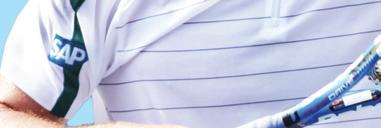
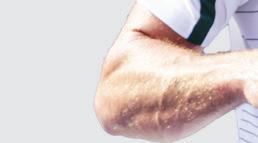


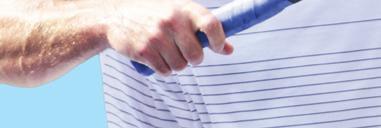


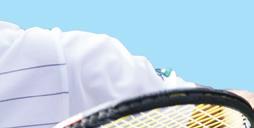
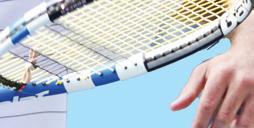



Menswear brand Psycho Bunny has a multi-year partnership with former


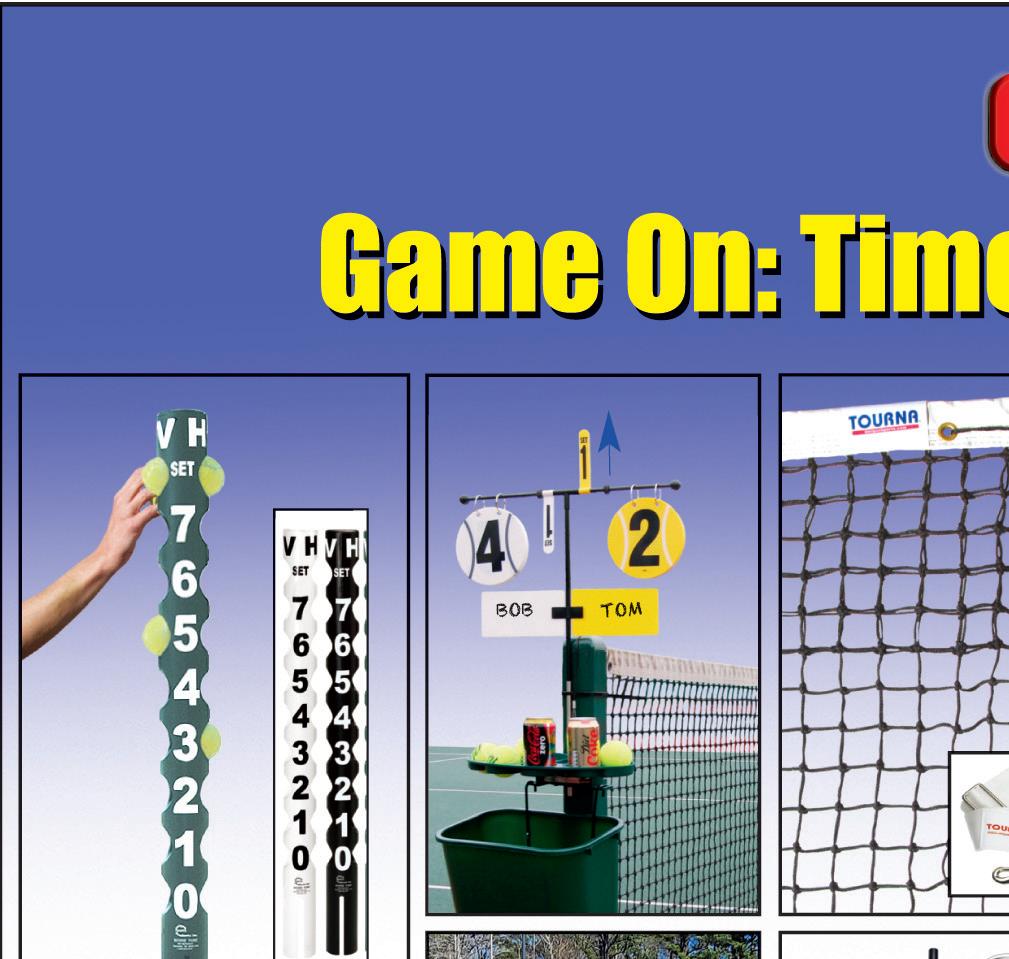




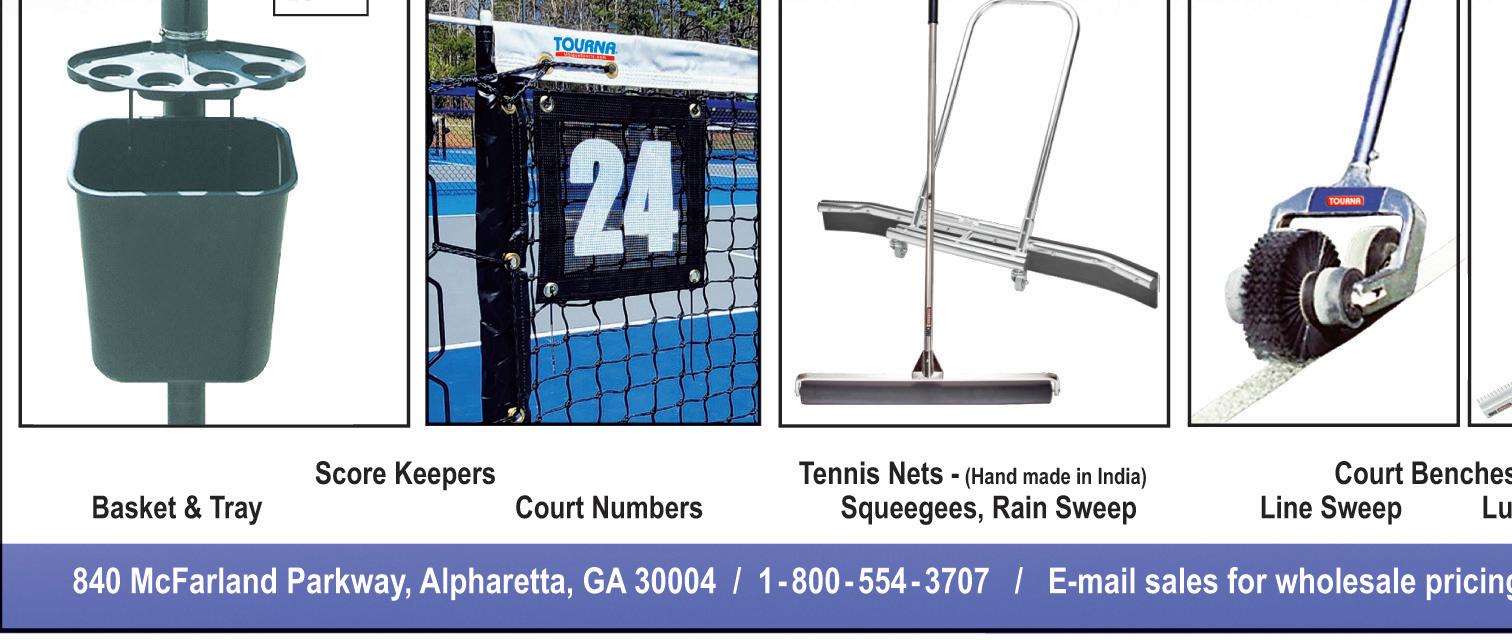


Bunny made its debut in the tennis world with a partnership featuring rising star Alexei Popyrin, then signed a deal with standout Arthur Rinderknech.















Julieta Pareja is the first female American tennis player to join the player roster of apparel company On. At 16 years old, Pareja, from Carlsbad, Calif., has secured multiple J300 tournament victories and a Billie Jean King Cup Junior title. The winner of the Indian Wells Junior Championships and a semifinalist at the WTA 250 in Bogota, her WTA ranking reached 323 in June.






Scott Staniar, the former CEO of New HYTEs, an NJTL based in New Haven, Conn., passed away June 22 after a year-long battle with cancer.


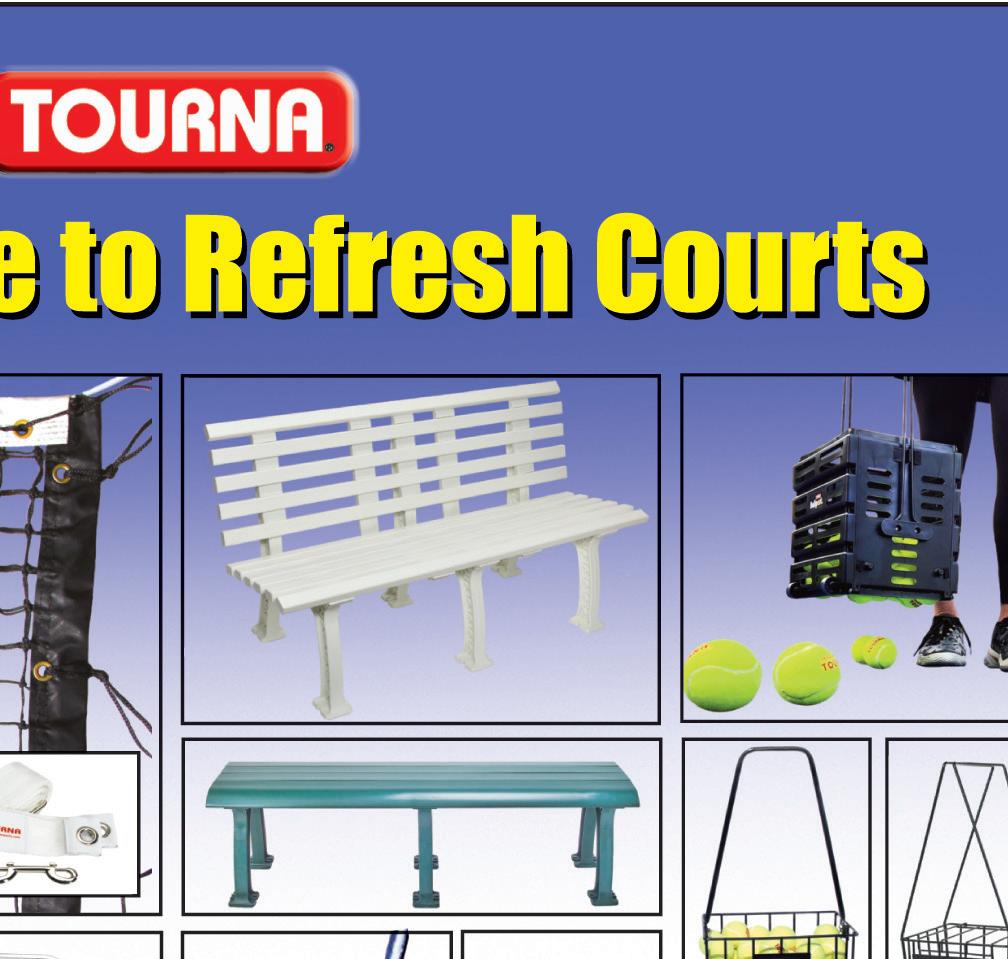


RacquetX, scheduled for March 13 to 15, will relocate to the Broward County Convention Center in Fort Lauderdale for its 2026 edition. Organizers say the new venue will allow for more space, better layout and flow, and easier access for attendees.
Agassi Sports Entertainment Corp. has acquired the trademark and all rights associated with the name “World










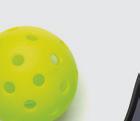













Series of Pickleball.” The company is in discussions with potential partners, sponsors and other stakeholders to develop a global event, held in Las Vegas.
Smash Padel & Pickle Club is set to open this winter in Branford, Conn., offering luxury courts, expert coaching and a community for padel and pickleball enthusiasts of all skill levels. The venue also offers lounge areas, a pro shop, and spaces for socializing and community events. The Hinding Group and G+P Architects have partnered for the venture.
vision. The 12-episode annual series airs in over 100 million U.S. households, on networks including NESN, MASN, Fox Las Vegas, Silver State Sports Network, NLSE TV, All Sports Network, and Right Now Network. Cicma is a former ATP Tour professional and Emmy Award-winning sports anchor on NBC Sports and ESPN.




Tennis TV series “World Tennis with Harry Cicma” has announced that SXY. com is its new title sponsor, as the show enters its 16th season on national tele-
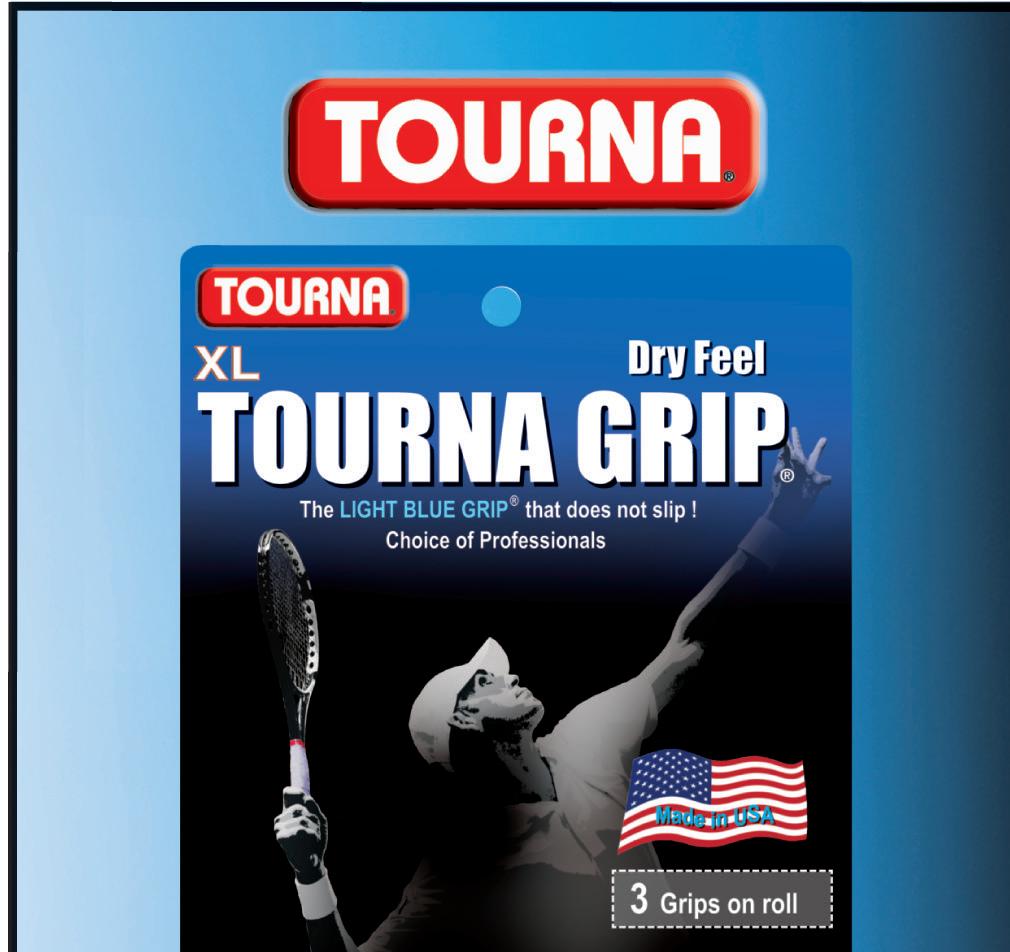
On June 5, the Florence (S.C.) Tennis Association hosted community leaders and Parks and Recreation specialists from across the region at the Dr. Eddie Floyd Florence Tennis Center, showing them how to teach tennis to beginners and bringing them up to date on grants, equipment, training and other resources available through the USTA.
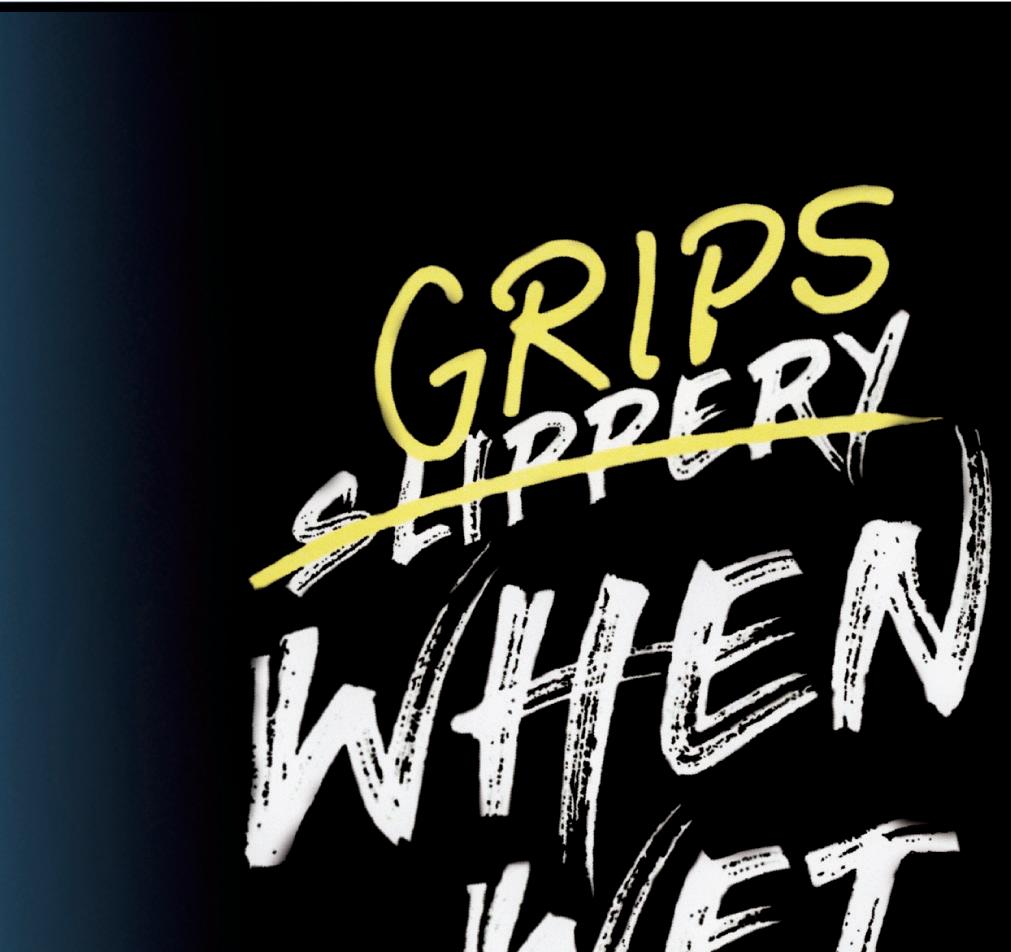





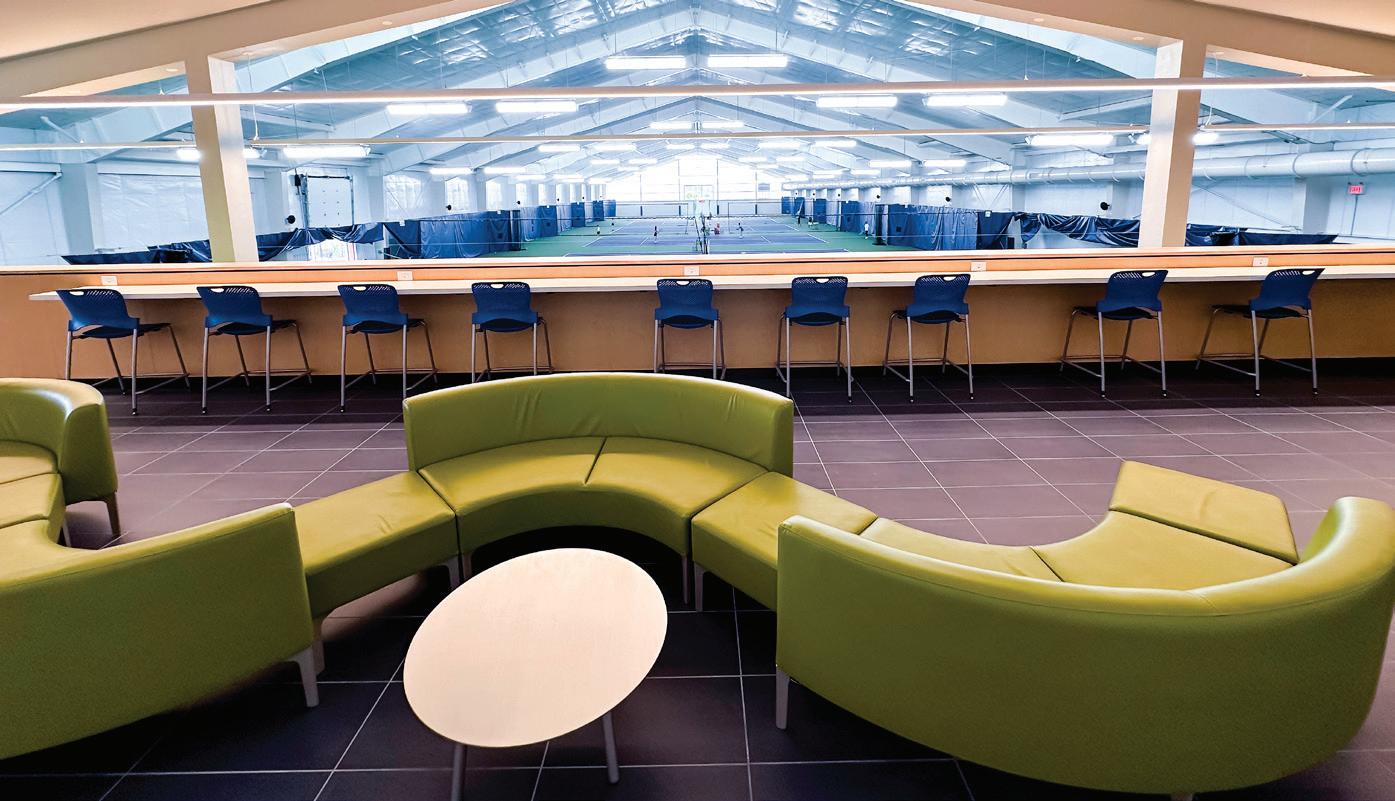
Sportime Randall’s Island in New York has completed a $55 million expansion, making it one of the largest indoor tennis club and training facilities in the U.S. The facility now spans more than 260,000 square feet of tennis courts and support space.
Now home to 33 courts—up from
20 at its inception in 2009—Sportime Randall’s Island features 15 Laykold hard courts housed in two permanent buildings and in one seasonal air structure, in addition to 14 Har-Tru courts in one permanent and one seasonal air structure. The facility also includes a dedicated Community Welcome Center with four 36-foot courts. All year-round indoor courts are fully air-conditioned, while all 12 seasonal outdoor courts are equipped with stadium-quality lighting.
The expansion added a second stateof-the-art clubhouse with direct viewing of 12 of the facility’s courts, and an enhanced athletic performance training and recovery center. Amenities including lounge areas and classrooms, a wellness-focused café, and a full-service pro shop. The expansion also enhanced the facility’s special event and tournament hosting capabilities, including private lounge spaces, TV quality lighting, and electronic line calling on its hard courts. The outdoor stadium court can accommodate up to 4,000 spectators.
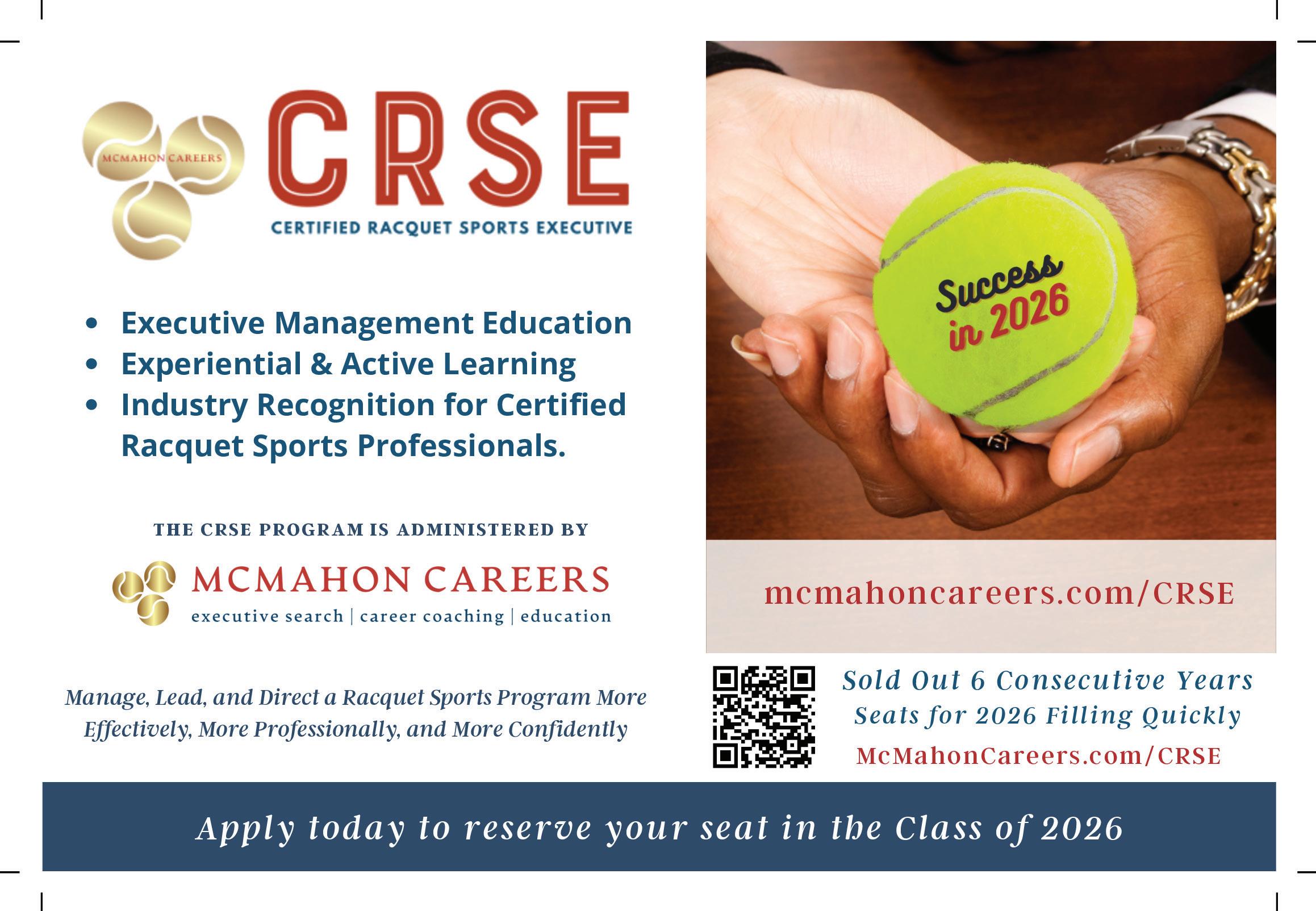
• Laykold is not re-purposed paint
• Advanced chemistry ensures greater court consistency
• Laykold’s sand blend delivers greater control of court pace and prolongs life of the court
• Higher quality latex means court pace lasts longer
• Laykold Gel is the world’s greenest court (60% recycled and renewable material
• Laykold’s automotive grade pigments retain color for longer
• Laykold’s is made in ISO certified factories in Germany, USA and Australia

• Laykold product yields are typically 10 to 20% greater than our competitors
Learning something new will wake up your brain—and can help wake up your career.
By Kim Bastable
You’ve heard the phrase before: “Invest in yourself.” But what does that really mean? And why does it matter so much?
Let’s start with your brain. Neuroscience tells us that the brain thrives on challenge. When we stop growing, stop stretching and stop seeking new experiences, we start to feel bored— not because life is dull, but because our brain isn’t being fed. Boredom is often a signal from the brain that we’re not engaging deeply with life.
Growth—even small steps—triggers dopamine, the motivation chemical. Learning a new tactic on the court, reading a business book, or practicing mindfulness can all wake up the brain and keep it thriving. In contrast, when we’re stuck in “maintenance mode,” our energy fades, our creativity dries up and burnout creeps in.
So, why don’t more people consistently invest in themselves?
Most of us think we don’t have the
time. Between work, family and daily chaos, investing in ourselves feels like a luxury. Others simply don’t know where to start. There’s a sea of content, and it’s overwhelming. Then there’s the mentor dilemma: Who do I even ask? Reaching out feels awkward. And there are additional barriers:
• Fear of failure. Some people are afraid they’ll try to grow and fall short, so they don’t start.
• Low self-worth. They don’t believe they’re “worth” the investment.
• Waiting for the perfect time. (Spoiler: There is no perfect time.)
• Lack of modeling. If you’ve never seen someone invest in personal development, it may not even be on your radar.
At a tennis club I worked with, we had two pros—I’ll call them Rick and Danny. Rick showed up early, studied his lesson plans, asked his students questions, and spent a few weekends
each year shadowing coaches at top academies. Danny, on the other hand, knew his drills by heart … because he’d been using the same ones since 1998. Rick, of course, was promoted, while Danny complained the club didn’t “see his value.”
Investing in yourself is more than just ambition—it’s self-leadership. In this complex world, none of us are born with everything we need for 80 to 90 years, and more and better opportunities come to folks like Rick, not Danny. Either you get ahead or you fall behind. So where do you start?
1. Tithe to yourself: Set aside 1% to 3% of your monthly income and create a “self-investment fund.” Use it to buy a book, take a course, attend a conference, or even book a night away to rest and reset.
2. Schedule your growth: Put it on the calendar like a match. One podcast per week, one journal session on Sundays, or one course per quarter. You manage what you schedule.
3. Find your team and be sure they inspire you: Seek out mentors, accountability partners or mastermind groups. You’re more likely to grow when you surround yourself with others doing the same. Leadership expert Jim Rohn says: “You are the average of the five people you spend the most time with.”
It’s not about being perfect. It’s about being intentional. No matter your role, investing in yourself is the greatest gift you can give your future. Remember: The players, teammates and family members around you aren’t just watching how you hit a forehand. The investment is small, maybe an hour a week. The return? Gamechanging.
Kim Bastable is the creator and lead instructor of the Director of Racquet Sports program at the University of Florida. A former NCAA AllAmerican and SEC champion player for the Gators, she has over 40 years of experience in racquet sports, including leadership roles at clubs and universities and as an on-court and mental performance coach. Contact her at kimbastable@ufl.edu.



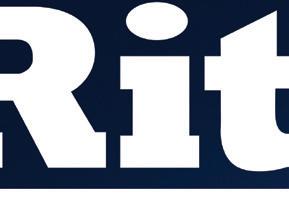





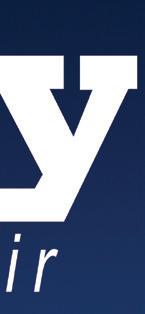

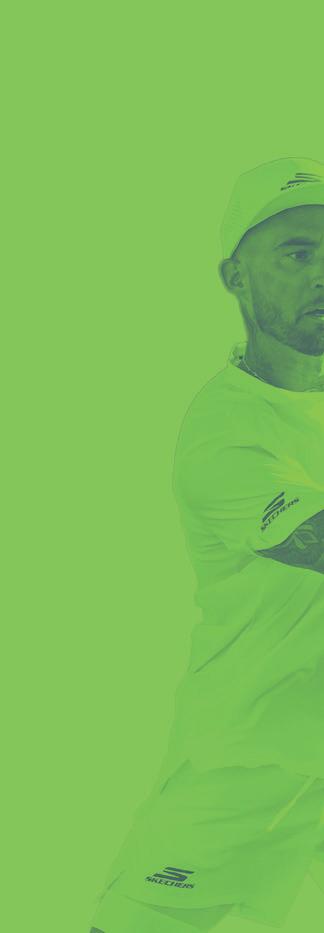























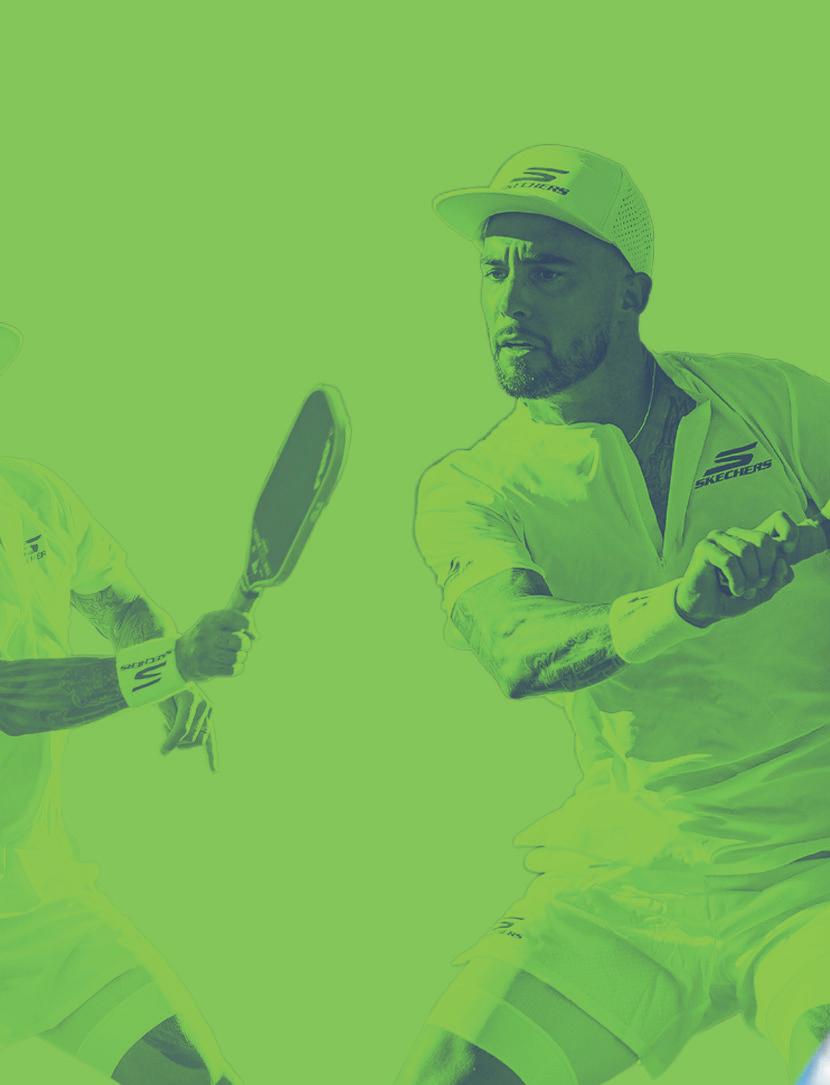











































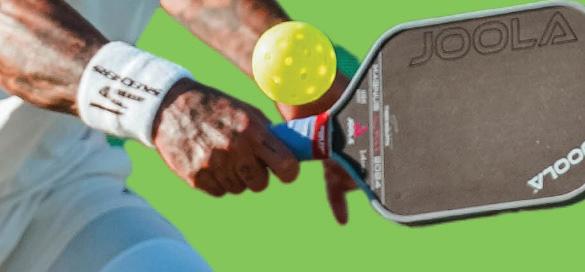




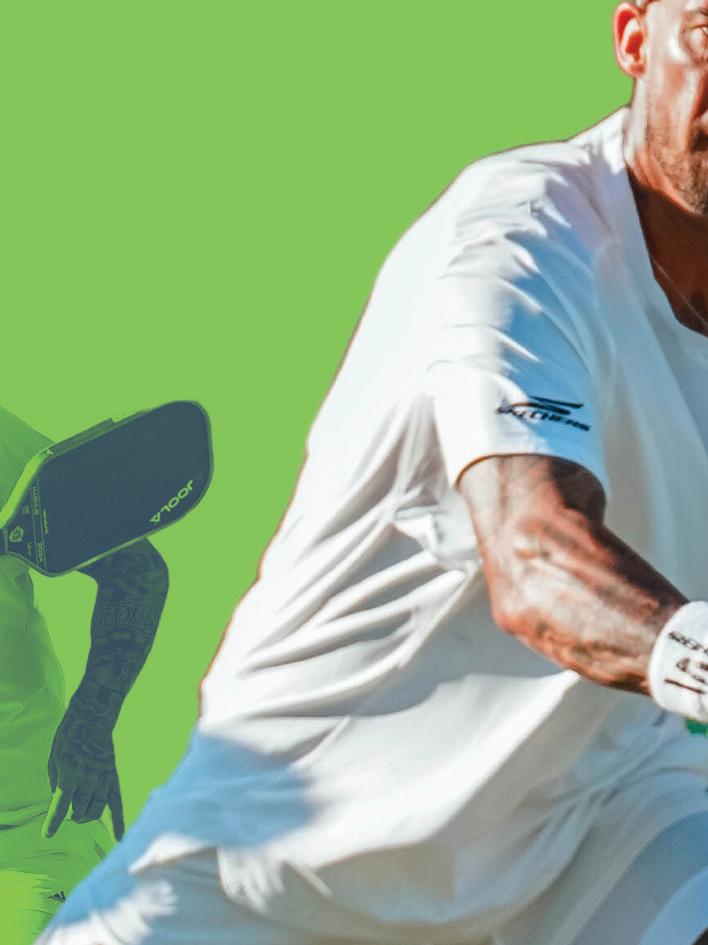










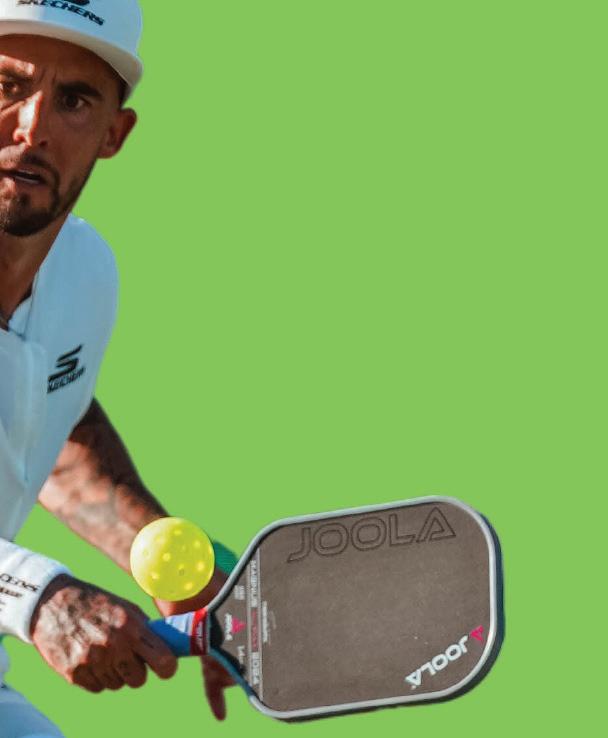








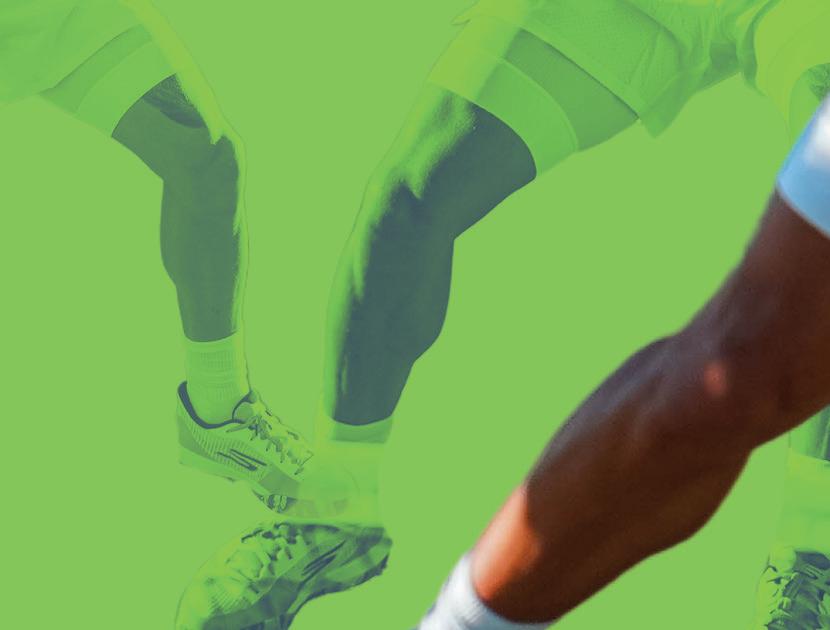

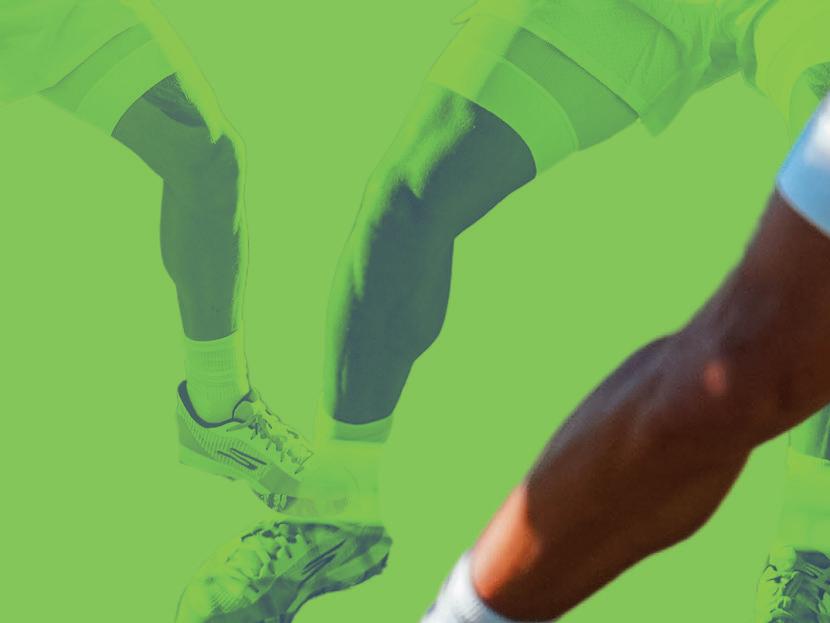














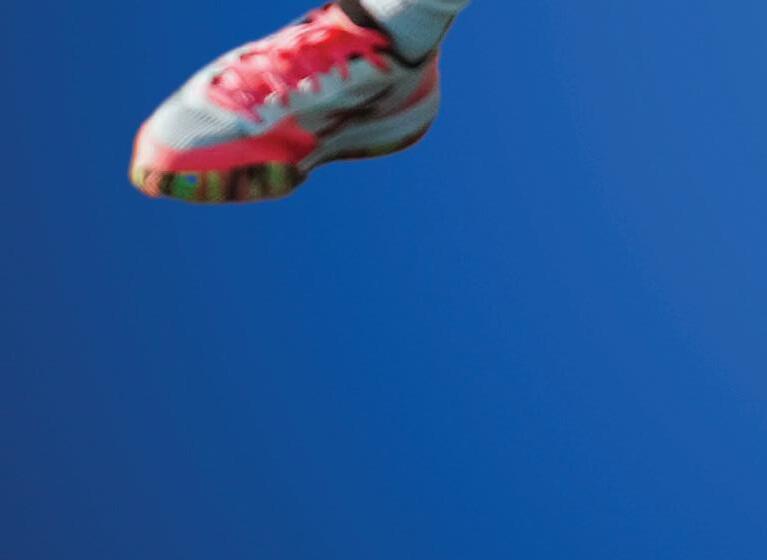





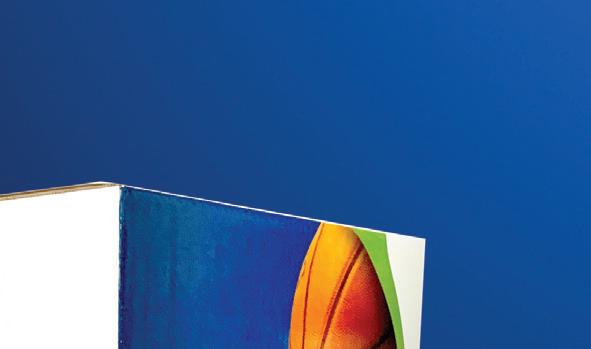





















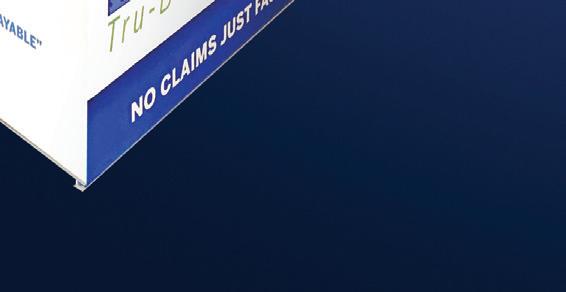



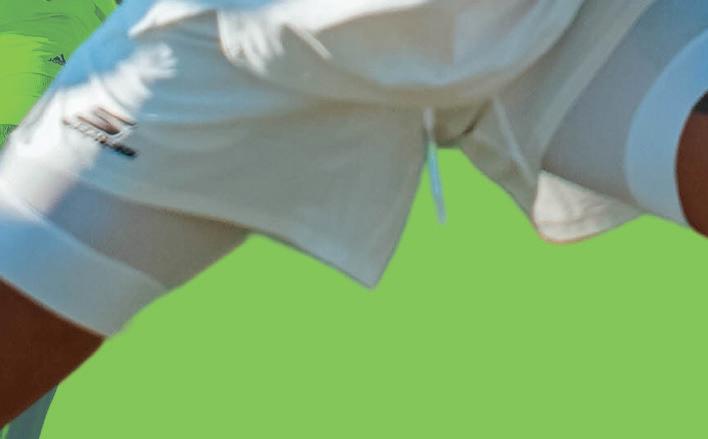




























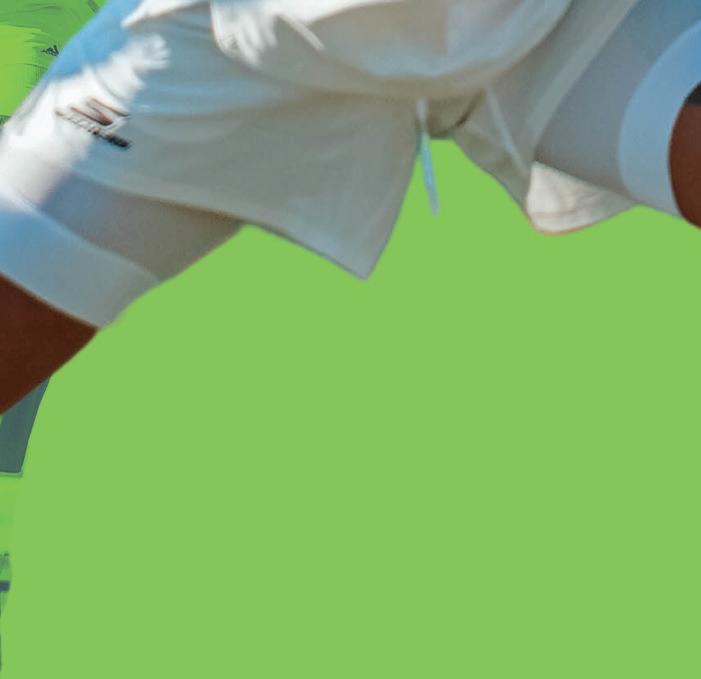
























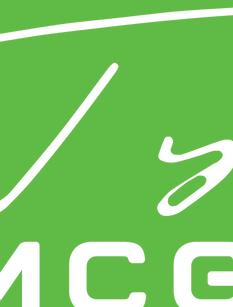

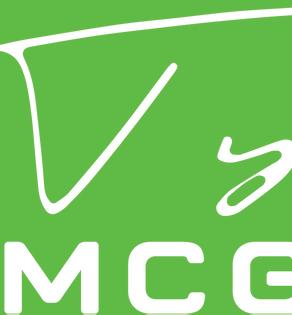

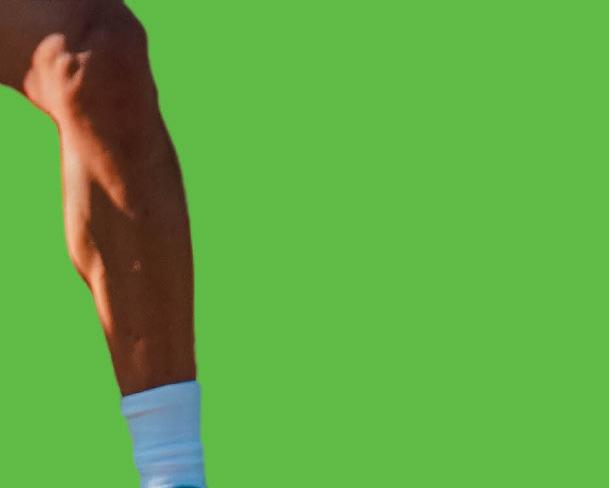
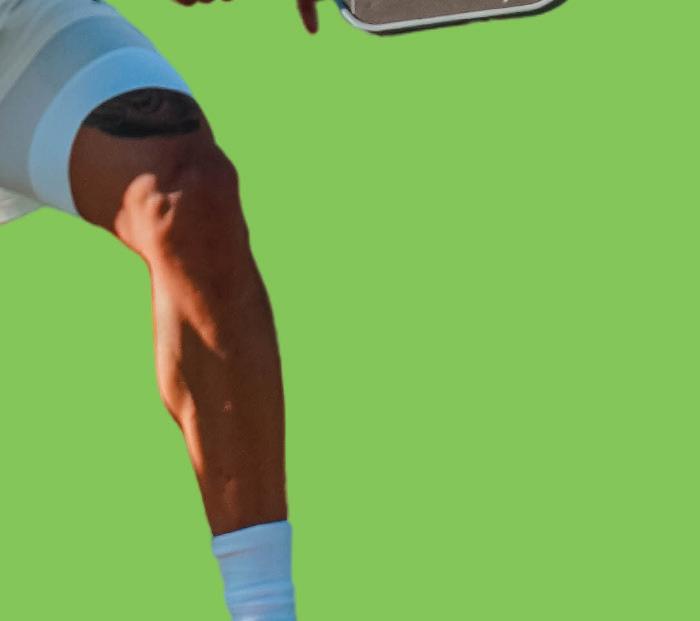








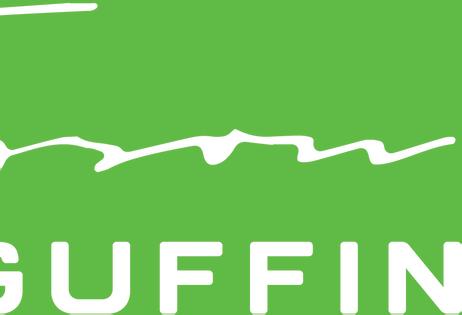





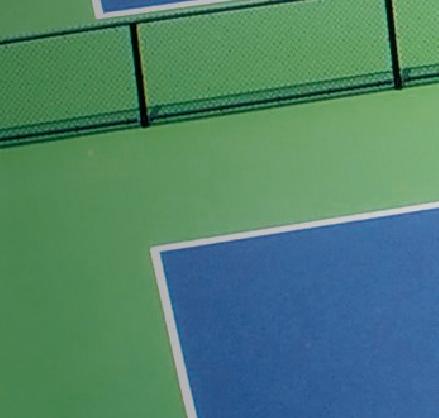


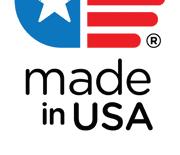

A world-class court begins with a foundation that seamlessly blends precision and strength. Our state-of-the-art posttension concrete system, ClassicCourt, is engineered to deliver consistent performance and unmatched durability.
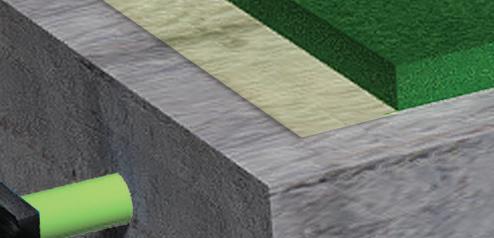
Our proprietary, patented, breathable liquid vapor barrier is engineered to regulate moisture release from the concrete slab. Controlling the rate of evaporation—especially after heavy rain—helps prevent bubbling and other surface issues in the acrylic layer.
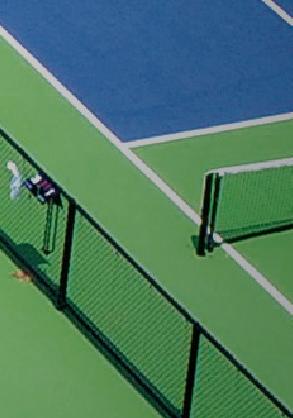

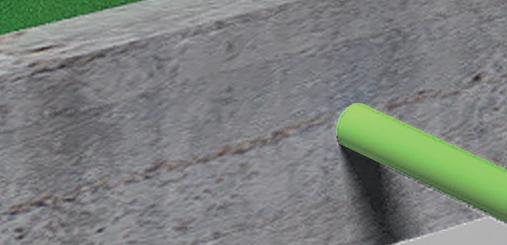
Once poured and tensioned, the concrete slab remains under constant compression. This allows it to ‘float’ over the subgrade rather than being rigidly anchored, absorbing ground movement and helping prevent shifting, settling, and cracking.
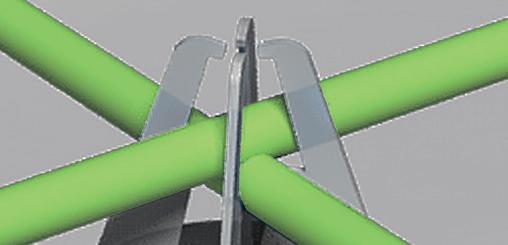
ClassicCourt uses high-performance 1/2” U.S. steel cables fabricated with virgin grease, powder-coated hardware, and an exclusive green sheathing exceeding 50 mils in thickness for superior corrosion protection.
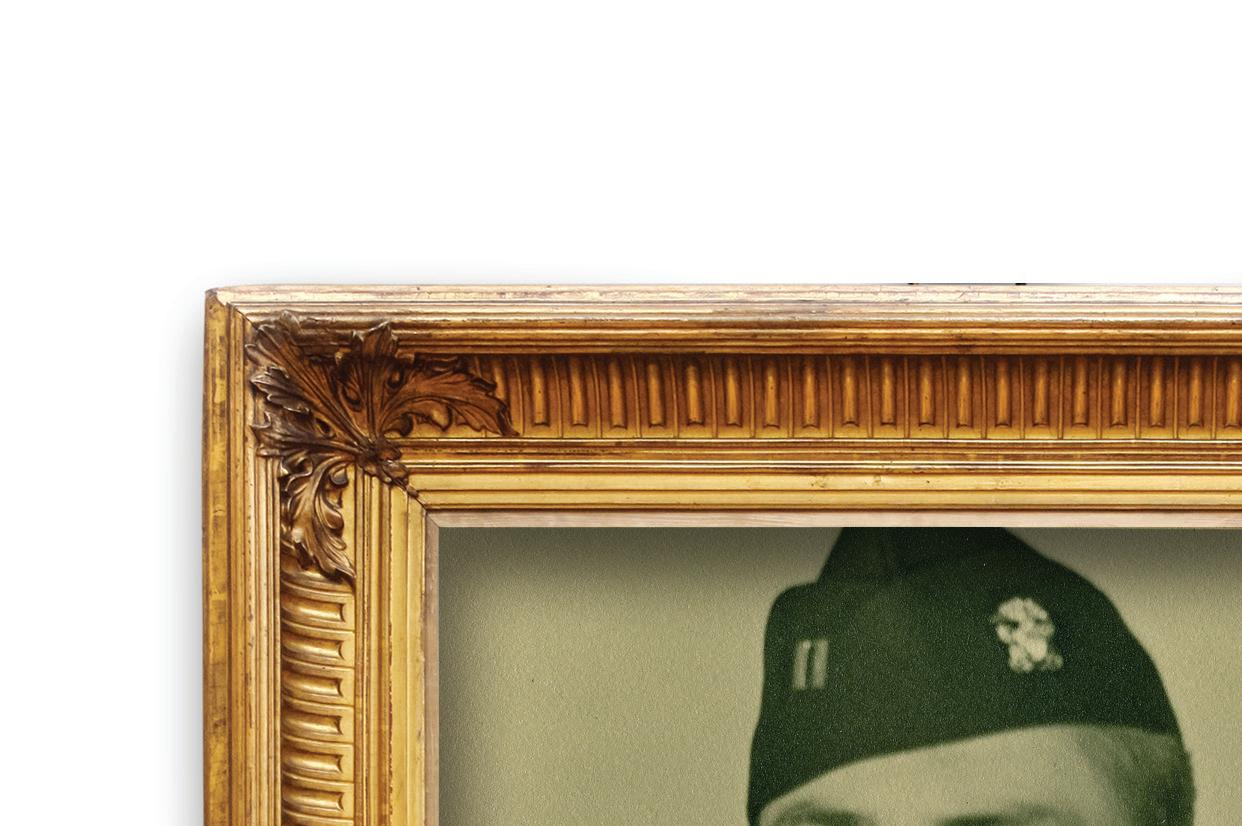
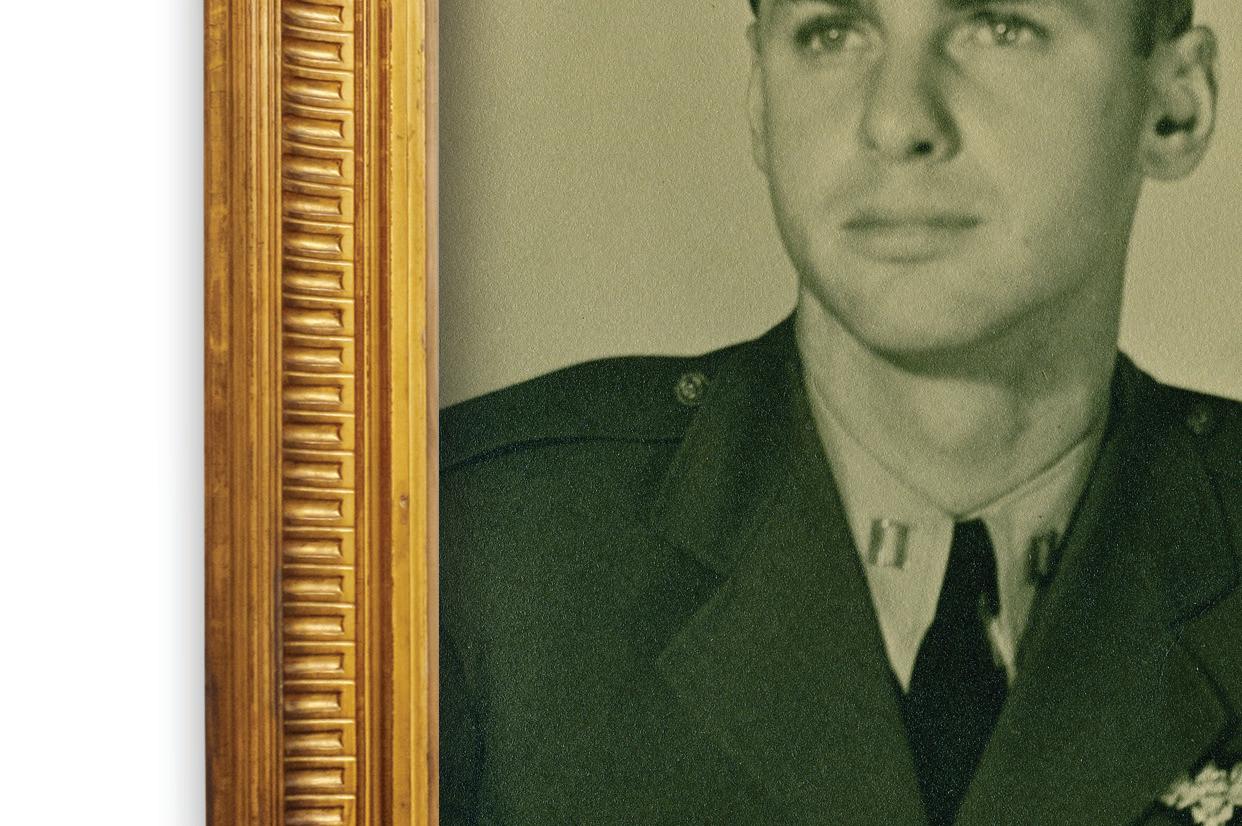

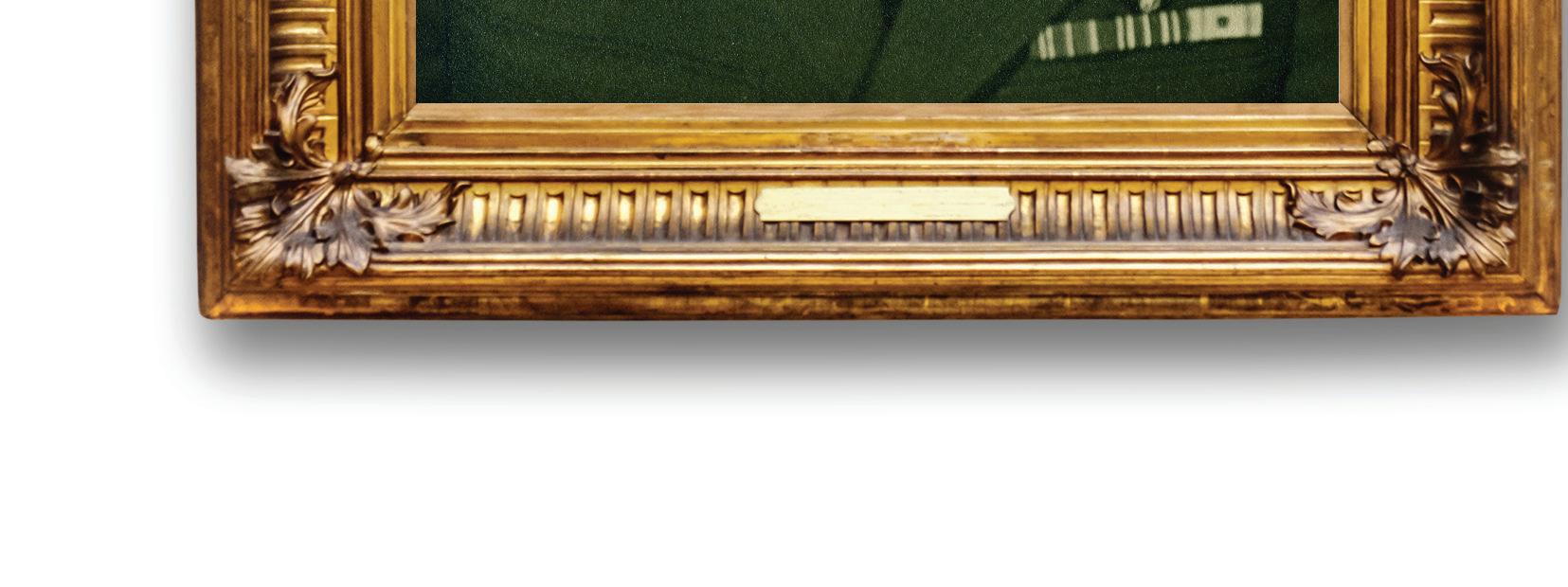
GROWTH OF THE GAME

war e ort.
By Kent Oswald
On May 8, the world celebrated the 80th anniversary of VE Day, and on Aug. 14, VJ Day. The war years marked a significant disruption for many things in the world, including for the sport of tennis and its participants. Before the war, the equipment norms were gut strings, pioneered by Babolat, and wooden racquets made by multiple manufacturers, most of whom would be slowly forced from business, unable to compete with the emerging “biggies,” Slazenger, Dunlop, Wilson and Spalding.
The Majors had all gone global after the French National Championship emerged from interclub play, welcoming international competitors in 1925. On occasion, the sport piqued the public’s imagination, as it did from Cannes in 1926 with the “Match of the Century” between France’s Suzanne Lenglen and America’s Helen Wills.
In 1933, René Lacoste, who along with the other three of France’s Four Musketeers claimed the Davis Cup from 1927-1932, co-founded the eponymous clothing company that became the first brand to feature a logo—an
alligator referencing Lacoste’s nickname. In 1935, the BF Goodrich rubber company released a shoe developed with Canadian badminton master Jack Purcell, seen on and o tennis courts for years to come.
Also that year, Britain’s Fred Perry became the first player to complete a career Grand Slam; Don Budge captured the first calendar year Grand Slam in 1938. And in 1937, ten years after initiating radio broadcasts, the BBC o ered the first tennis on TV, 25 minutes of fuzzy images from Wimbledon’s opening day match between Bunny Austin and George Rogers.
Then, momentum ceased. The Aussies’ 1939 Davis Cup team all enlisted in the military after claiming the tournament’s final victory, as did such other notables as Vic Seixas, Bobby Riggs, Simonne Mathieu, Gardnar Mulloy, Budge Patty, Ted Tinling, and Jack Kramer. Wimbledon (with Centre Court bombed in 1940) and the Australian Open were halted, and winners of the French Championships held at Stade Roland Garros (which had served as an internment camp at the war’s outbreak) during the war years are not recognized by the French Tennis Federation.
With minimal impact, the U.S. National Championships continued, notably in 1943 with Kramer, on leave from the U.S. Coast Guard, losing in the final to Navy Lt. Joe Hunt. Hunt, who was killed when his fighter plane crashed into the Atlantic Ocean in 1945, remains the only player in history to win the U.S. national boys’, junior, collegiate and men’s singles titles—and since 2019, the US Open has celebrated Lt. Joe Hunt Military Appreciation Day.
As for manufacturers, product shortages and changes in consumer focus had an obvious e ect on business. Slazenger supplied military gloves, bayonets and machetes (and even some tennis balls) to British forces. Spalding joined other New England
manufacturers in producing Browning automatic rifles. They also made leather helmets for men in tanks, as did direct competitor Rawlings.
Cincinnati manufacturer P. Goldsmith & Sons, a prominent tennis ball supplier of the 1920s and '30s, hid radios inside baseballs supplied to American POWs. String manufacturer Ashaway Line & Twine in Rhode Island produced emergency fishing kits for airmen downed at sea, along with parachute cords. And in a harbinger of post-war changes, Wilson in 1941 responded to rubber shortages by introducing its Victory tennis ball made of synthetic rubber.
War’s end in 1945 led to a greater public embrace of the game, evidenced by a growth in branding, development of innovative products, and an expansion of the player pool from beyond traditional environments.
Lacoste became more associated with branded sportswear than tennis accomplishment. Britain’s Davis Cup hero Fred Perry, who had become an American citizen serving in the U.S. Air Force from 1942 to 1945, would gain fame and fortune as the name associated with laurel-leaf-branded sportswear. Jack Kramer spent 1946 and '47 as a dominant amateur player, gave his name to the Wilson auto graph model (and series) that proved history’s best-selling racquet, and then headed up a popular pro tour.
There also were important steps to try to break from the “country club” elitism of the sport. In 1947, America saw its first tennis television broad cast, a tennis clinic by George Agutter broadcast from Forest Hills. Building on the social integration and com mercial innovation of the war years, champion Alice Marble, who claimed

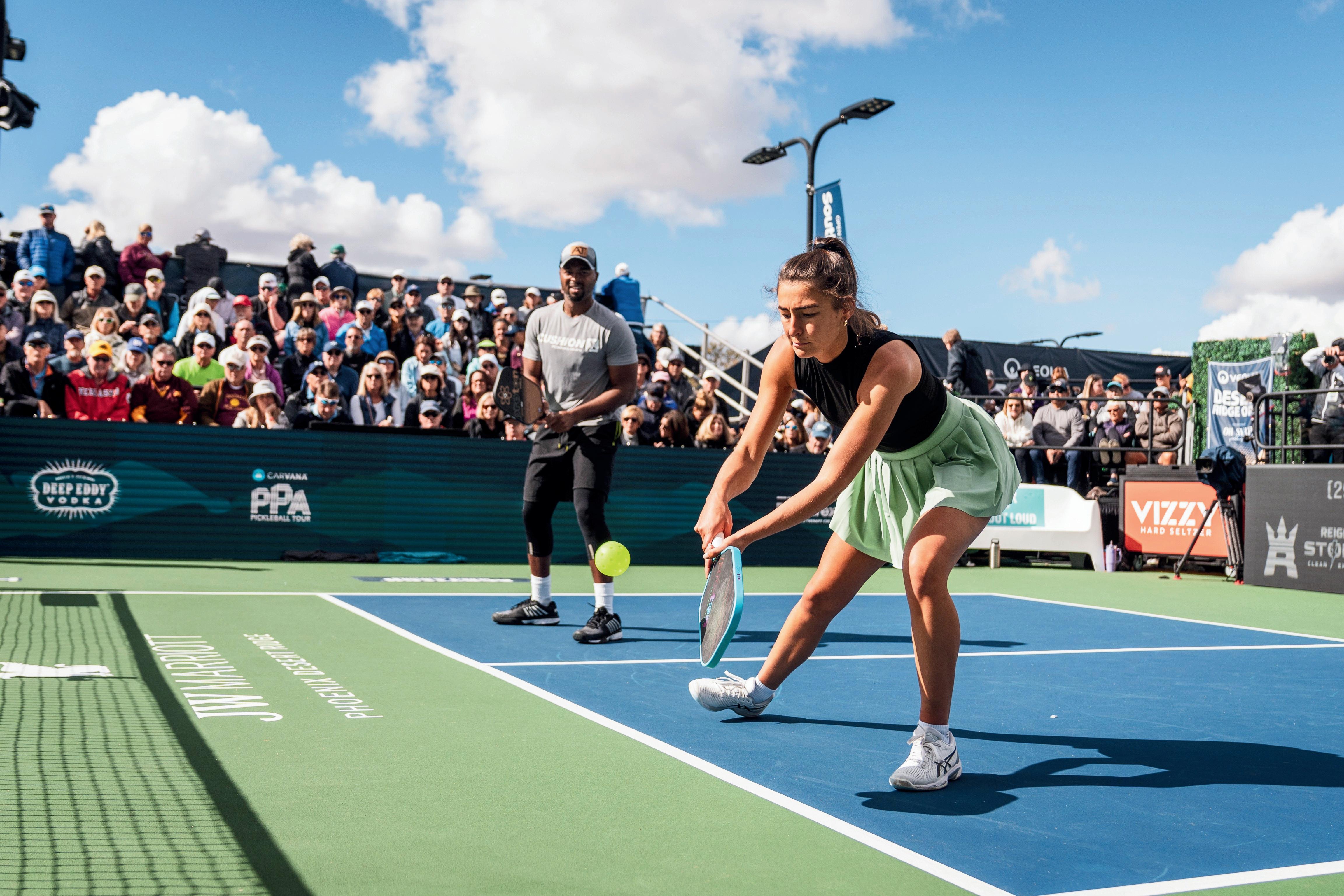

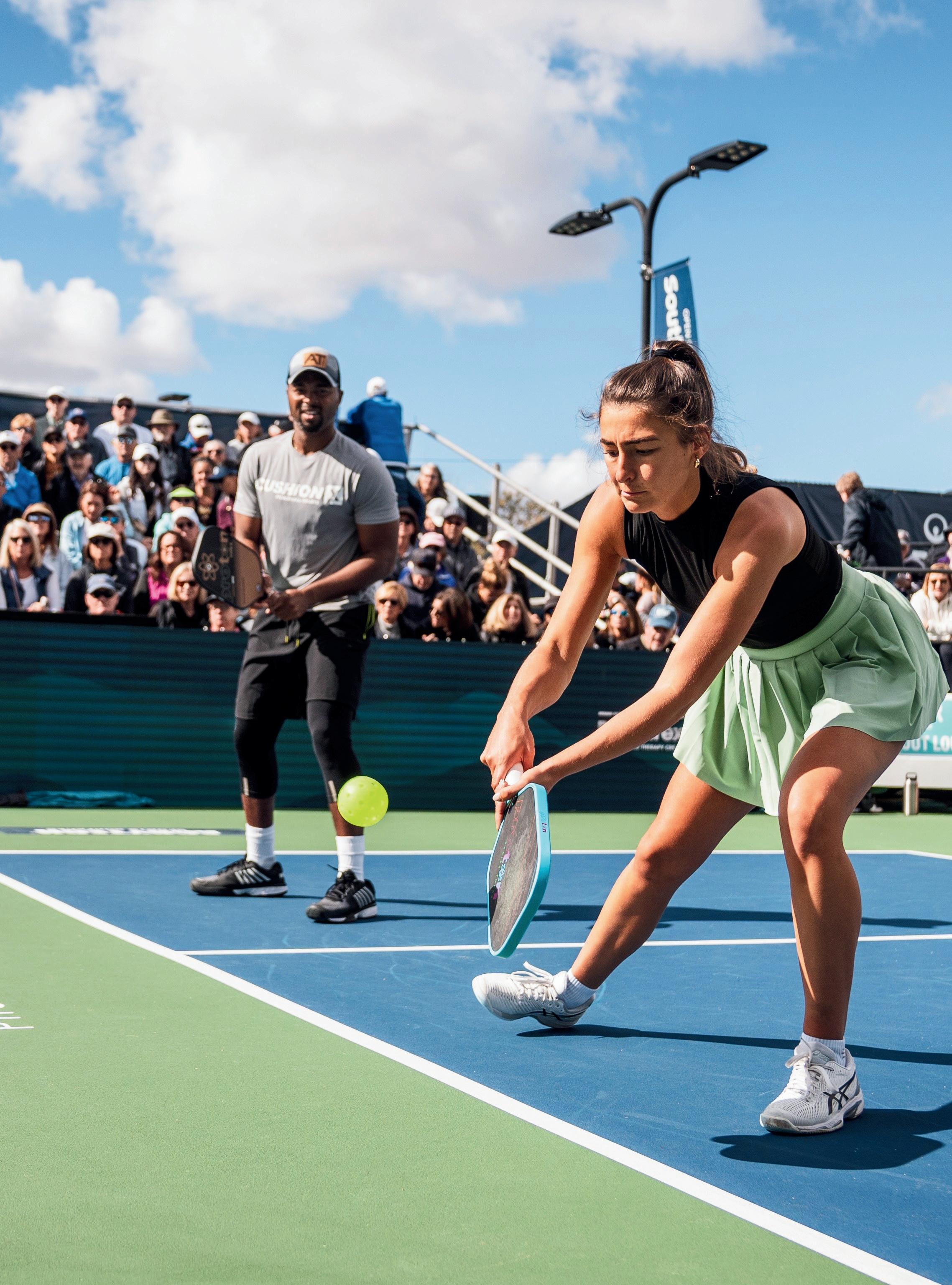










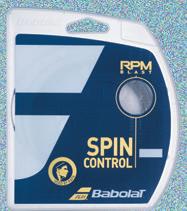



NYC retailer Mason’s Tennis celebrates its 50th anniversary, and its
owner reflects on lessons learned from following a passion.
By Judy Leand
Only about 25 percent of small businesses survive for 15 years or more, according to the U.S. Bureau of Labor Statistics, and just 5 percent manage to remain open for 30 years.
A business that prospers for 50 years is part of an elite group. And Mason’s Tennis, located in New York City’s Mid-
town, has now earned that distinction.
When owner Mark Mason opened his store in 1975, during the height of the tennis boom, there were 11 tennis shops in New York City. Of that group, Mason’s Tennis is the lone survivor.
“The secret to longevity in any business is passion,” says Mason. “Do what you love and love what you do.

“Strategize to consider the impact your next move has on your end game. Passion drives us to be the best we can, both in retail and on the tennis court.”
All of this passion has found an outlet in exceptional customer service.
“We have always understood that engaging and creating a strong, customercentric relationship is the foundation to our success,” explains Mason. “Developing this bond wins spectacularly for our tennis enthusiasts and our brand identity. We become a reliable one-stop shop. This a major advantage we have over large internet retailers.”
He adds that today, more than ever and especially in light of e-commerce, customers relish a personal touch.
The key, says Mason, is to listen to and respond to consumer needs with immediacy, and to exceed expectations. For example, a tennis enthusiast recently visited Mason’s Tennis and wanted a racquet that wasn’t in stock.
“So, I left my shop in a torrential downpour to pick up the desired racquet at a store that I have reciprocity with,” he recalls. “My shop then had it strung in time for his requested pickup. He was thrilled.”
Such memorable experiences heighten customer satisfaction and promote word-of-mouth advertising, which in turn attracts new and repeat business.
Mason’s Tennis prides itself on being a luxury tennis brand with experiential intimacy: “We are global in scope with a strong local clientele and are a trusted source for all things tennis,” says Mason. If we don’t have it, we get it.”
The racquet department’s sta boasts more than 100 years of collective knowledge and experience, and the clothing department is supervised by personable employees. Mason’s daughter, Dana, has served as buyer for more than 20 years and brings a fashionforward sensibility.
“Dana has a great sense of where the market is going and aims to be first to market,” says Mason. “She is always on
the lookout for beautiful brands that are iconic and exclusive to Mason’s Tennis.”
Women’s apparel brands include Monreal London, “which years ago o ered us an exclusive to launch its first-ever tennis clothing line,” says Mason. Following that came ladieswear partnerships with Lucky in Love, Michi and SofiBella. Among other popular brands showcased in the store are Adidas, B-Sport, Nike, On and Wilson.
Mason’s Tennis has always excelled in anticipating market trends, having been one of the first U.S. tennis shops to embrace Italian powerhouse apparel brands Fila, Ellesse and Sergio Tacchini in the 1970s. Mason’s also introduced Babolat racquets in 2000-2001.
“Babolat was known for strings and grips, not racquets. We knew that the Spanish Davis Cup team, especially Carlos Moya, began using Babolat racquets. We took a chance and Babolat gave us the exclusive in NYC for three
years,” recounts Mason.
“Then, Andy Roddick won the US Open using a Babolat racquet. The rest is history.”
The shop’s vast inventory—spanning shoes, racquets, strings, bags and apparel, plus a large children’s selection—appeals to local clientele as well as tourists. A strong racquet demo program is also on o er, which Mason pioneered in 1974 when he worked for Feron’s, a tennis shop that operated in NYC from 1919 to the mid-1970s.
Adaptability is another marker of success, and in the current racquet sports environment, expanding beyond tennis has become a necessity.
“Pickleball and padel are now prominently displayed in our tennis boutique,” Mason says. “Although they’re a small part of our overall business, they are necessary and welcome additions.”
PLAYMATE_Ball_Machines_Half_Page_Ad_700_by_475_12_2024.pdf 1 12/17/2024 8:02:09 AM


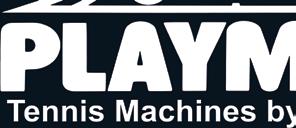

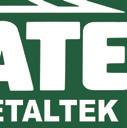
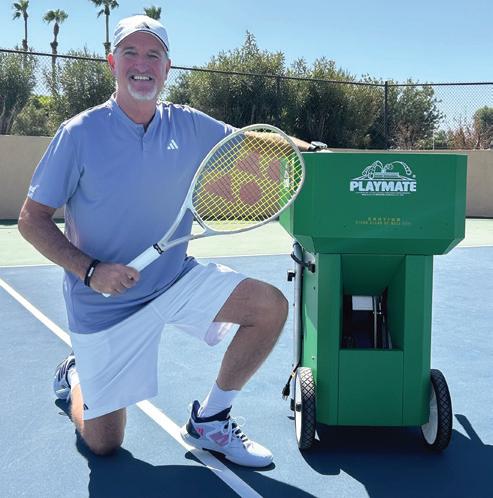
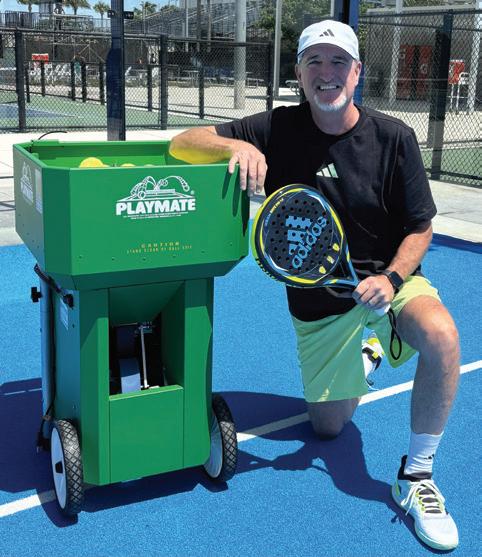
Looking ahead, Mason admits that he is often asked if he would consider selling Mason’s Tennis.
“At this stage of my life, still being a very much hands-on, albeit older, owner, my answer is yes,” he says. “Maintaining brand integrity as the preeminent tennis brand of choice for our customers’ life journey will continue the legacy I have built over the past 50 years.”
In the meantime, Mason’s Tennis remains resilient.
“We got through catastrophic events such as 9/11 and Covid,” Mason says. “Now, tari s are creating uncertainty with pricing. As a specialty retailer, we remain agile and optimistic as we seek solutions.”
As for continued longevity, Mason’s advice to all retailers is: “Focus on your strengths. Adapt well to market adversity with positivity, knowing that tomorrow brings new opportunity.”
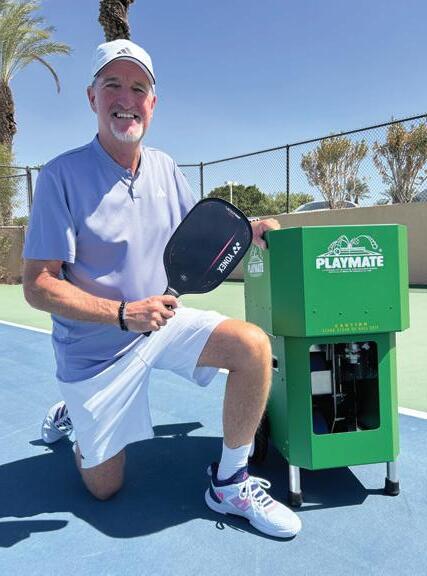




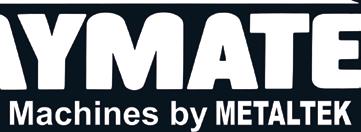








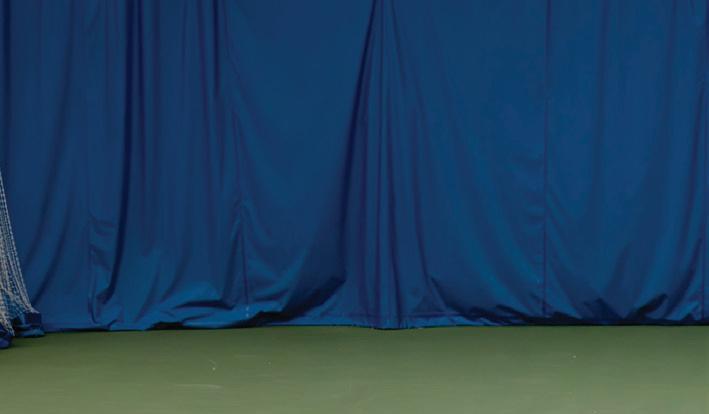
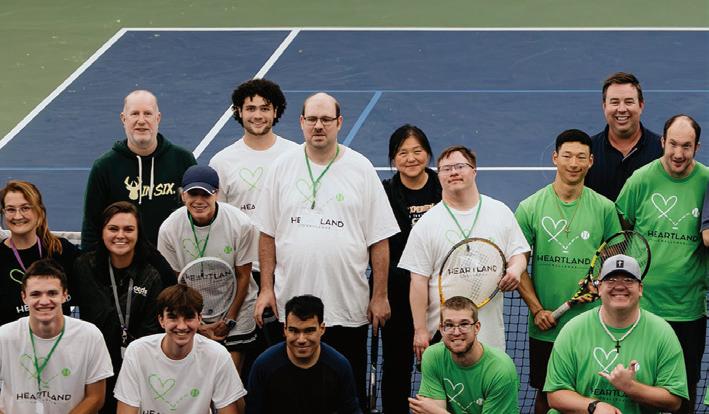
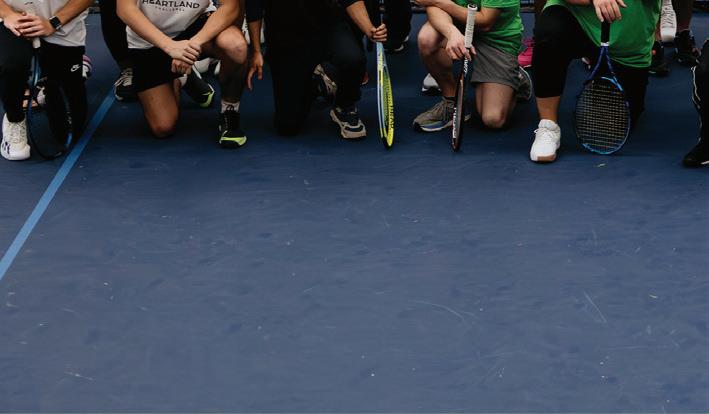
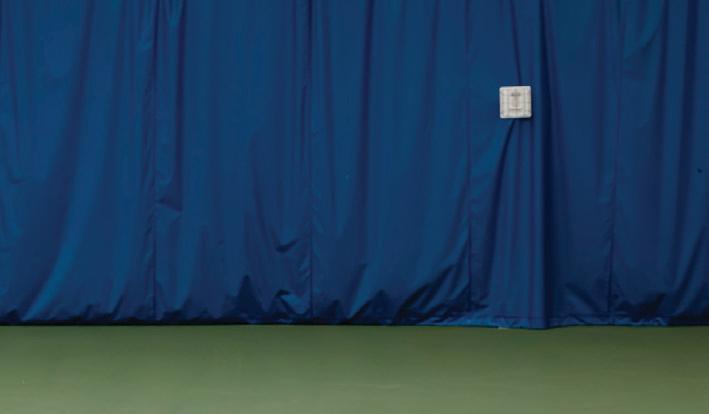
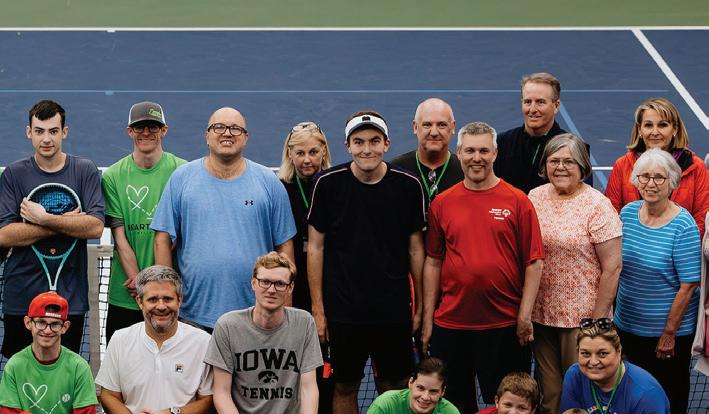

With passion, dedication and hard work, these wheelchair and adaptive tennis athletes and organizers are raising the game in their communities.



Haley Waggoner and Wyatt Spalding from Lincoln, Neb., had played in many adaptive tennis events throughout the U.S., but because there were so few held in the Midwest, they decided to create their own: the Heartland Challenge, which took place in April at Woods Tennis Center in Lincoln. Thirteen high-performance adaptive athletes from Florida, Massachusetts, Virginia, Illinois, Missouri, Iowa and Nebraska competed in the inaugural tournament.
“There are adaptive athletes who want to compete, but it’s challenging when there are not many options,” Waggoner explains. “We wanted Midwest players to travel close to home.”
The Heartland Challenge joined two other similar events in the U.S. as unique opportunities for nationally ranked Special Olympians to showcase their skills. In addition to the tournament, Heartland Challenge attendees participated in on-court games, a clinic and social activities.
Several volunteers and sponsors, including USTA Missouri Valley and USTA Nebraska, helped make the event a reality, as did Kaitlin Roselius, Woods Tennis Center director of community outreach and evaluation.
“Many tennis folks don’t know a lot about adaptive tennis, so to get to see [these] top players in action was a great learning experience,” says Roselius, recipient of the 2024 Outstanding Diversity Achievement Awards from both USTA Nebraska and USTA Missouri Valley. “Another goal was to continue helping to foster the sense of community for these athletes and their families that so many of the rest of us might take for granted.”
—Andrea Gallagher & Josh Sellmeyer



Lynn Bender from Zeeland, Mich., was honored with the Brad Parks Award at the 2025 USTA Annual Meeting & Conference in Carlsbad, Calif. First presented in 2002 by the USTA and the International Tennis Hall of Fame, the honor recognizes an individual or group that promotes wheelchair tennis and provides opportunities to wheelchair players through the development of programs.
Bender has been playing tennis her entire life, opening doors along the way for athletes with disabilities. Her husband, Curt, has been a wheelchair tennis athlete for years and led her to become deeply involved in the wheelchair tennis community.
Lynn has worn a variety of coaching hats including as a certified tennis pro, head coach of the Holland Christina High School girls’ tennis team, collegiate wheelchair tennis coach, and a camp instructor at the annual USTA/ITF Cruy Foundation camps. She co-founded the non-profit Grand Rapids Wheelchair Sports Association, serving as a tournament director at the Grand Rapids USTA and ITF tournament. She has also been a dedicated USTA Midwest Section and USTA National Wheelchair committee member for many years.
“The Brad Parks Award was created for people like Lynn, who have dedicated much of their tennis lives to the growth and success that wheelchair tennis has enjoyed, and will continue to for many years ahead,” says Theodore Loehrke, managing director of Section Partnerships for the USTA. —Molly Kinnick

Kathy Connelly, a teaching pro at Village Glen Tennis & Pickleball in Williamsville, N.Y., says her whole life has been shaped by her sister, Marni, who has autism.
Connelly was thinking of Marni one morning in September 2022 when she talked to the head professional at Village Glen Tennis & Pickleball, Robert Gregoire, about starting a tennis program for those with special needs.
Gregoire embraced the idea of creating a program and he connected Connelly with the national non-profit ACEing Autism, a volunteer-driven organization dedicated to helping children with autism grow through tennis. Learning about the organization motivated her even more to get something started in her own community.
“Partnering the Village Glen with ACEing Autism made all this happen,” Connelly says.
After much planning, Connelly launched the Buffalo ACEing Autism chapter in February 2023. From the outset, she realized she was filling a need. If the perpetual waiting list—10 to 12 children for every 30-person, four-week session—isn’t enough of an indicator, Connelly points to over two years of kids racing on court at the start of each class, their faces lit up with joy.
That excitement, she says, is a credit to ACEing Autism’s finely tuned curriculum.
“The children have a predictable routine, and I think that really leads to success,” she says.
It certainly has—for the kids and for the program itself. Thanks in part to positive parent feedback, ACEing Autism, which has about 180 programs nationwide, named the Village Glen chapter its 2024 Program of the Year. —Scott Sode

With ACEing Autism’s finely tuned curriculum, children have a predictable routine, which leads to success.


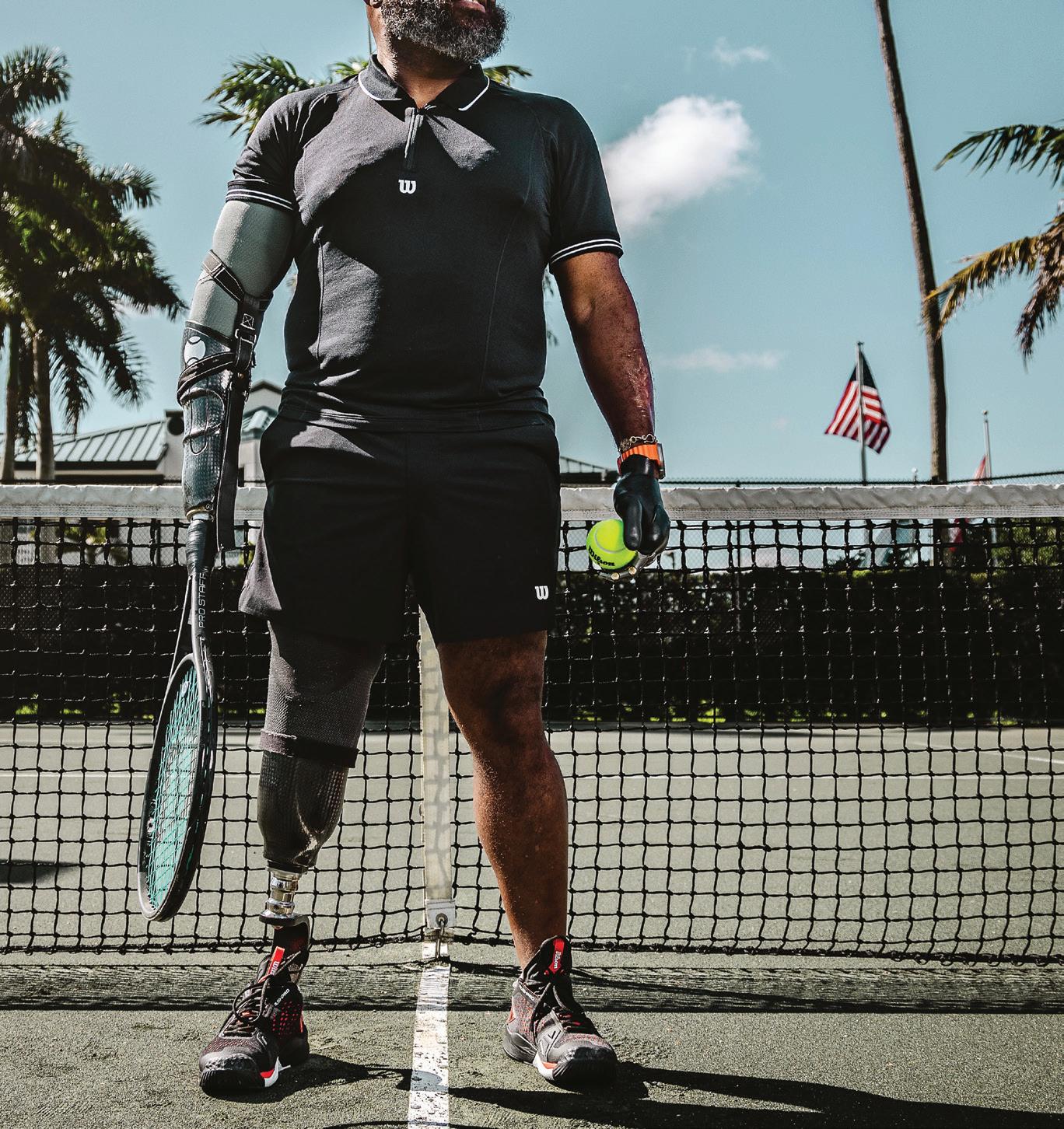
Kemit-Amon Lewis’s journey back to competitive tennis is a testament to resilience, innovation and the power of community. His connection with both Wilson Tennis and Junior Tennis Champions Center, a non-profit based in College Park, Md., has been instrumental in his return to the sport.
In 2019, while working in St. Croix as a marine biologist, Lewis contracted a severe bacterial infection resulting in the amputation of his right hand, right leg and parts of his left fingers and toes. Despite these hardships, he was determined to return to his active lifestyle. With the support of Wilson, Lewis was able to customize equipment, including a specialized prosthetic arm attachment for his tennis racquet.
“Wilson has been incredible in helping me find the right gear,” Lewis explains. “Having
equipment that’s tailored to my needs has made a huge difference in my confidence and performance.”
His determination and hard work led him back to competitive tennis, where he participated in the 2024 Para Standing Tennis World Championships in Italy. During the tournament, Lewis met two other individuals associated with JTCC: former JTCC coach Karl Lee, and JTCC para standing player Nicky Maxwell. “I had heard about JTCC, but I didn’t know about the Adaptive program until I met them. Once I got here, I knew it was the right place for me,” Lewis says.
Lewis’ training at JTCC and his partnership with Wilson reinforced his belief that determination, adaptability and the right support system can help athletes of all abilities excel. —John Niswander
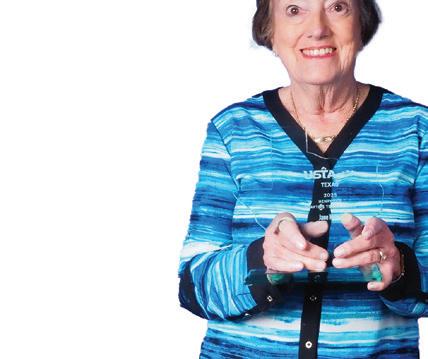

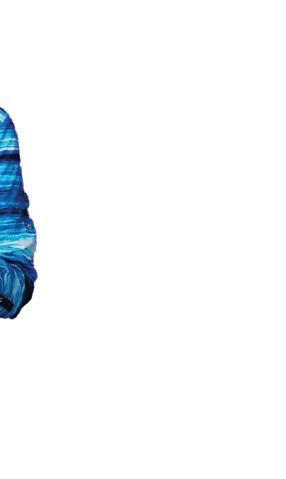
Jane Morrill’s unwavering commitment to inclusivity in sports is remarkable. With over 20 years of service on the Dallas Tennis Association Board, she has held various roles at the city, state and national levels, and this year received the USTA Texas Henry Cox Adaptive Tennis Award.
Morrill’s passion for accessible sports is evident in her hands-on approach to the Dallas Tennis Adaptive program. She is the driving force behind the initiative, managing logistics for hundreds of participants. From coordinating with sta and recruiting volunteers to ensuring proper equipment and overseeing program growth, her dedication is unparalleled. She takes personal responsibility for the program's success, facilitating weekly sessions for 30 weeks annually, and fostering a welcoming environment for diverse participants. Morrill’s tireless e orts have been instrumental in expanding opportunities for adaptive athletes in the Dallas area and beyond.
“Jane is an incredible volunteer who is always responsive and consistently gets the job done,” says Cindy Benzon, USTA Texas Adaptive & Wheelchair Tennis Coordinator. “Not only does she coordinate multiple adaptive tennis sites in the Dallas area for hundreds of athletes, but she also volunteers as a ‘Ball Babe’ at the North America Para-Standing tournament every year.”
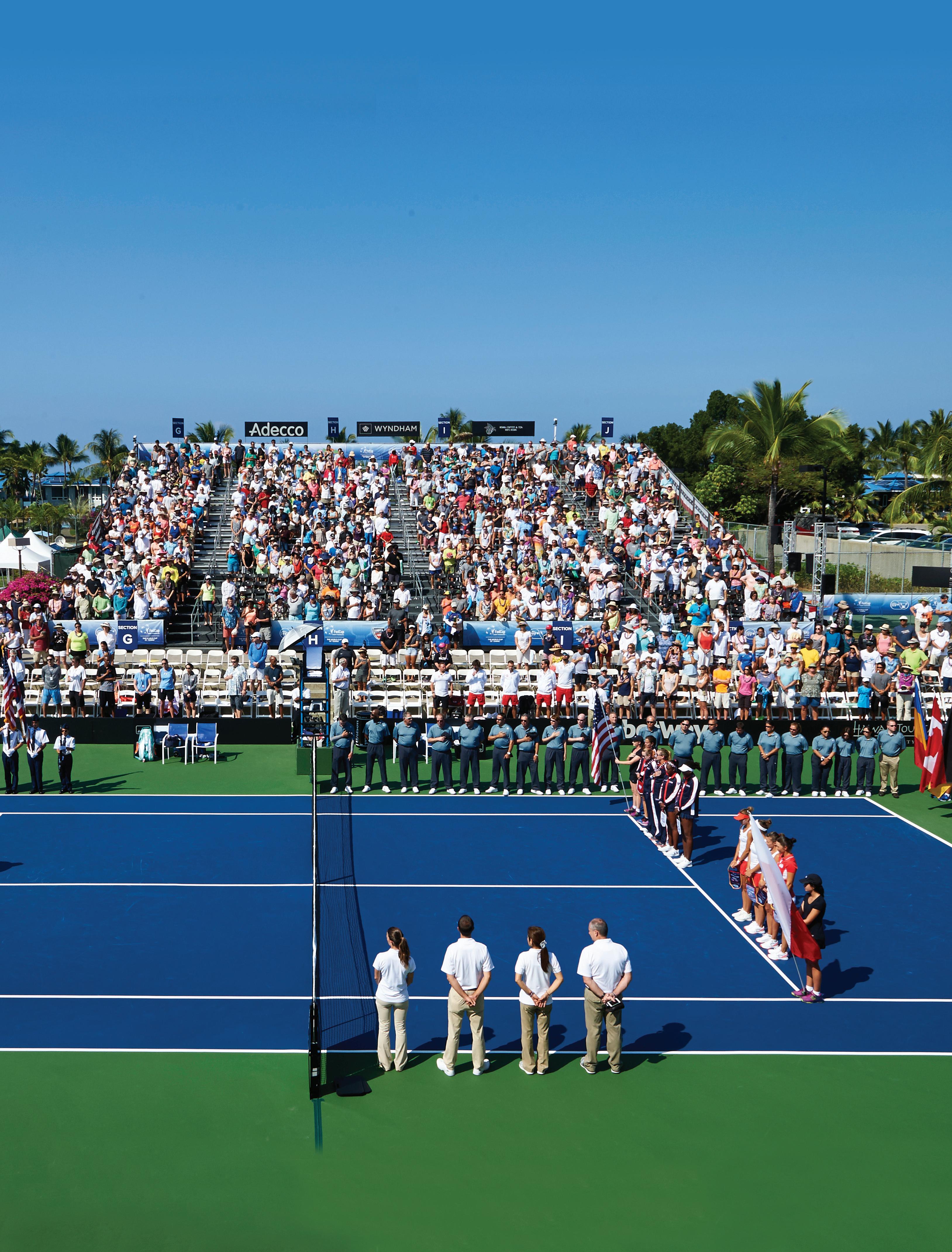

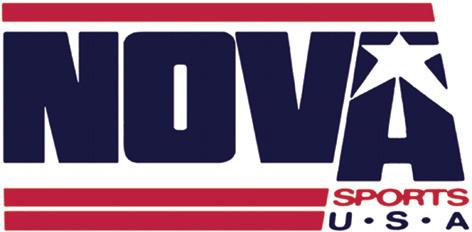
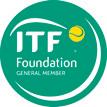
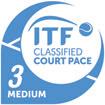
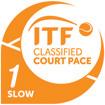
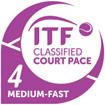
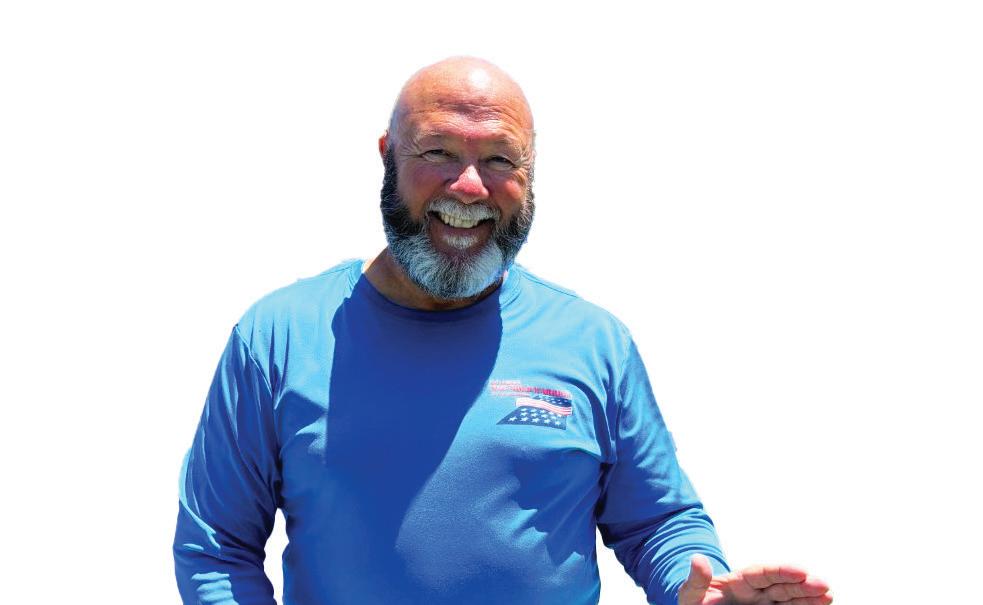
Army veteran Mark Gorden wasn’t a tennis player when he completed his 23-year career in 2010, but through the San Diego Wounded Warrior Tennis Program, he found a path to wellness and a way continue to serve his community in a di erent type of uniform: the distinctive bright blue shirts awarded to key members of the program for meritorious volunteer service.
Gorden learned about the program from a VA recreation therapist 10 years ago, and since then has become the most consistent participant in weekly clinics. He now plays in the highest-level skill group.
His passion for tennis and for helping improve the lives of his fellow veterans is unmatched and has catapulted him to the rank of Senior Ambassador for the program.
Gorden has invested more than 1,000 volunteer hours to help set up and run 300 weekly clinics and represent the program at community outreach events. Always cheerful and encouraging, he has been—in military terms—a force multiplier, who has helped dozens of veterans improve the quality of their lives through the sport of tennis.
“Tennis was the gateway to living a normal civilian life and has been good for my sanity,” says Gorden. “It has given me a sense of purpose, and as a result, I’m inspired to help make this program as successful as possible.”
—Steve Kappas

Andrew Bogdanov’s passion for tennis was ignited during Covid in 2021, when he and some friends decided to grab a couple of racquets and give the game a try. That experience quickly led to complete immersion in the sport for the 31-year-old, who just over a decade ago was left paralyzed from the chest down after a snowboarding accident.
For Bogdanov, a fitness coordinator in Prescott, Ariz., tennis training became a daily occurrence, and as he played more, his journey became clearer. In 2022, only a year into the game, he had improved so rapidly that he sailed right through the wheelchair beginner, intermediate and advanced stages. That same year, he served as a technician at the US Open,
In May, Greg Scott earned the Champion in the Community Award at Jefferson Moss-Magee’s Night of Champions event, benefiting the hospital’s patient and community programs.
Scott’s connection to the rehab hospital began in 2017 in an e ort to recruit sled hockey players. But volunteering and tennis soon became priorities. Scott was asked to attend a tennis team practice, and he realized coaching wheelchair tennis was in his future.
“When I showed up to my first practice at RiverWinds Tennis Club in South Jersey, there were about six players hitting balls with no real direction,” Scott recalls. “By the end of the practice, they were asking if I would come out on a regular basis.”
Now he coaches the team every other Sunday, and the tennis program boasts 20 participants.—Katie Miness
repairing wheelchairs, and set about to get national and international experience with tournaments.
By 2023, Bogdanov had become a Team USA member, reached the Top 25 in the world, and made an appearance at the US Open, this time as a player in the wheelchair quad division. In May 2025 in Turkey, Bogdanov went 5-0 for Team USA at the BNP Paribas World Team Cup and earned a career-high world ranking of No. 16. He has traveled to more than a dozen countries for tournaments.
“Tennis has been a real tool for me to get to do so many things and have a great time,” says Bogdanov. “I really get the best of all worlds with tennis.” —Jeff Sikes
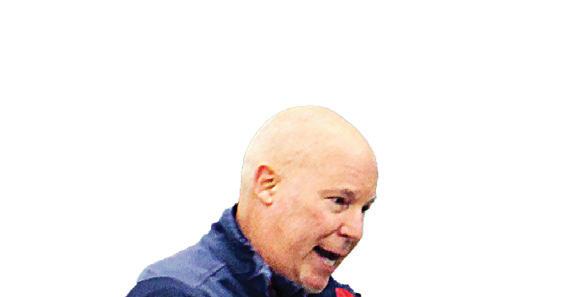
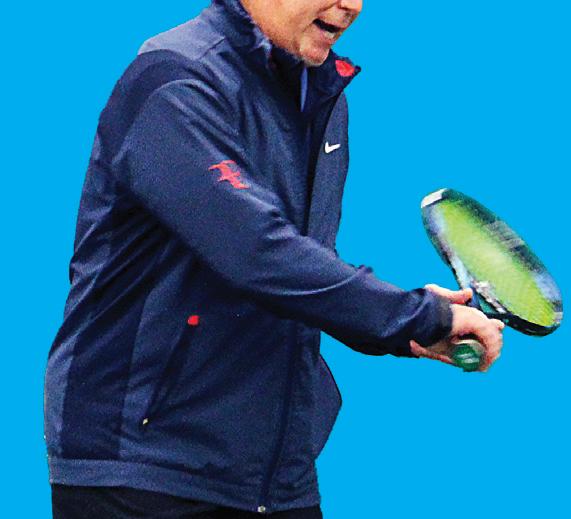
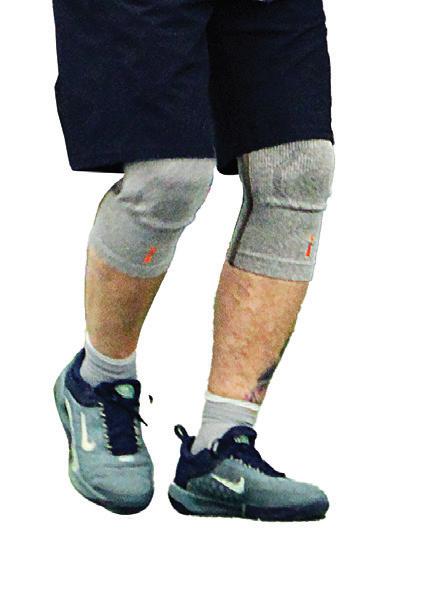
Scott is a certified wheelchair tennis coach and an RSPA Level One certified coach.





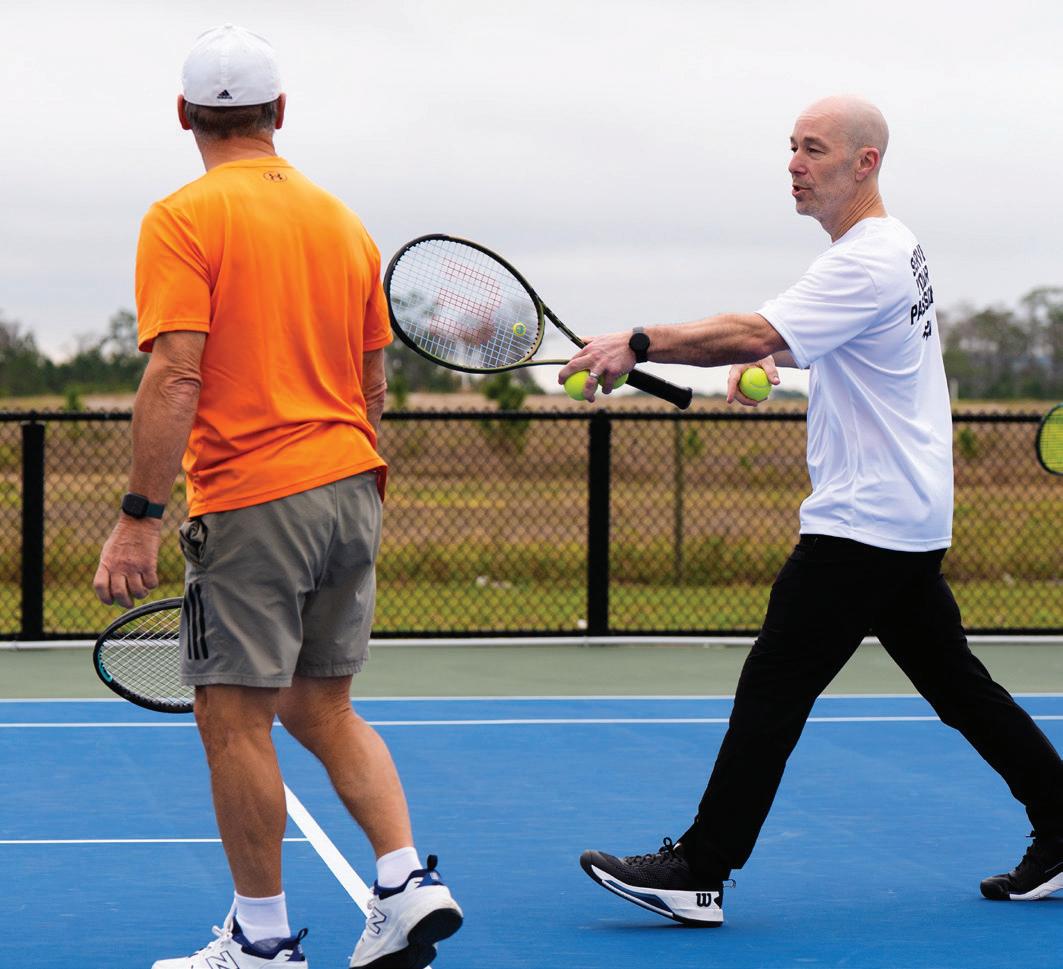
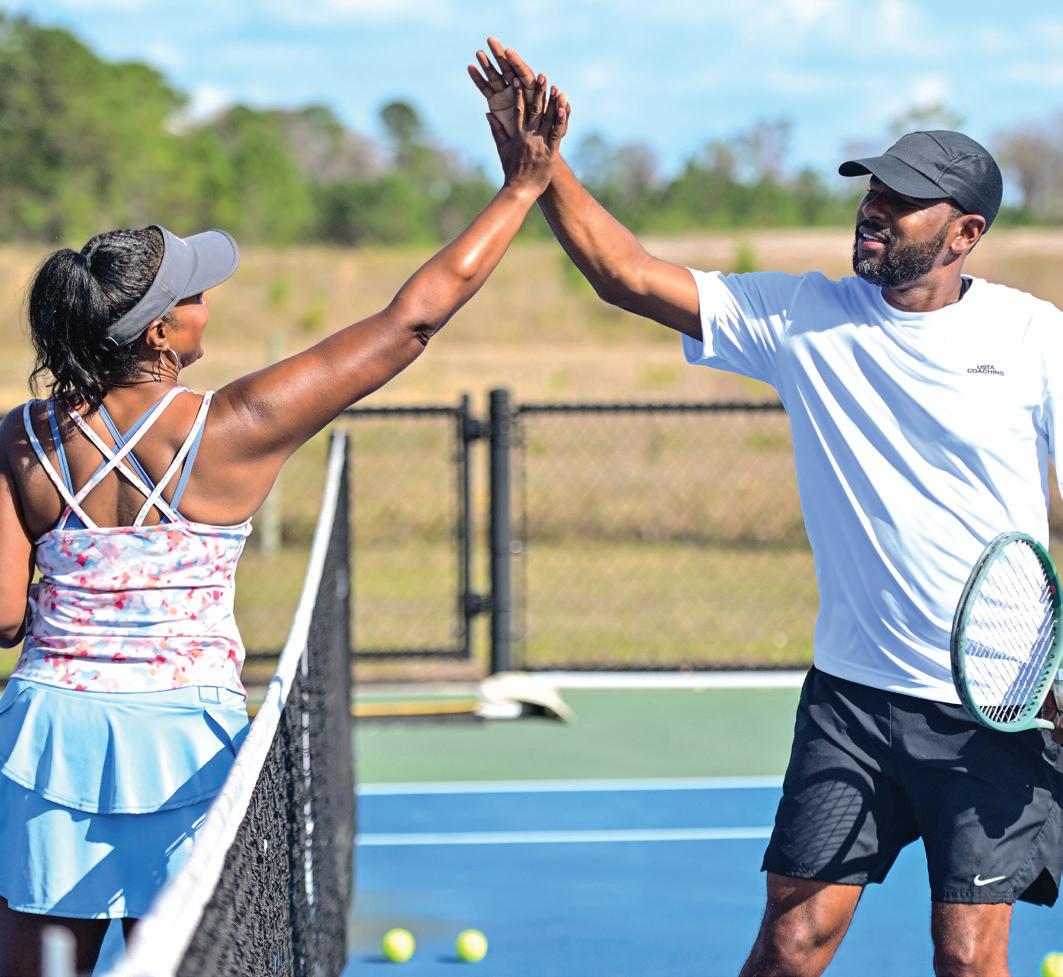
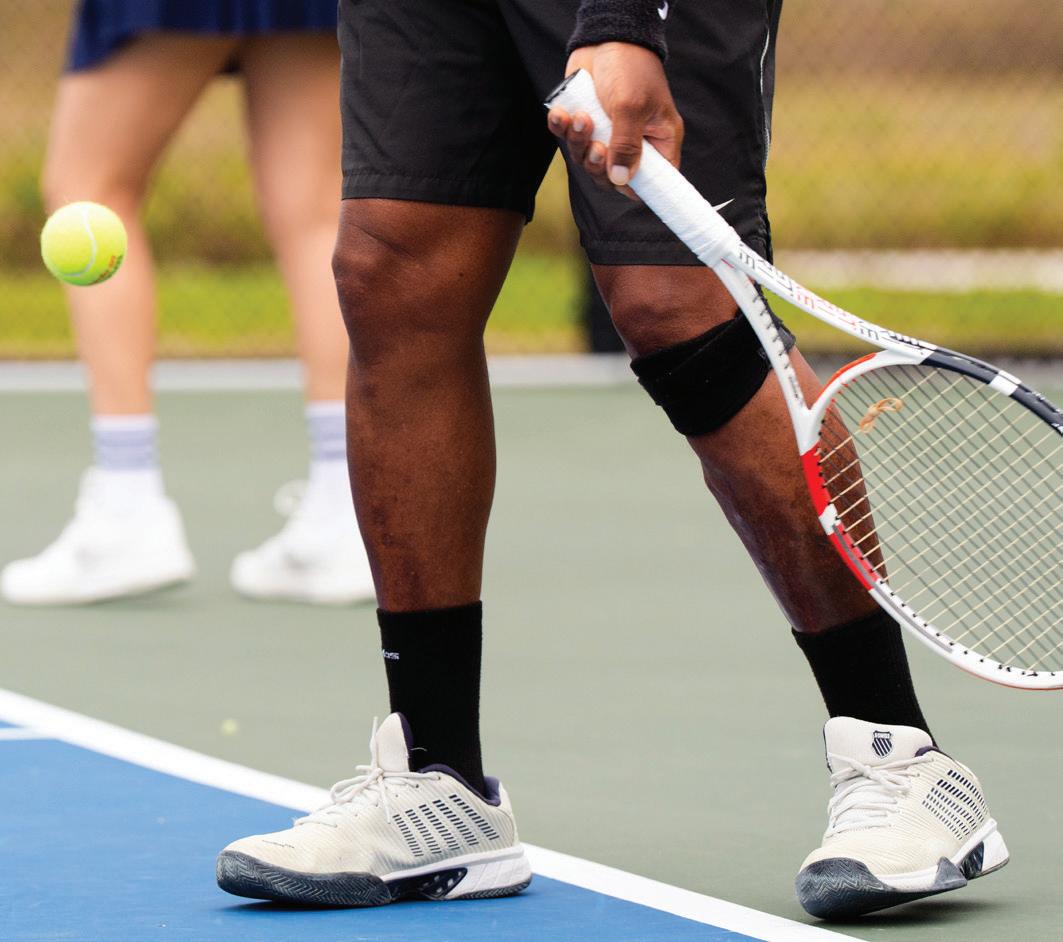




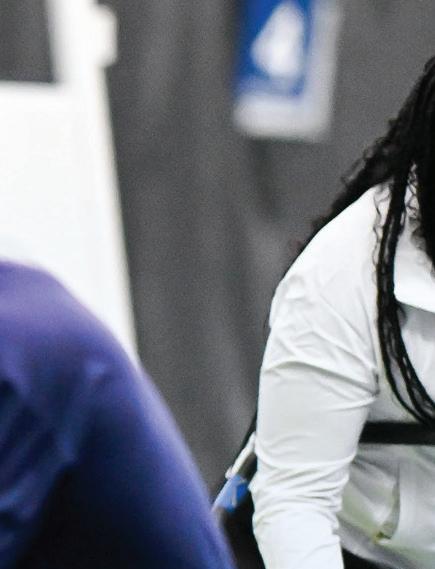



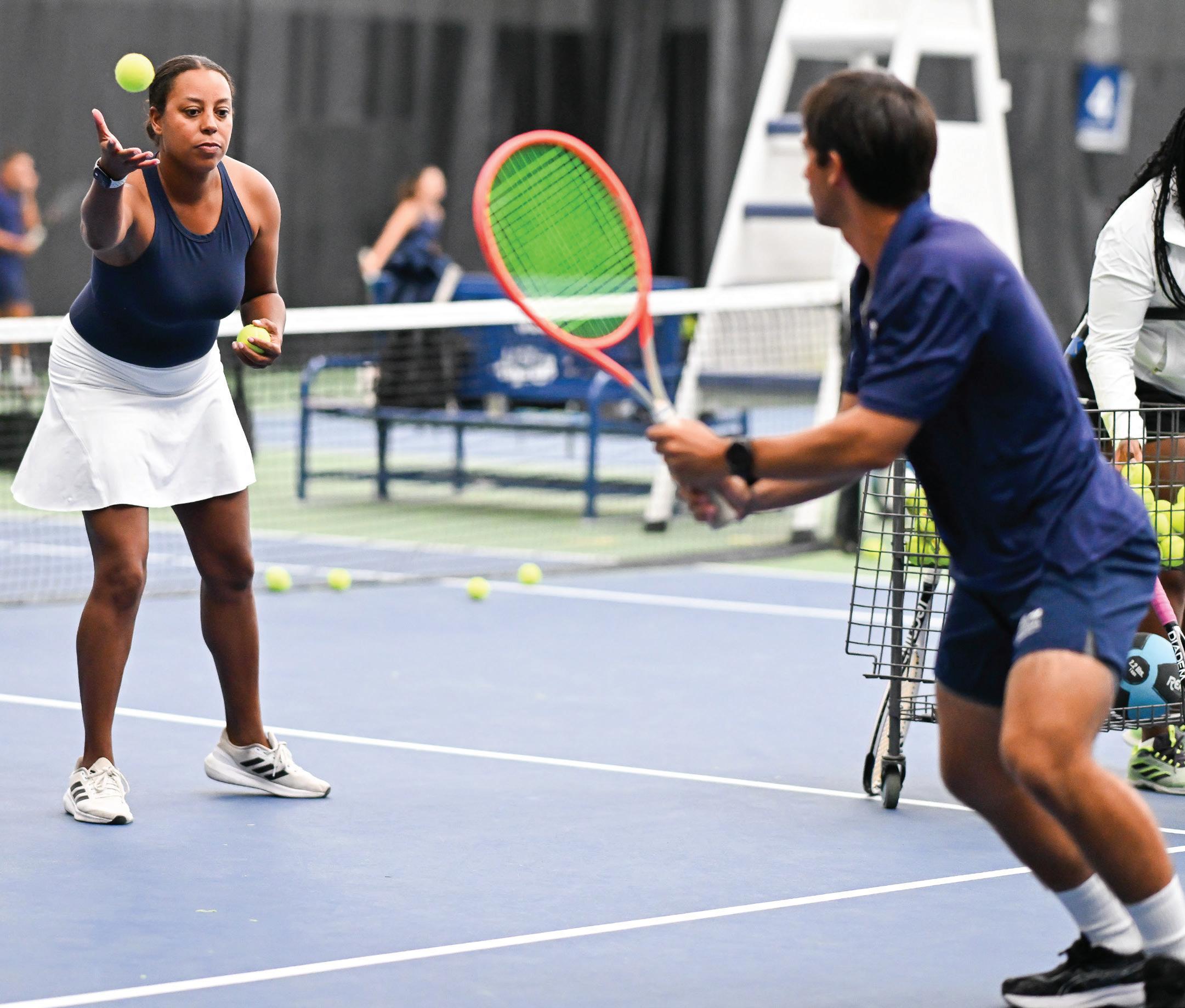

East Palo Alto Tennis & Tutoring opens new facilities in a familiar location, as it continues to change lives in Northern California.
By Kent Oswald
The challenge isn’t whether you can go home again, it’s whether you can make it better upon your return. East Palo Alto Tennis & Tutoring in California is doing that in the affirmative, as it opens up its EPATT Center at Cesar Chavez Ravenswood Middle School. It was there, back in 1988, that EPATT, a USTA National Junior Tennis & Learning Chapter, began enriching children’s lives as a summer-only program.
After a 1999 fire destroyed classrooms, the program moved to Stanford University in Palo Alto. (Legendary Stanford Director of Tennis Dick Gould is a founding member of EPATT and on the Board of Directors.) The renovation of Stanford’s tennis home then forced another move in 2020 back to East Palo Alto. Coincidentally, a major investment was being made in and around EPATT’s original location, so the organization began a fundraising operation to tie into the upgrades.
EPATT was formed to offer children an introduction to tennis as a safe summer alternative, then it quickly added an
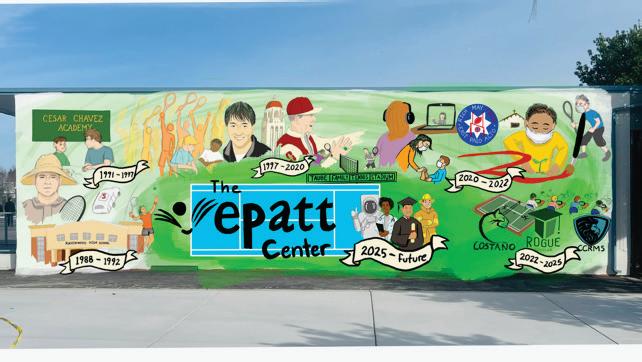
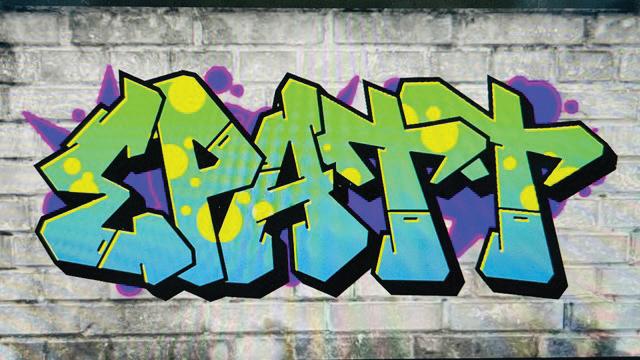
academic support option that overlapped with the Ravenswood School District's needs, recruiting Stanford students as tutors. For 37 years, EPATT has offered after-school tutoring in all subjects to K-12 grades. In 2023, the organization began offering PE tennis and in-school, high-frequency tutoring in reading. Today, more than 600 K-12 students participate in EPATT’s year-round in-school, after-school and summer offerings.
The Ravenswood district was the recipient of a major bond issue to upgrade facilities and space around EPATT’s original site. Although the organization’s return was not included in the original plans, EPATT leaders recognized an opportunity. Funds were raised from multiple sources, including the USTA Foundation, to add four classrooms and six tennis courts with lights.
EPATT was awarded a grant from USTA Tennis Venue Services, which also provided “essential no-cost consulting to help us make the best possible decisions in designing the EPATT tennis center,” says EPATT Development and Communications Director Amy Kohrman. “Their expertise was instrumental throughout—from the initial planning stages through to execution and follow-up.”
“We provided an engineering review of court dimensions, surfacing materials, lighting specifications, and all other technical elements,” adds Lynne Schachte, a TVS consultant.
Following a June grand opening, EPATT’s summer academic and tennis camps livened up the campus. Programs are focused on helping students avert the “summer slide,” achieve grade-level proficiency in math and reading, stay active and hone their tennis skills.
The facility plans to host USTA junior tournaments, helping to showcase USTA Northern California’s involvement.

As we expand our mission, we’re placing a bigger focus on health outcomes and creating opportunities for families to get more involved.
Describing the section’s commitment, Outreach Representative Cherryl Silva explains: “Tennis is more than a sport, and its impact can change the trajectory of someone’s life in a very positive way. EPATT is the perfect example of how tennis and education can be leveraged to create a meaningful change. We are incredibly excited to see how much more they can accomplish. The potential is limitless, and we can’t wait to witness the next chapter of EPATT’s impact.”
“Tennis has always been in EPATT’s DNA,” says Kohrman. “But as we expand our mission, we’re placing a bigger focus on health outcomes and creating opportunities—like parent tennis nights— for families to get more involved. We’re excited to return to the place where it all began, ready to serve even more members of our community.”
Sponsored content. For more on how USTA’s Tennis Venue Services can help your facility or project, visit usta.com/facilities or email facilities@usta.com
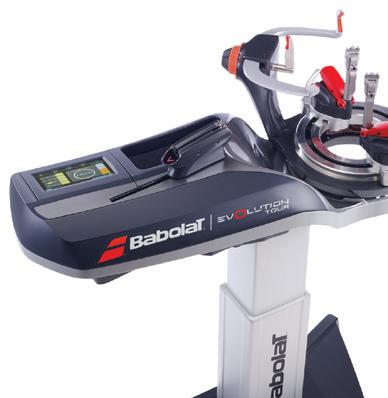
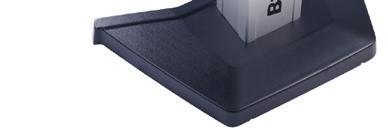


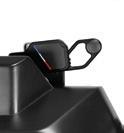





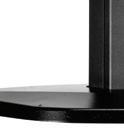
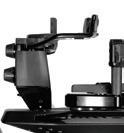
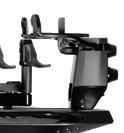
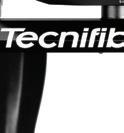

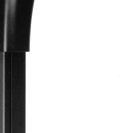

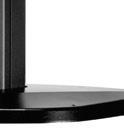

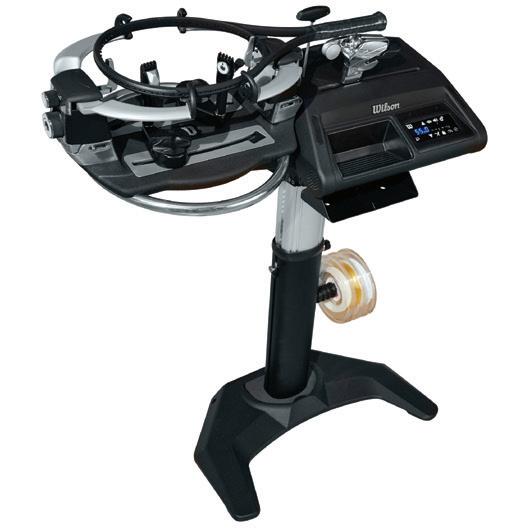
Your stringing machine is your shop’s top asset, so make sure you choose the right unit for your business.
By Bob Patterson, Exec. Director, USRSA
> We run our Guide to Stringing Machines annually, so you’re probably familiar with me saying how your stringing machine is an investment in your business, and buying one should be treated as such. While that remains true, just how do you know which stringing machine is best for you and your business?
As you peruse the charts on the following pages, you will see that there is a great variety available on the market when it comes to stringing machines, with many di erent functions, features and prices. Finding the machine that is right for you will take some analysis of your operation, so you can make the best decisions and, therefore, make the best investment for your business. Whether stringing racquets is all you do or just one of many aspects of your business, the machine and those who operate it are vital to your success. If
you are in the market for a machine, our Guide to Stringing Machines, brought to you by RSI and the USRSA, is the perfect place to start your search.
Consider your racquet stringing volume, or more accurately, what your volume could be. Regardless of the size and scope of your operation, your stringing machine needs to be able to handle the racquet volume. What features do you need in a stringing machine? What features would be nice to have? Based on your generated revenue from
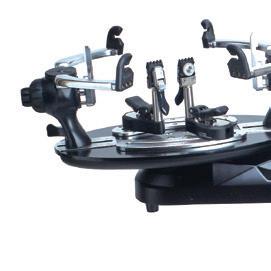
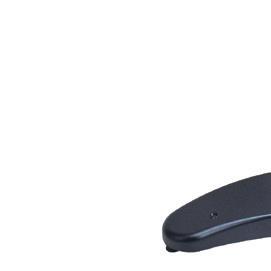
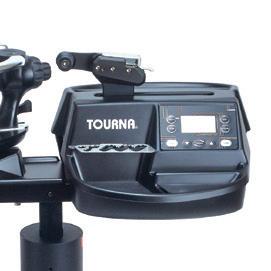
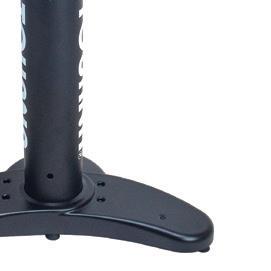
stringing service, what can you a ord to spend on a machine? This is where the investment part of this purchase comes into play. The life of most professional machines is several years, so consider the cost against revenue over that period.
To choose the best machine for your operation, start by listing out what you absolutely need in a machine, and also list what you might “want”—other features and functions that would be nice to have, but may not necessarily be essential for your operation. Then list all your budget concerns, keeping in mind to include any plans for future growth (such as adding stringers to your sta , etc.). Since this purchase is an investment, you’ll want to buy the best machine that you can a ord. It will pay for itself in the long run.
Once you have the machine functions and features figured out, it is likely that several models on the market will meet your needs. From that short list, you will then need to consider things like price, warranty and after-sales service to make the final choice that best suits your needs.
The chart on the following pages should give you a great place to start comparing machines. Whatever machine you finally decide on, make sure you put your investment to good use. Hire and train good technicians, and make sure to market your services. It will pay big dividends.
Alpha • 800-922-9024 • www.alphatennis.com • info@alphatennis.com
Pioneer DC Plus
Revo 4000
Babolat • 877-316-9435 • www.babolat.com Evolution
Dunlop • 888-215-1530 • www.dunlopsports.com
Stringing Machine 2.0 Linear Gripper
Stringing Machine 2.0 Diablo Gripper
Stringing Machine 3.0 Diablo
Gamma • 800-333-0337 • www.gammasports.com
9900 Els w/6pt
HEAD • 1-800-289-7366 option 2 • fschumann@us.head.com
HEAD TE 3600 Stringing Machine $5,800
Klipper USA • 800-522-5547 • www.klipperusa.com
Klippermate $299
Klippermate Badminton
Stringway • 800-922-9024 • www.stringway.com
M100 - O92 - TH+TH18 $824
Tecnifibre • 888-301-7878 • www.tecnifibreusa.com
Diablo/NoseconeRotationalTensioner Foot Pedal Tension Activator Self-Calibrating Knob/Dial Tension Setting Clamping LED/LCD Tension Display Multilingual Touch Screen Display Fixed Clampson GlideBars Flying Clamps Dual Swivel Double Action Fixed DualSwivel Single Action Fixed 360-Degree Clampson GlideBars Diamond Dust Clamps ToolTrayCoverIncluded Extra Features Cover Available StringMeasurerBuilt-InRulerReelRack 50-75 lbs.Over75 lbs. Weight StartingClampDiagonalCutters Needle Nose Pliers Awl Pounds& Kilos Tension Manual Calibration Adjustable Diamond Coat Tension HeadGrip Plus/Minus Touchpad TensionSet FullKeypad Tension Setting KnotTensioningRemovableElectric Tensioner Unit Automated Base Release Clamps NoTool Neededto Adjust Clamps Racquet Stand Cabinet With Drawers Under50 lbs. Tools Included FlyingClampAssemblyInstructions/Video Owners Manual/VideoGuidingAwlBent-NosePliersAssemblyToolsNotes
1
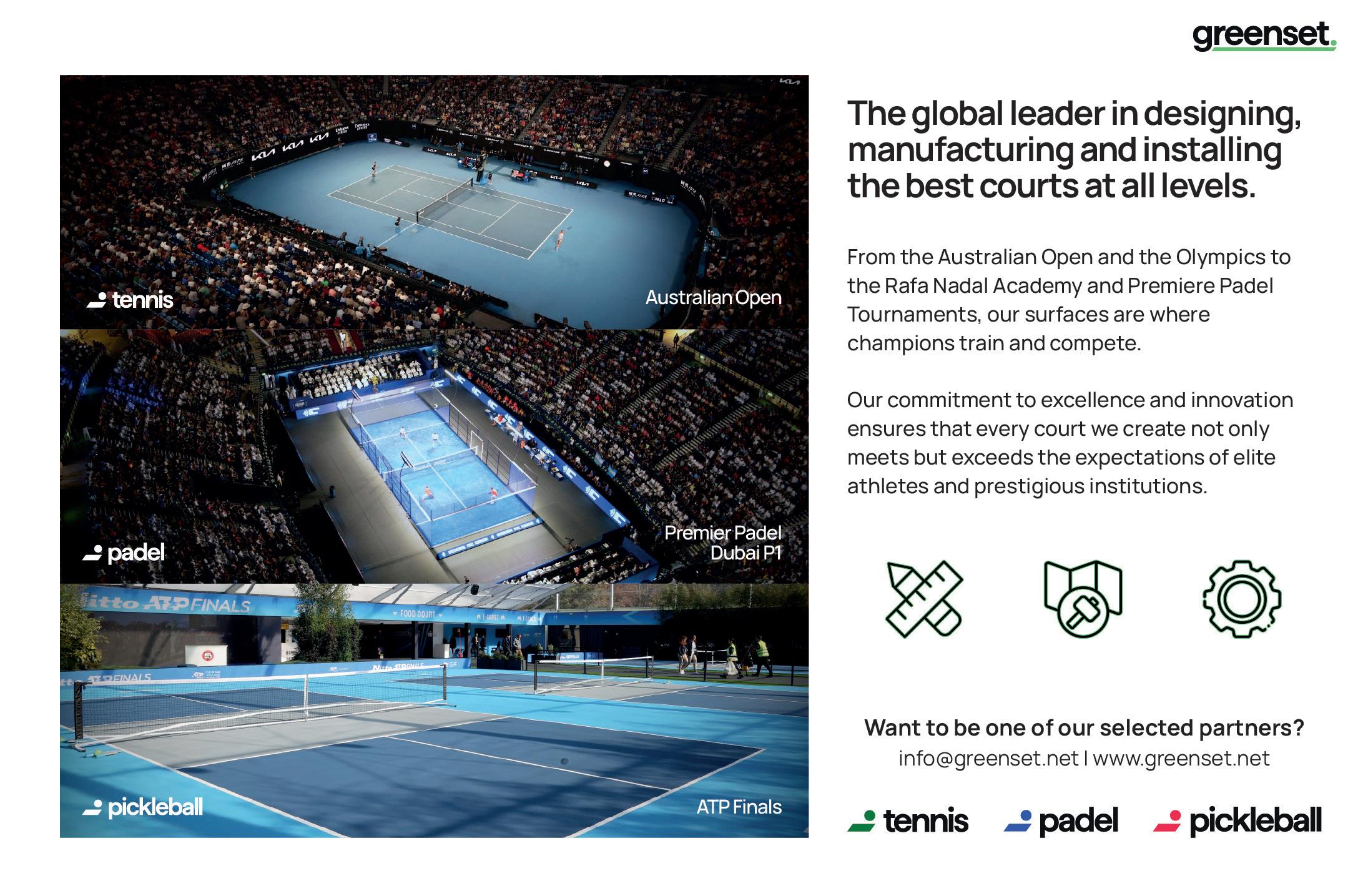



These stylish and functional bottles will keep your players healthy and hydrated.
By Cynthia Sherman
> No matter what court you’re on, hydration isn’t an option. It’s a necessity— before, during and after play. Water cushions your joints, a ecting flexibility and speed. It increases endurance and helps ward o muscle cramps. It optimizes proper breathing, making it easier to absorb oxygen. And it definitely a ects your mood and level of concentration.


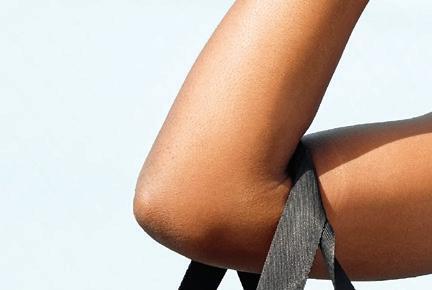
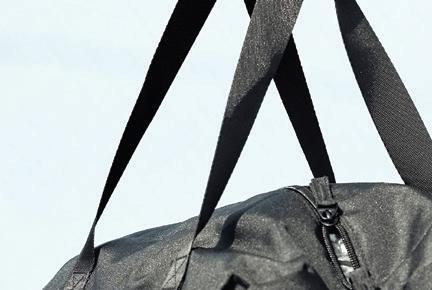
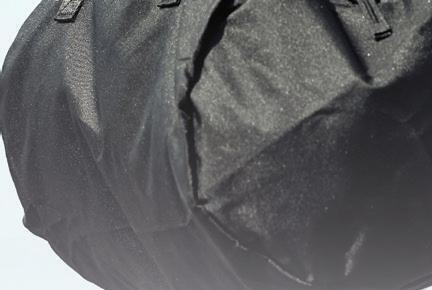


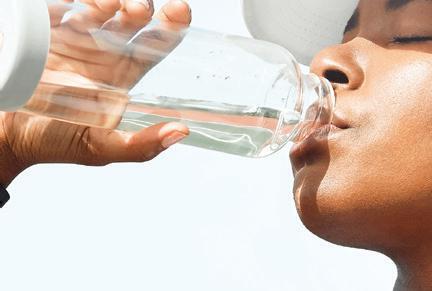
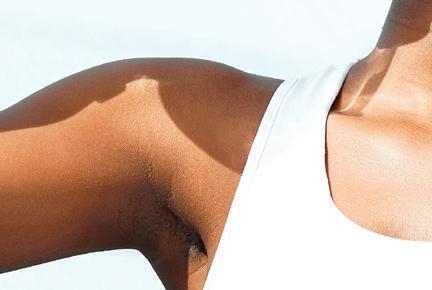
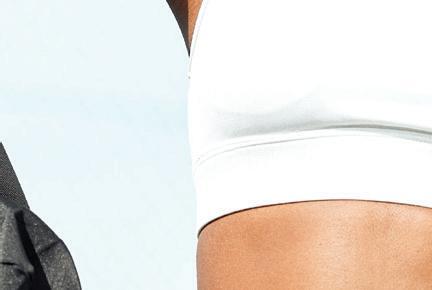


Fortunately, there are plenty of options out there to help you stay hydrated on the court, and beyond. (Prices are suggested retail.)


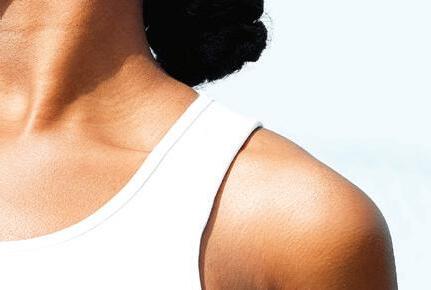
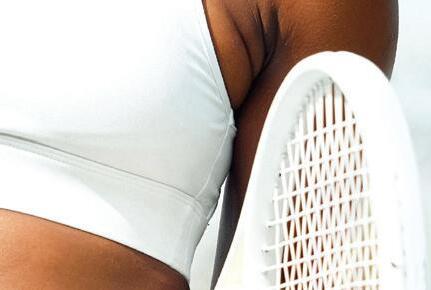
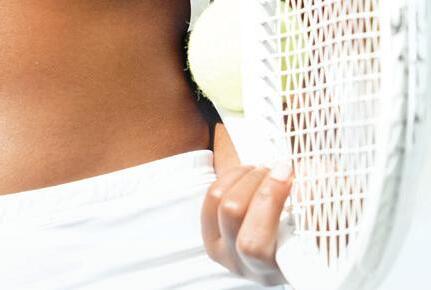


Branching out from its initial in-bottle wine chiller, Corkcicle has expanded its products to include a variety of insulated coolers, bags and drinkware. The triple-insulated, 20-ounce, cupholder-friendly, spillproof water bottle ($40) features a slip-proof bottom and keeps drinks cold and hot for 25 and 12 hours, respectively. It comes in two other sizes and a rainbow of colors.








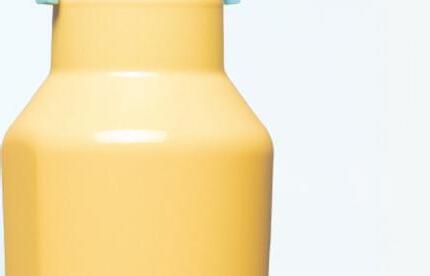






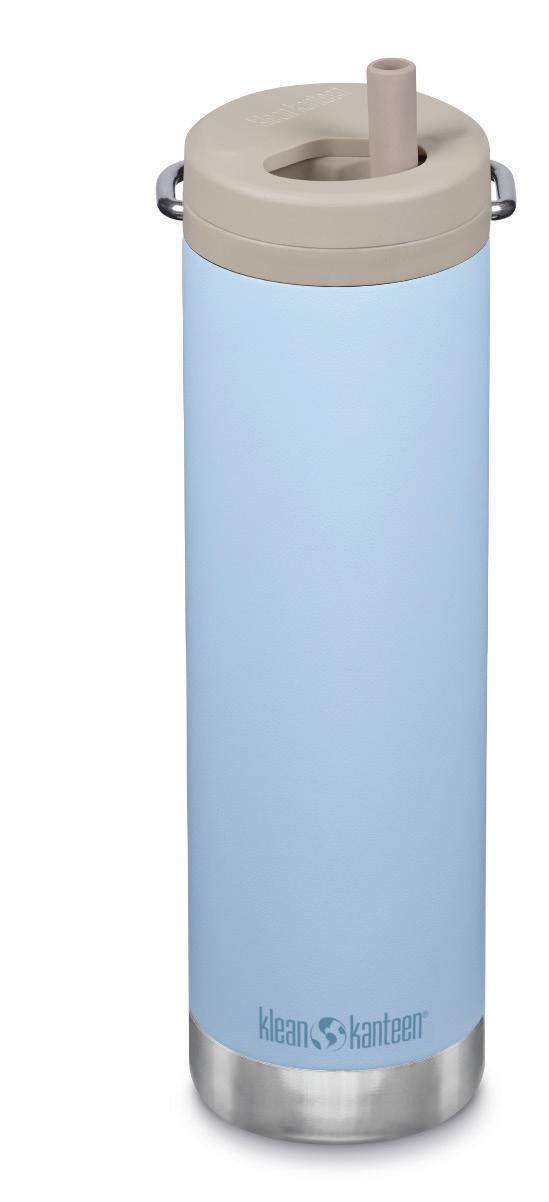
Klean Kanteen KLEANKANTEEN.COM/800-767-3173
Klean Kanteen’s 20-ounce dishwasher-safe TKWide bottle ($35; 32-ounce version $45) with twist cap and stainless steel straw features a Climate Lock double-wall vacuum insulation, keeping drinks cold for 63 hours and hot drinks steamy for 17. The top swivel loop makes this chipresistant Klean Coat portable. Both sizes come in a variety of colors.






TAKEYAUSA.COM/714-374-9900
Takeya’s 40-ounce Actives Water bottle with straw lid and loop handle is a contender for serious hydration. The straw lid folds to prevent leaks and the double stainless-steel insulation keeps beverages cold for 24 hours or hot for 12, with a no-sweat exterior. It’s dishwasher safe and has a removable protective bumper. The 40-ounce with tapered bottom ($40) fits most cup holders.

S'well
SWELL.COM/877-801-6143
S'well food-grade stainless steel 32-ounce Explorer bottles ($50) are BPA/BPS-free, leak-proof and sport a flip-straw lid (with detachable straw for easy cleaning) and ergonomic handle. The triple-layer insulated bottle keeps drinks cold for 42 hours or hot for 10, and the sweat-proof exterior stays nice and dry. It's also available in 24- and 40-ounce sizes.

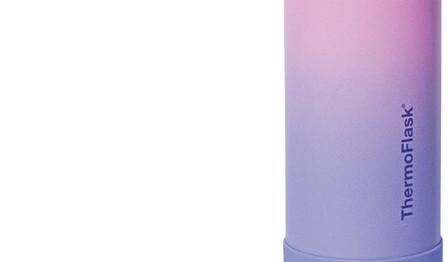


MYTHERMOFLASK.COM
With its double-insulated stainless body, the ThermoFlask 24-ounce Straw Water bottle ($27) boasts a full day’s worth of ice cold drinks. With a leak-proof folding straw, a bumper to protect against dents and dings, BPAfree and dishwasher-safe features, it’s an easy take-along to any match. There’s a broad color range and size choices with mix and match spout, chug and straw lids.



HYDROFLASK.COM/888-584-9376
Hydroflask’s 32-ounce, wide-mouth bottle with flex straw cap ($45) has double-walled insulation that keeps liquids cold for 24 hours, is dishwasher safe, leakproof and BPA-free—and it just takes one hand to “flip and sip.” It also comes in 24- and 64-ounce versions and in a multitude of colors, including one-of-a-kind “Jelly Swirl” patterns. Hydroflask also has a unique insulated bottle trade-in and recycling program.











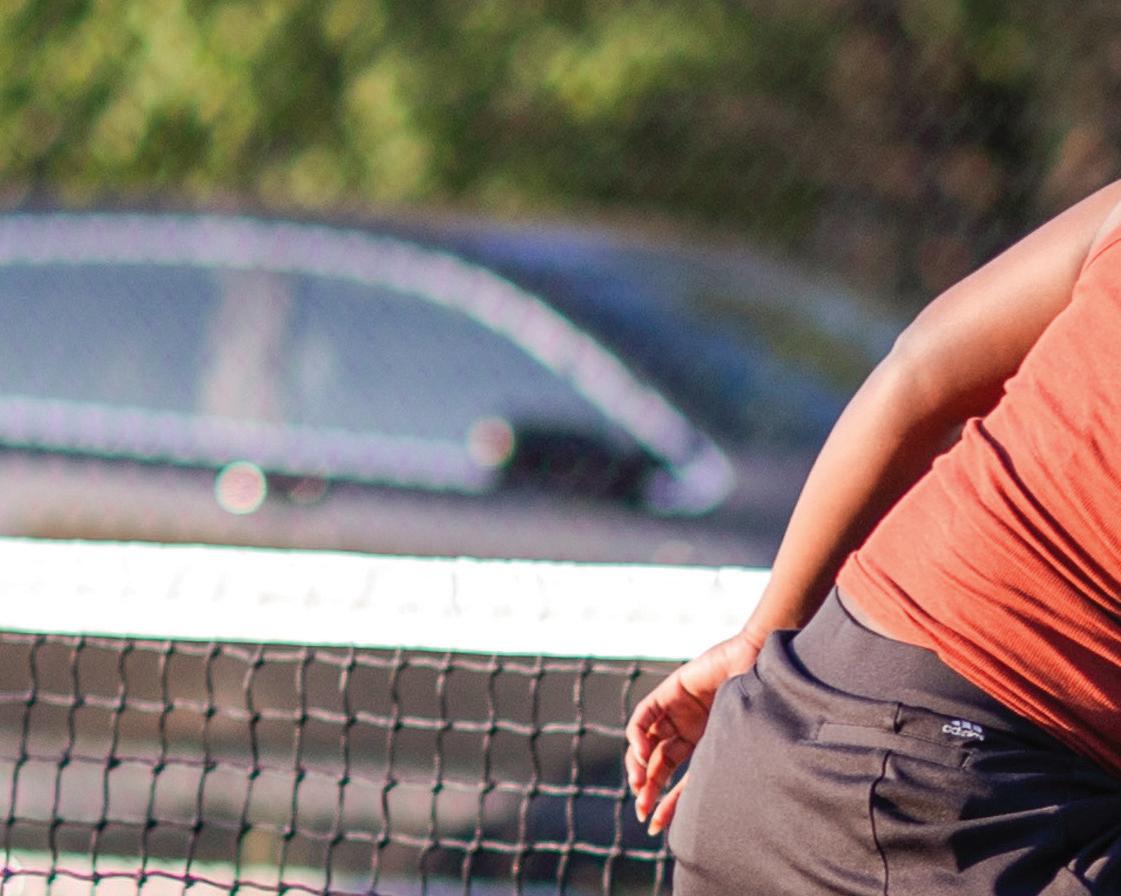





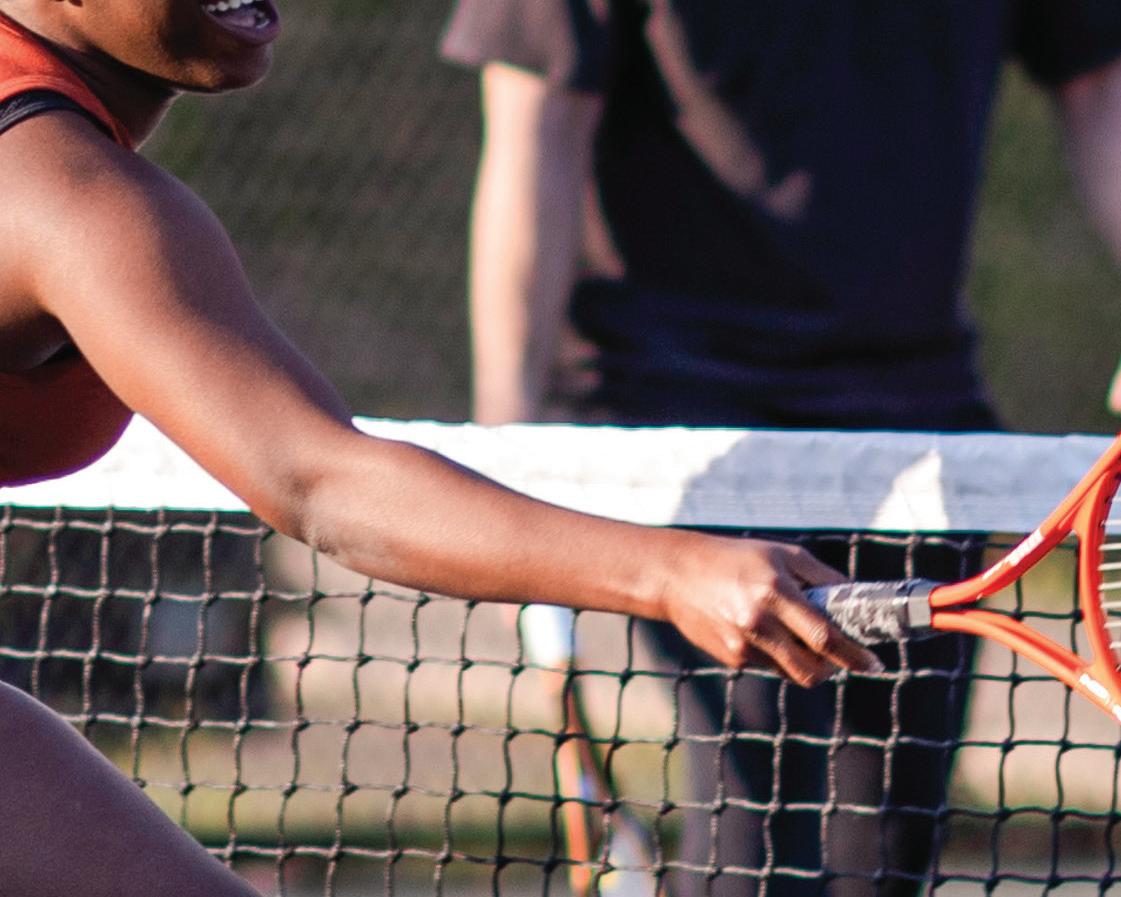
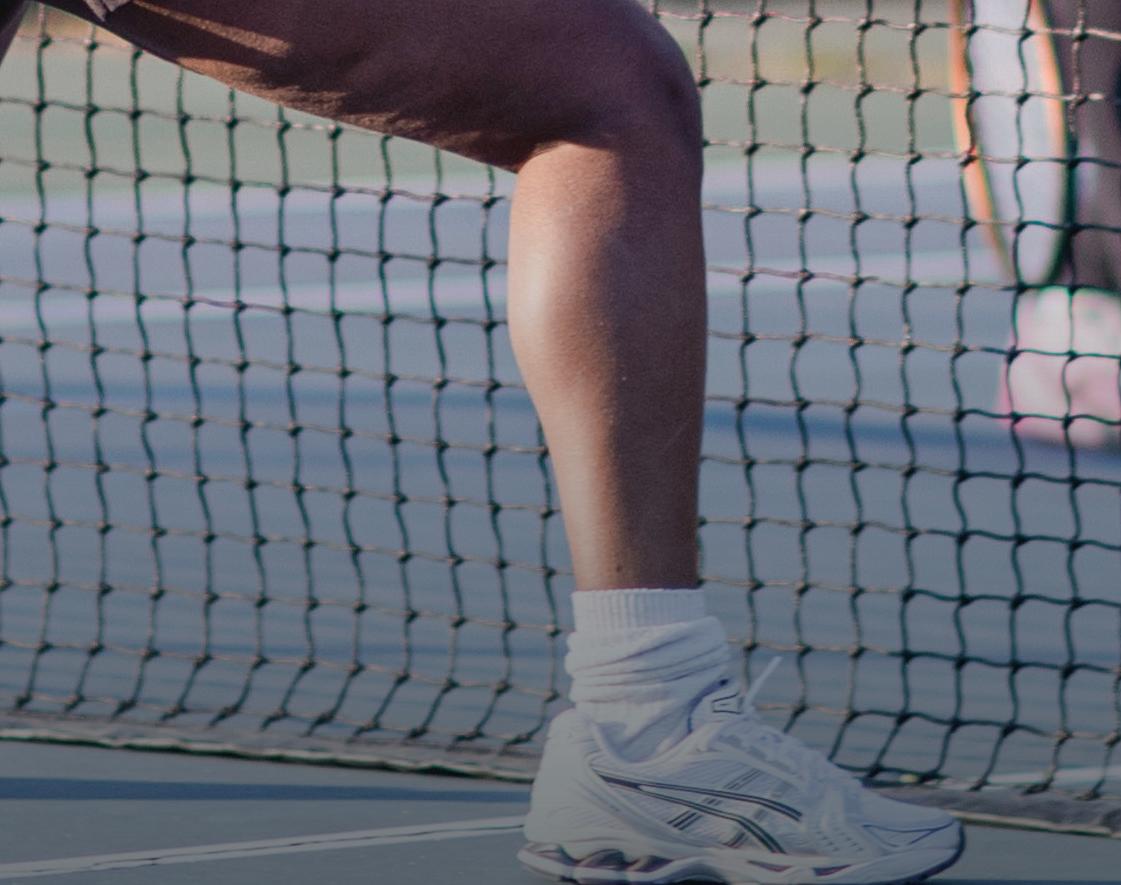




Whether you are new to the game, an experienced player or you’re coming back after some time away, get moving and join in the celebration of the world’s healthiest sport.










Recent lawsuits, along with cultural shifts, may put the squeeze on college tennis.
By David Mullins, CEO, ITA
In the May issue of RSI, I wrote “A Challenging Test,” which touched on how legal battles involving the NCAA and broader trends in higher education will pose significant threats to Olympic sports like tennis. In this article, I want to expand on these concerns and offer some perspectives on what is being done.
Perhaps the most well-known of the lawsuits is the recent House v. NCAA settlement. In short, the agreement provides $2.8 billion in back payments over 10 years to former student-athletes who were denied a share of revenues during their time in college sports. Looking forward, the settlement also allows schools that opt in to share up to $21.5 million annually in revenues directly with current student-athletes.
If you’re unfamiliar with NCAA Division I athletic department finances, let me be clear: most don’t have $21.5 million sitting in reserves. These departments are now facing a financial squeeze from both ends— receiving less NCAA money due to the settlement payouts while needing to generate additional revenue to meet new compensation obligations.
In the short term, athletic directors are trying to make the math work. They’re reviewing expenses, identifying new revenue streams, and advocating for creative solutions. But there will come a breaking point. Many will be forced to consider cutting sports to fund the revenue-generating giants: football and men’s basketball.
Beyond the NCAA, another looming threat comes from the broader pressures facing American higher education. With declining birth rates and growing skepticism about the value of a college degree, many institutions—
particularly those in NCAA Division II, Division III, the NAIA and junior colleges—are confronting an enrollment cliff. This demographic and cultural shift will strain university resources even further.
Some factors are beyond our control—but not all. Here are several areas where the tennis industry can take meaningful action:
• Boost High School Participation: College administrators, especially at non-DI levels, are watching youth and high school participation trends closely to determine which sports to sponsor. Growing—or even maintaining—tennis participation at the grassroots level is critical.
• Legislative Advocacy: The Intercollegiate Tennis Association (ITA) and other Olympic sport associations are working to build legislative support for measures that can help protect broadbased sports sponsorship. Key goals include preserving minimum sport spon-
sorship requirements and maintaining current levels of athletic department funding for Olympic sports.
If any RSI readers or your colleagues or friends have relationships with federal legislators, or can facilitate introductions for the ITA, your support would be deeply appreciated. Please feel free to contact me directly at dmullins@itatennis.com.
In looking ahead, the ITA, in conjunction with the USTA, will continue to monitor developments and explore strategic responses during these highly uncertain times. While the challenges are substantial, our shared commitment to the future of college tennis remains strong.
After five years with the Intercollegiate Tennis Association (ITA), David Mullins was promoted to CEO this past January. He played at Fresno State and went on to coach college tennis for 12 years at DePaul, Northwestern and Oklahoma. Beyond his coaching career, he has contributed to the tennis industry in various capacities, both in the U.S. and in his home country of Ireland, where he represented his nation in Davis Cup play. Contact him at dmullins@itatennis.com.
We welcome opinions and comments. Email peter@acepublishinggroup.com.


A
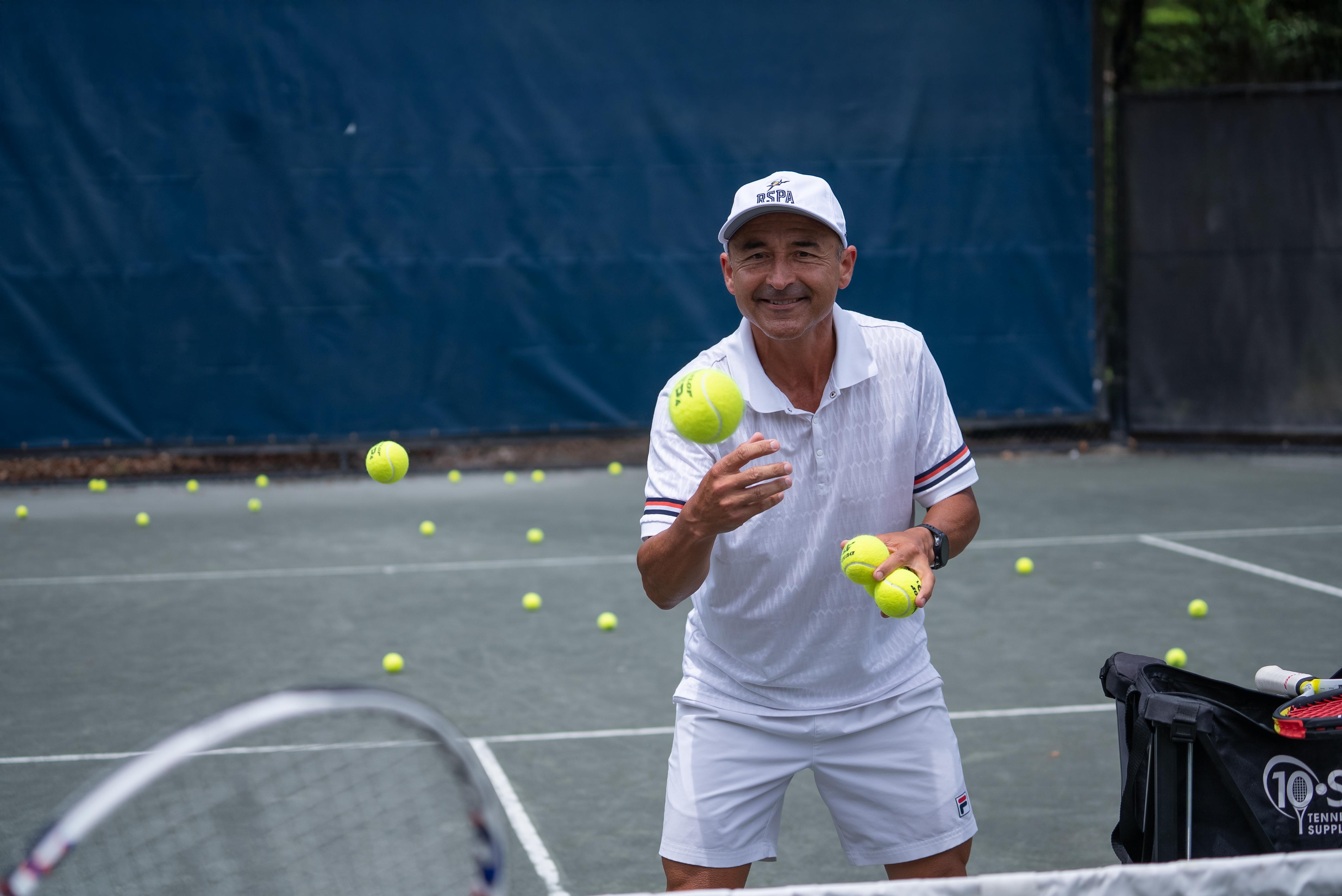
COACH
CERTIFICATION
hen you think of brands that define their product category, you think of some great ones: Kleenex, Xerox, Vaseline, Google, Uber, Band-Aids and Tupperware. Let’s also add the Racquet Sports Professionals Association to that list. Founded in 1927, we have been the higher standard in certification and career development. What strikes me about this is we didn’t just start an association; we founded a category that is ubiquitous with professional tennis (and now additional racquet sports), teaching and coaching.
Our bold founders made this innovative decision because they saw a gap in the market, an opportunity to professionalize a fast-growing sport and to monetize a new profession. Jump to 2025, our markets are exploding and the need for professionalization is higher than ever. For that past 100 years, we have been known as the certification gold standard. We didn’t get here by chasing trends or handing out participation awards. We got here and are staying here because we develop serious profes sionals who lead with purpose.
From my first day on the job, I have said we need to elevate the prestige of our industry, make it a highly desirable place to work and pursue a meaningful career. I have learned, over the past 18 months, that we are still fighting against the other side of the industry who doesn’t care about quality, doesn’t care about higher standards and who doesn’t take the career seriously. How do we expect to recruit new members into our industry and show them a fulfilling and rewarding career if half of our industry is unregulated? Why are other entities lowering the bar and their standards? Is it to increase numbers on a Power Point presentation in a board room?
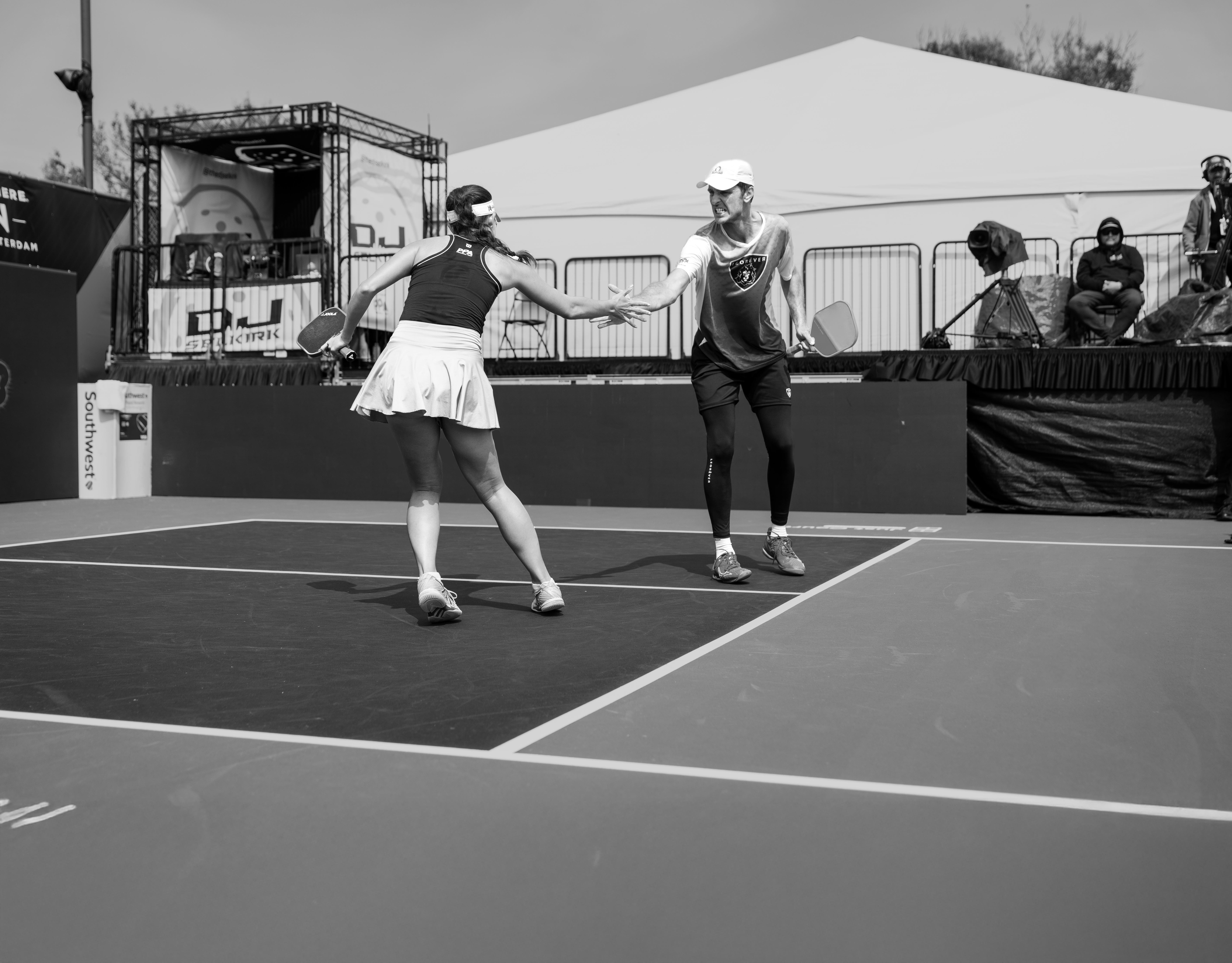
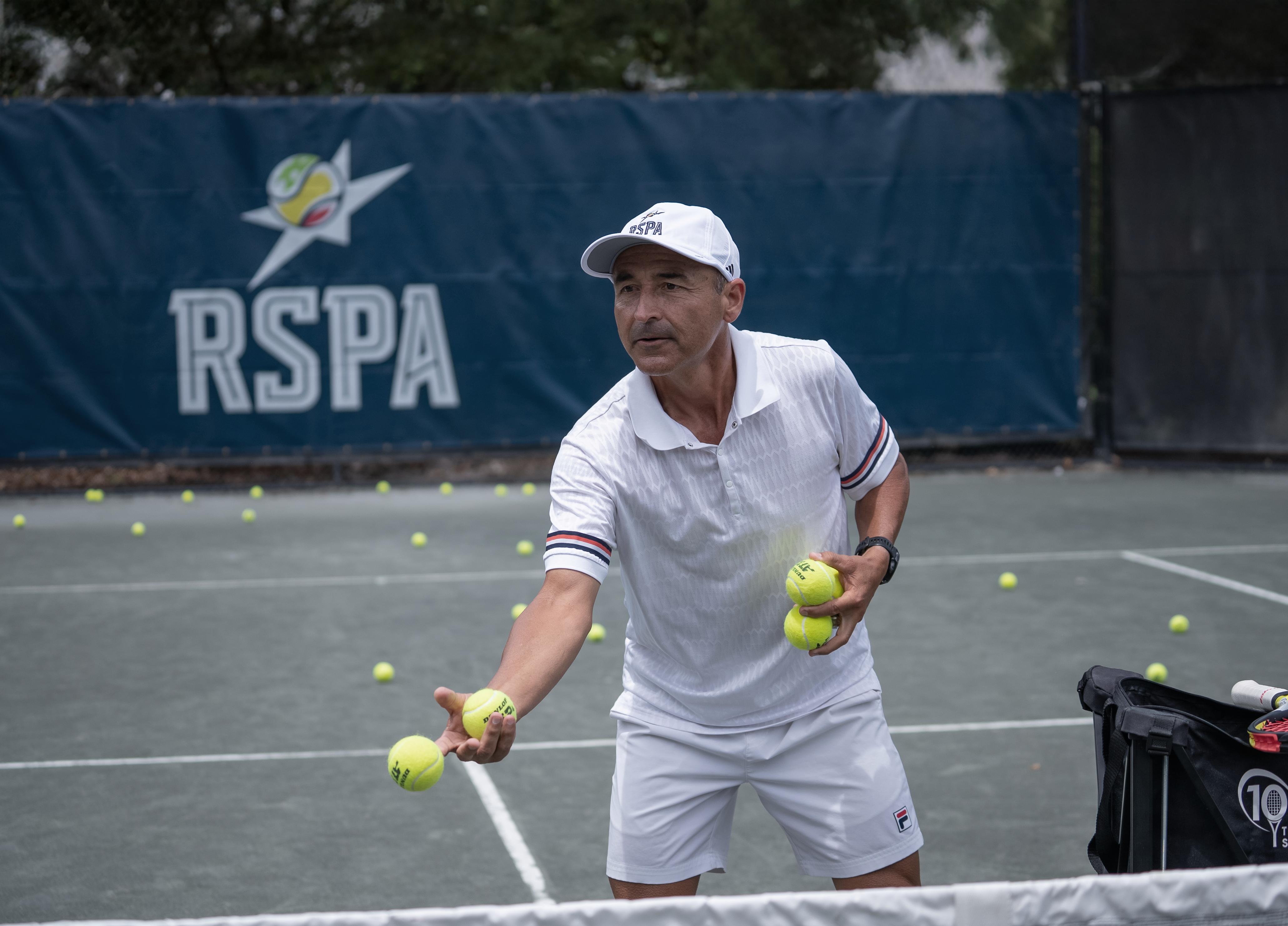


The racquet sports industry has changed tremendously and it continues to evolve. Before going further, it is vital to differentiate between mission/role of the RSPA and that of the USTA.
Stopping short of calling it a mission, the USTA has made it a defining goal to reach 35 million tennis players by 2035. RSPA professionals, through servicing their members and clients, will play a key role in helping to increase the number of tennis players. But the RSPA does not exist to increase the number of players; it exists to serve the needs of ca-
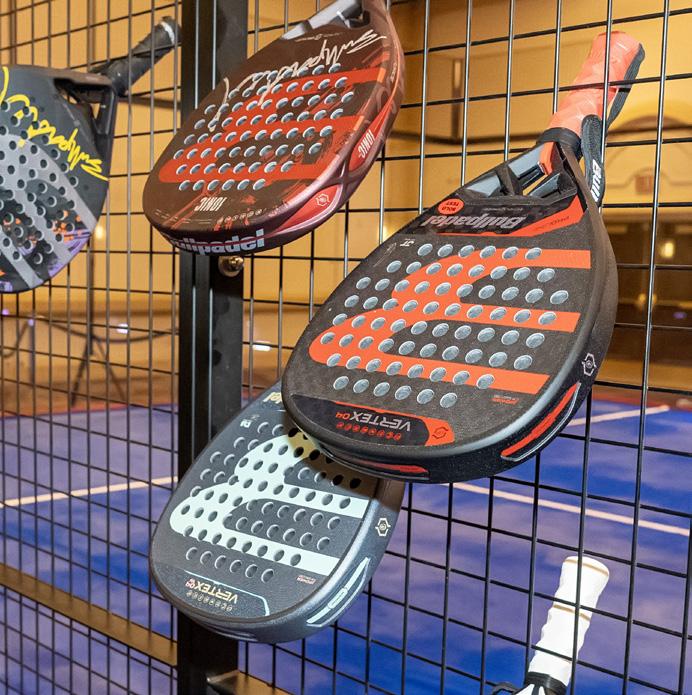
reer-minded racquet sports professionals. RSPA places its professionals and their needs at the center of what it does.
Notwithstanding the above, having more racquet sports players is good for the RSPA and its members. According to research, the number of individuals playing racquet sports has increased by over 25% since 2019 and is now over 106 million worldwide. This growth presents substantial opportunities for RSPA as we expand into international markets. More importantly, within the U.S., where most RSPA members live, consumer spending on racquet sports is expected to increase by more than 7% by 2030. Increases in consumer spending and the number of
players bodes well for RSPA members.
The increasing popularity of complimentary racquet sports in the U.S. present added opportunities for RSPA professionals. For example, in 2023 the number of pickleball players in the U.S. had increased to over nineteen million, which is a fourfold increase over the 2019 figure. To meet this demand, RSPA has trained more coach developers and is offering widely available certifications to prepare our members to serve the needs of their pickleball playing clients.
Padel is enjoying rapid expansion worldwide and now boasts over thirty million individual players. Domestically, over forty states now have padel courts, and its expansion will increase as the Premier Padel Tour begins to offer top tier professional competition in the U.S. in 2025. With padel’s growing popularity, the RSPA is well-placed to educate professionals on meeting player and facility needs through its certification and educational programs.
Platform and squash are also experiencing increases in popularity, and squash will be included in the 2028 Summer Olympics in Los Angeles, which is amplifying excitement for the sport.
So, what does this all mean for current and aspiring racquet sports professionals?
First, financial and career opportunities abound as the demand for certified and skilled racquet sports professionals continues to rise.
Second, there will be an ever-increasing need for high quality continuing education, mento-
Kevin Theos, RSPA Vice President, RSPA Elite Professional

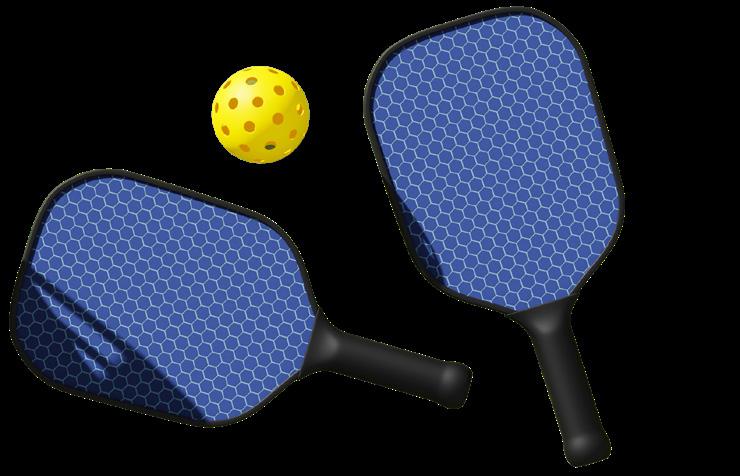
ring and networking opportunities for racquet sports professionals. Through certification, continuing education and especially its enhanced career services, the RSPA will continue leading the way in helping skilled racquet sports professionals thrive in their careers.
These are exciting times, and I invite you to be curious and explore racquet sports outside of your comfort zone. You may find that the instructional techniques and drills in these other racquet sports inspire you to try innovative approaches in coaching your primary sport. If nothing else, you will gain an appreciation for how millions of people worldwide have come to love of such a diverse array of racquet sports.
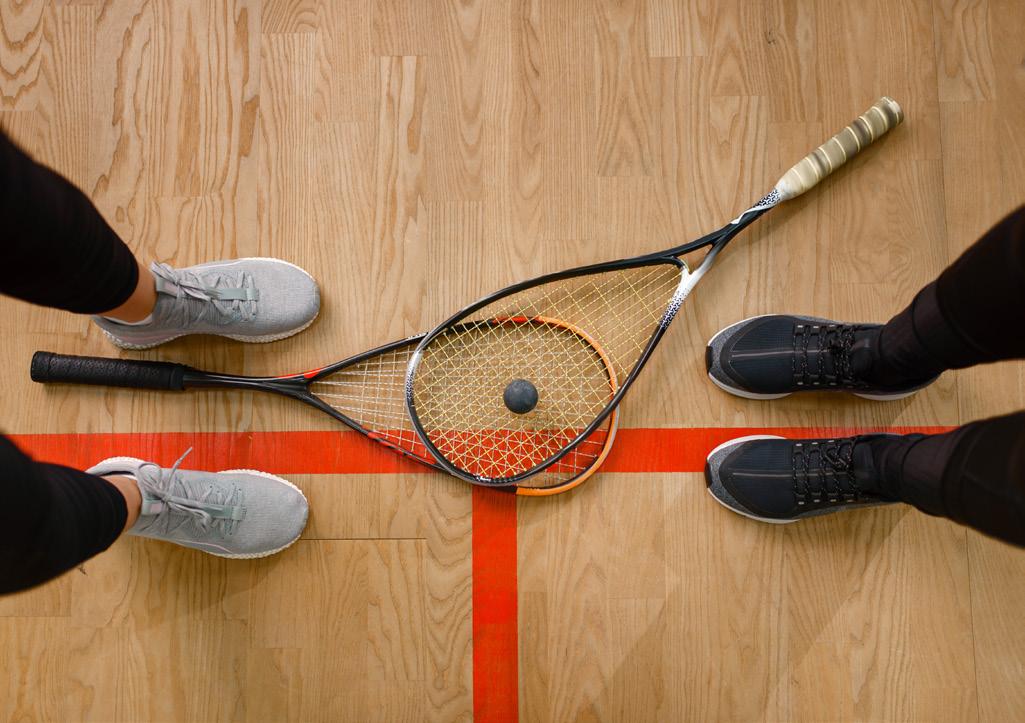
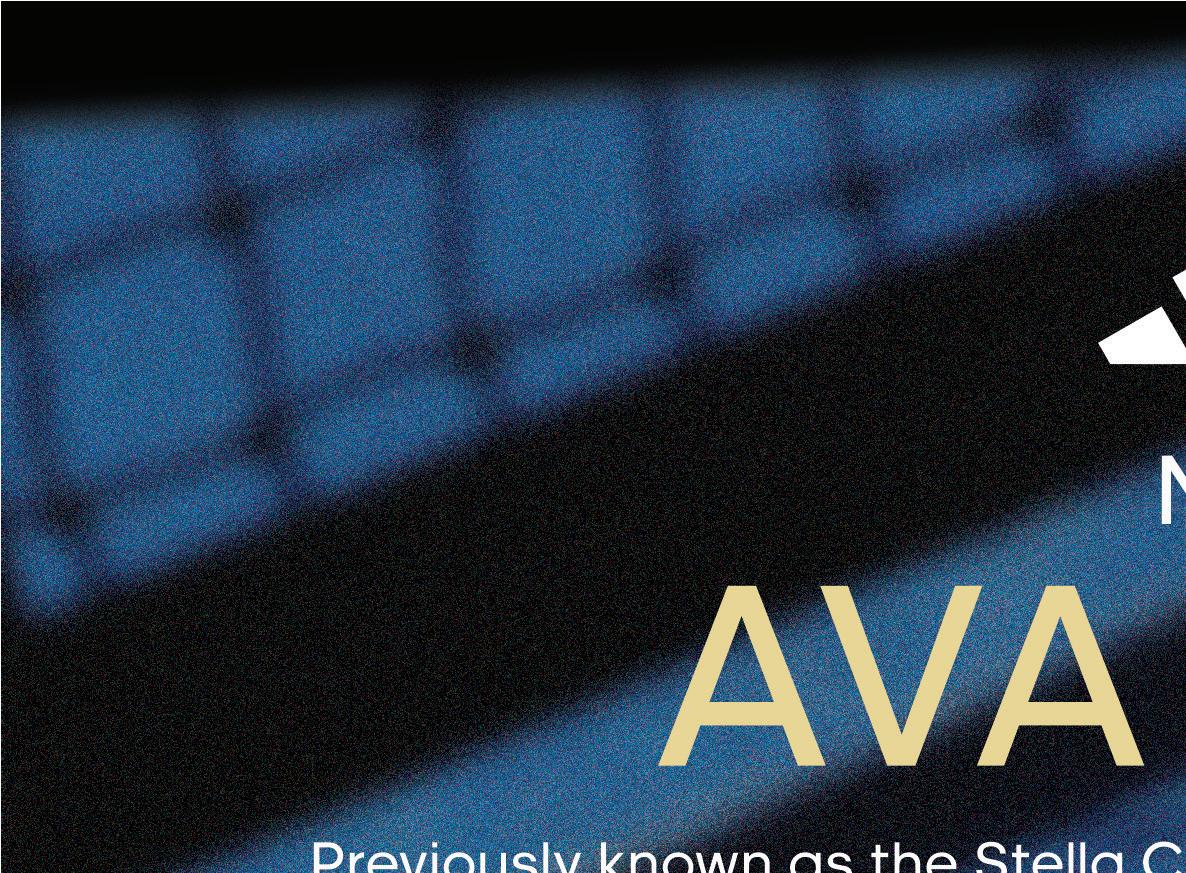












Gary Cimperman, RSPA Elite Professional, Owner, Cimperman Tennis Academy
Camp has never been an activity, but rather a feeling. The state of mind that so pervades us as youth in the hopes that summer will never end. That sense of camaraderie amongst family and friends around the campfire. The longing that emanates from deep within as we look through the back of the car window trying to get one last glimpse of what we will inevitably do again the same time next year…camp.
For as long as I can remember, camp has been a part of my life. So much so in fact that even after earning the rank of Eagle Scout with the Boy Scouts of America, the first memories I often recall revolve around Custaloga Camp, our home base each summer nestled in the woods of Western Pennsylvania. Now as a full-time tennis professional and after sixteen years in the industry, I have run my fair share of summer tennis camps for kids. Camp can be a valuable tool not only for growing a business, but your staff and yourself, as well. Here are some of the most valuable lessons I have learned as a summer camp coach.
More than any other aspect of the tennis business, camp demands a higher level of trust than that of your membership. Throughout the other nine months of the year, parents and guardians are typically still on-site, or perhaps down the street getting a coffee, or working out in the gym upstairs. But always within earshot or a safe distance away. Once summer arrives, you ask parents to trust you for upwards of six hours, perhaps at different locations, with dozens of kids in an open environment. You can be sure these same parents will have many more questions that you will have to answer. Being prepared with a set of policies and procedures regarding camp safety and a thought-out itinerary will help raise that level of trust on your behalf.
Summer is a grind: multiple courts, multiple levels, multiple activities, outside third parties, larger staff, inclement weather. With all these moving parts, something is bound to go awry and often does. How will you respond to the situation best? What procedures are in place for your staff to react to a problem? You can’t think of everything; however, you can remain
calm, collect as much information as you can from all sides, consult with your leadership team, and present a unified decision to all involved. Never rush to judgment. Realize that you don’t have to solve every problem on your own. It’s okay to depend on the team around you.
Not a week goes by where someone does not proclaim, “Gary, you have the patience of a saint!” While I always appreciated the sentiment, I did not always truly understand what I was doing to receive it. Looking back, by and large, camp is not just juniors, but 10-and-under. That means chaotic, loud, rambunctious behavior. Do not lose your cool! It’s a long day. A long week. A long summer. Take a breath and don’t be too quick to anger or judgement. When the kids tire themselves out and fall asleep on the way home from camp, your tennis parents will not be able to thank you enough!
Summer is a chance to let our hair down a little and infuse a little more fun into what we do. Relax a little. Warmup differently each day with different games? Maybe start the morning by playing camp-wide team activities. Play more matches and point situations in the afternoon. Perhaps organize activities off the court such as soccer, basketball, or other racquet sports such as pickleball and padel. Maybe a bus trip to a professional tennis tournament? There are an infinite number of ways to instill a bit more fun into the camp atmosphere.
Junior players may very well be spending up to 25 hours a week on court with you in the summer. Yes, ball striking is important, but camp is a great setting to work on more subjective and abstract material like mental toughness, tactical
elements, nutrition, physical fitness, journaling, stretching and injury prevention. Take the time to address these other competencies. Once fall rolls around, you will not have the same amount of time to do so.

Nothing in tennis development happens in a vacuum. A solid 10-and-under program sets the foundation for 11-18 yellow ball. Junior Team Tennis can serve as a steppingstone towards higher level tournaments. Additionally, a great camp experience can serve as a foundational piece to sell your after-school Fall programming.
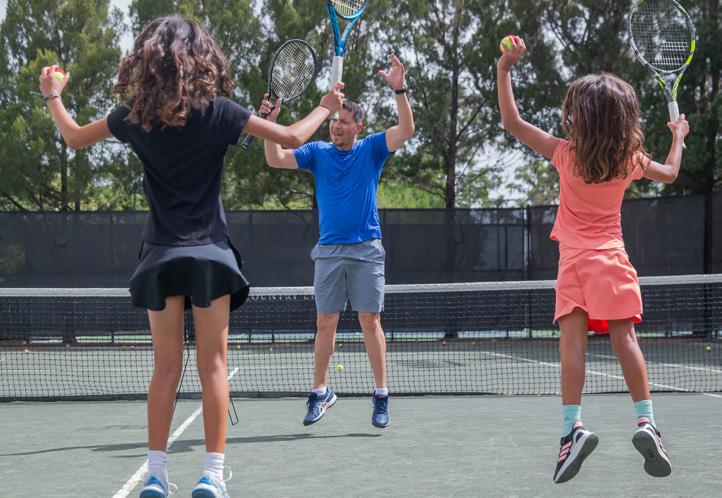
Your target audience is right in front of you in July and August. Have your flyers, email blasts and social posts ready to go to promote September. You see the tennis parents every day in the car line or at the pickup point. Engage with your client base and remind them that additional opportunities to train are scheduled for after Labor Day. Don’t wait until the last week of camp to create a fall marketing strategy!
Camps can have a lasting impression on junior tennis players. They will
think back on their experience and bring it up in conversation with others. Kids will often compare one camp with another, sharing memories and swapping stories, along with divulging their perceived obtained value. Do not take summer tennis camp lightly! Whole academies— staff and membership, alike—can grow when a little extra care and attention is given to the camp experience.


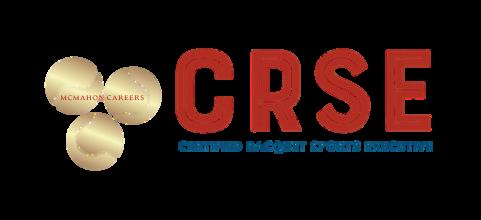
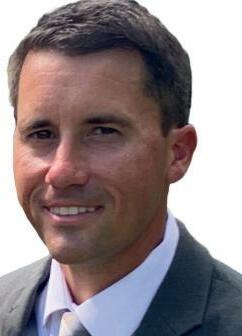

Certification Calendars on RSPA.net for the most up-to-date information
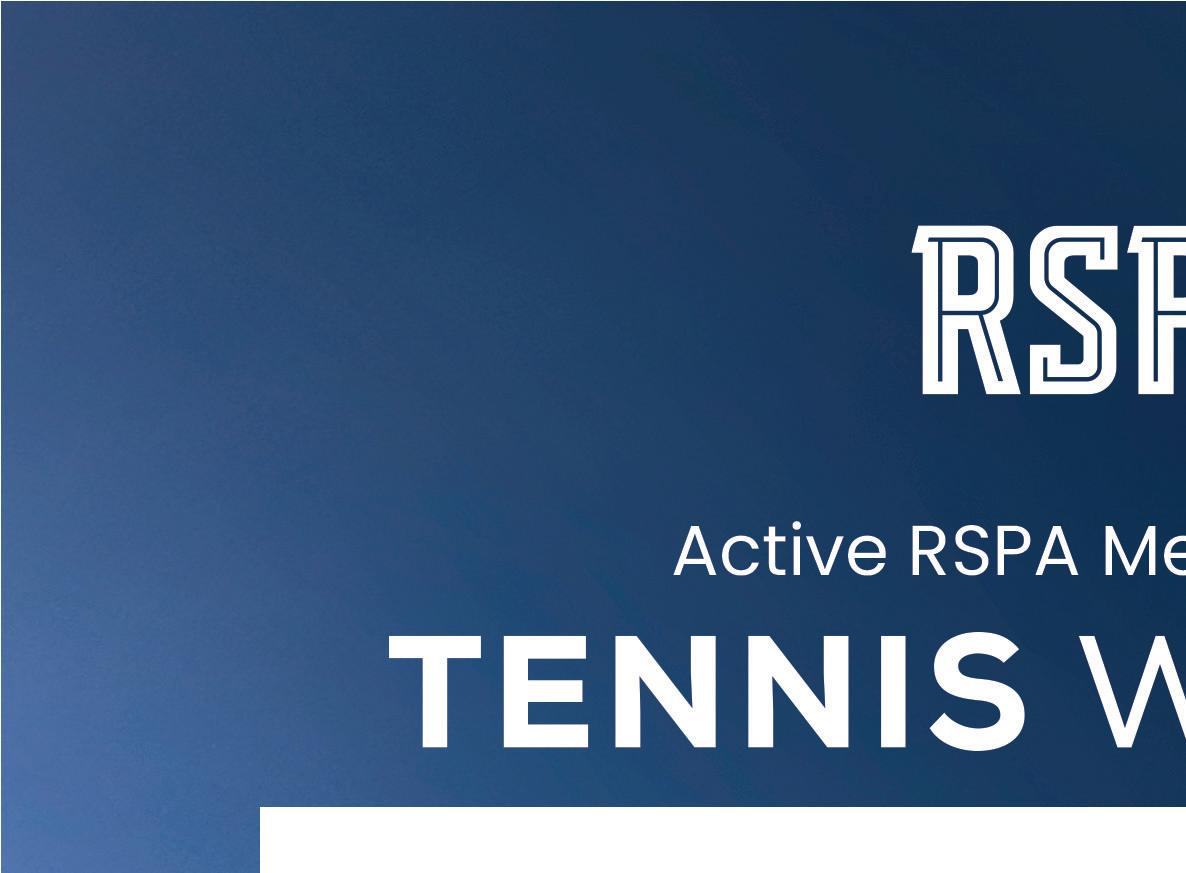

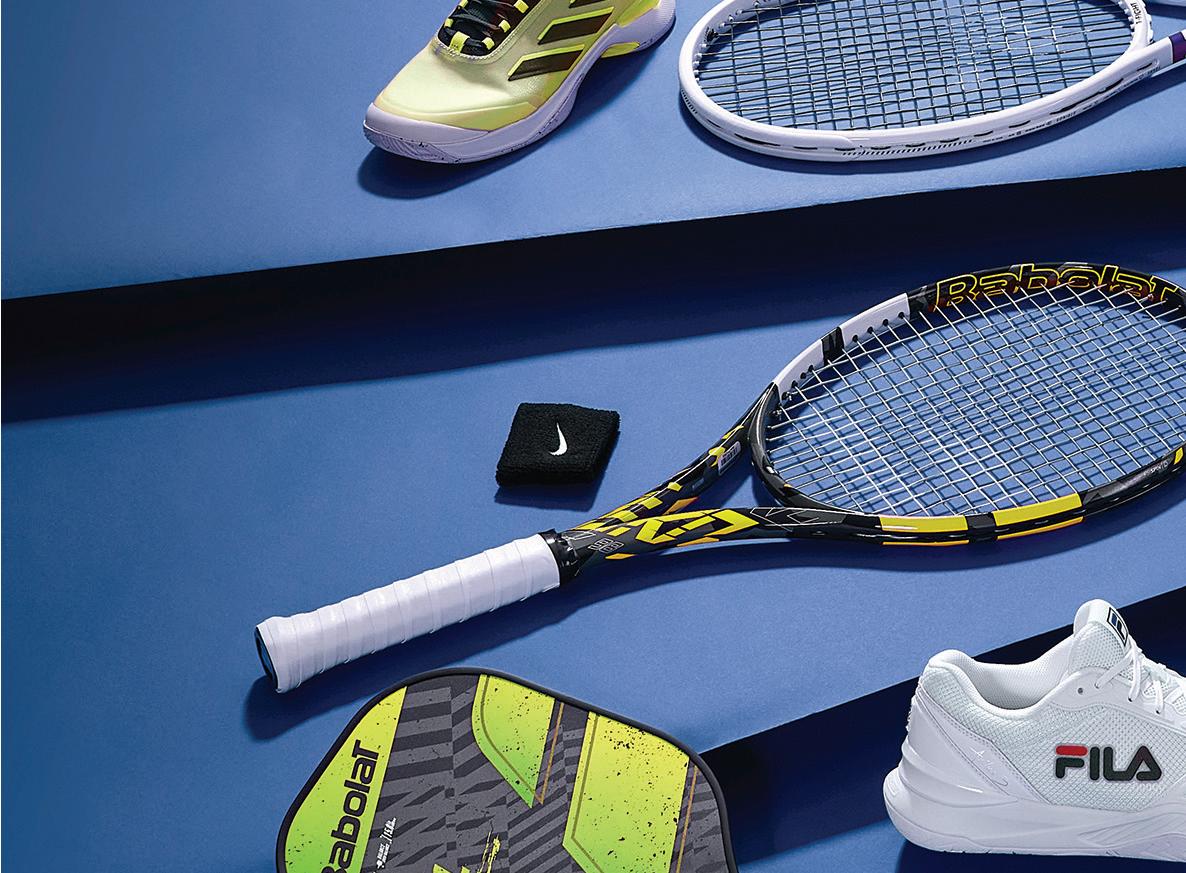






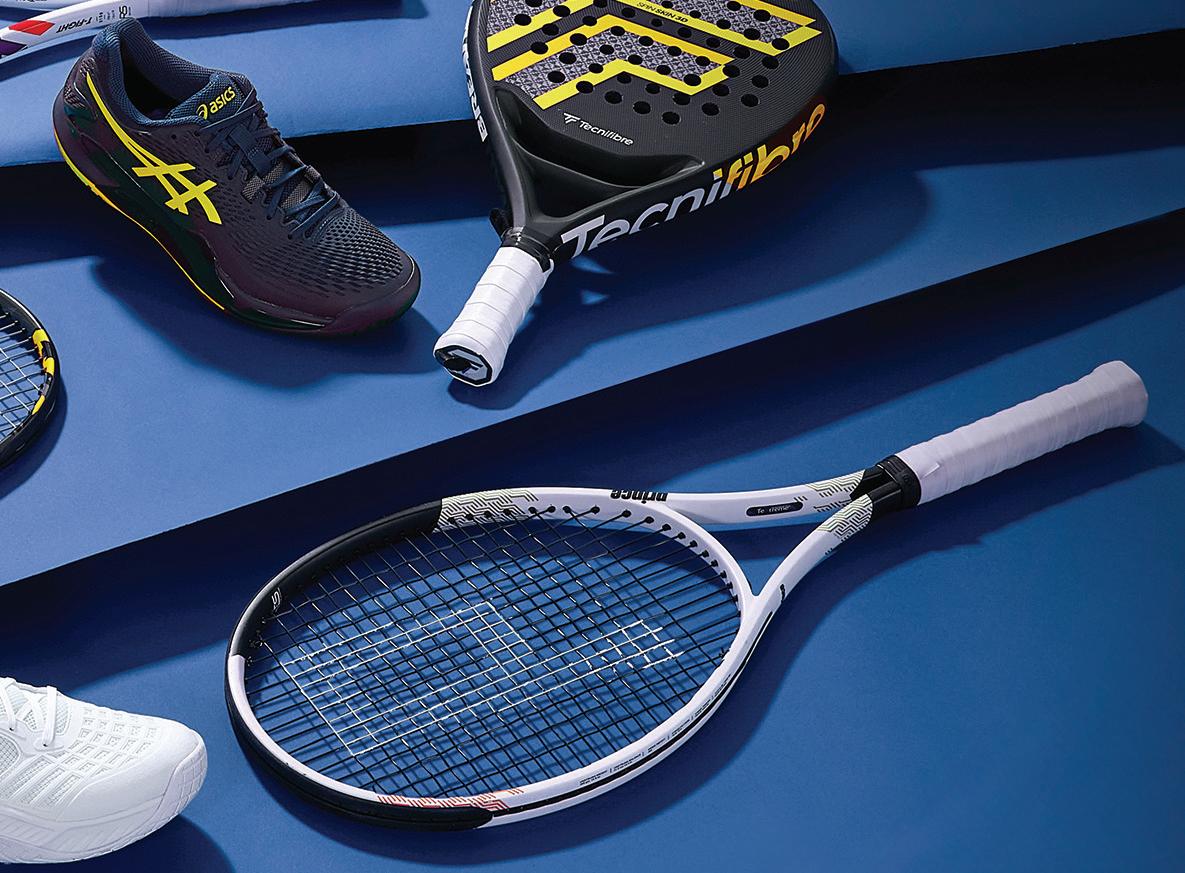


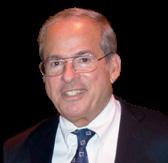
Steve
Flink, International Tennis Hall of Fame
PHOTO CREDIT: Fred Mullane, CameraWorksUSA
Nothing matters more to the wellbeing of professional tennis than riveting rivalries. They are the lifeblood of the sport, making fans more passionate and engaged, forcing the players involved to reach back with all of their resources to meet the demands of succeeding against someone of similar stature and the same level of determination. Rivalries bring out the best possible brand of tennis, inspiring legions of fans who line up behind one champion or another and support that player unabashedly.
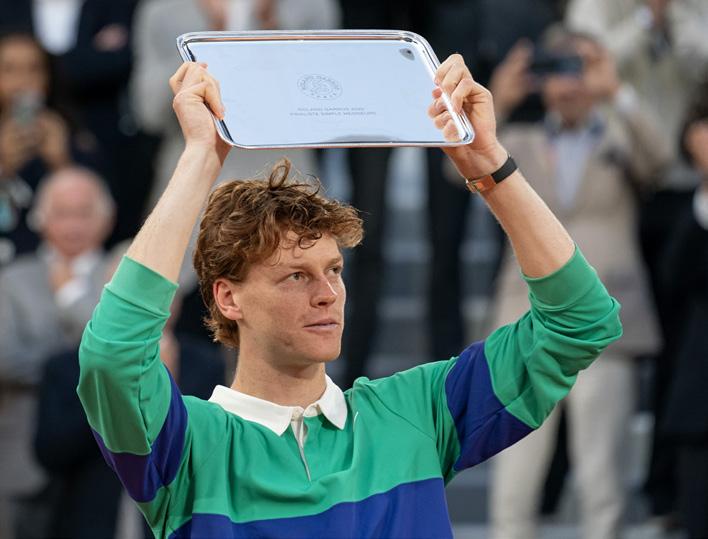
The latest rivalry lighting up the tennis community is the one between the charismatic Spaniard Carlos Alcaraz and the stoical Italian Jannik Sinner. Sinner will be 24 in August and Alcaraz turned 22 in May. If all goes according to plan, they will be competing against each other in matches of immense consequence for another decade and beyond. They are currently the two best players in the world, and heading into Wimbledon
Alcaraz and Sinner had split the last six Grand Slam titles between them.
These two dynamic performers have played some
stupendous contests against each other, including a crackling five set duel in the quarterfinals of the 2022 U.S. Open that Alcaraz salvaged from match point down on his way to winning a first major title. They have collided on clay, hard and grass courts, indoors and out, in all kinds of conditions. But their recent skirmish at the French Open was their most consequential showdown yet. It was one of the five best matches I have ever witnessed, close behind confrontations like Rafael Nadal stopping Roger Federer in the Wimbledon final of 2008, Bjorn Borg toppling John McEnroe in the Wimbledon final of 2008, Ken Rosewall overcoming Rod Laver in the WCT Finals at Dallas in 1972 and Novak Djokovic eclipsing Federer in the Wimbledon final of 2019.
Alcaraz and Sinner put on a scintillating show at Roland Garros. After Sinner recovered from a break down in the first set and won nine of the next twelve games to lead 6-4, 5-2, the Spaniard took the second set into a tie-break, but Sinner shined in that sequence and fashioned a two set lead over his foremost adversary.
Alcaraz rallied to win the third set but Sinner resumed his mastery in the fourth. Alcaraz found himself in a dark corner, serving at 3-5, 0-40, staring at triple match point against him. Somehow he escaped and eventually secured the set before surging to a 5-3 lead in the fifth set. Now Sinner was seemingly on his way to defeat, but with some of his best ball striking of the match, the slender Italian captured three games in a row and moved within two points of victory with Alcaraz serving to stay in the match at 5-6, 15-30.

Sinner missed a routine forehand on that critical point. Alcaraz held on to force a super tie-breaker, and the Spaniard soared to a level so high that no one in the world could have stopped him. Alcaraz won this jewel of a tennis match 4-6, 6-7 (4-7), 6-4, 7-6 (7-3), 7-6 (10-2), in five hours and 29 minutes. Having lost four of his first seven career clashes with Sinner, Alcaraz defeated the Italian for the fifth time in a row on the Parisian clay. Sinner was striving for a third Grand Slam title in a row and a fourth major overall, but Alcaraz claimed a fifth “Big Four” championship instead, demonstrating that he is one of the great clutch players in his profession by raising his record in five set matches to 13-1. Moreover, this Roland Garros triumph gave Alcaraz a 5-0 record in major finals. Whenever an epic title round encounter like this one is completed, the impact is felt far and wide out in the court of public opinion. Sports fans who ordinarily pay little attention to tennis find themselves fully immersed and exhilarated. In this case, Alcaraz was the more familiar of the two combatants because a good many American sports fans witnessed the Spaniard securing his first Grand Slam title at the 2022 U.S. Open, and have followed him avidly ever since. Sinner’s heroics over the last year have raised his stature considerably.
Alcaraz is a player who makes it his business to connect with the fans, to show them he needs their affection and wants their appreciation. Moreover, he is such a flamboyant shotmaker that he often brings the fans to their feet with shots flowing so naturally off his racket. This young man is a crowd pleaser of a rare ilk, a supreme entertainer and a showman who understands that tennis is still a serious pursuit and the center of his life. But, perhaps more than any other player in the modern era, Alcaraz has his heart set on turning the tennis court into a stage to explore his talent creatively. Having fun while at work is an Alcaraz priority.
Sinner is by nature an internalizer. He does not play to the crowds or look to be an entertainer. He is an earnest craftsman who’s uncomfortable calling attention to himself. But I have a feeling Sinner will become a bit more emotive in the years ahead if he recognizes that this would serve him well as a competitor. He won’t go overboard or go against the grain of who he is, but Sinner inevitably will make some concessions to the
fans and encourage them with more fist pumping to get behind him.
The timing of Sinner’s ascent alongside Alcaraz— and the growing importance of their rivalry— is ideal for the sport. Federer was the first of the “Big Three” to retire in 2022. Nadal wrapped up his career at the end of 2024. The mighty Djokovic remains formidable but might put his racket down at the end of this year. The rivalries Djokovic celebrated with Federer and Nadal transcended tennis for the better part of two decades.
Between 2004 and 2019, Nadal collided with Federer on 40 occasions and was victorious 24 times. Federer took on Djokovic 50 times from 2006-2020, with the Serbian winning 27 of those clashes. And Djokovic played Nadal in 60 matches between 2006 and 2024, with the Serbian finishing on top 31-29. These were three powerful personalities who kept audiences everywhere enraptured with their enduring excellence.
Now Alcaraz and Sinner have become central figures in the world of tennis and their rivalry is steadily
capturing the imagination of fans from every corner of the globe. The tennis they produced in Paris was almost out of this world at times. They forced each other at Roland Garros to find a lofty level neither man could have envisioned. Sinner is a masterful percentage player and both his game and his point of view contrast sharply from that of Alcaraz. Their matches are often the stuff of dreams but both players are entirely realistic about what it takes to win against each other, and how much effort will be required to realize their largest goals.
Alcaraz and Sinner are two first rate fellows who will frequently confront each other in the finals of majors as they make history of the highest order. Tennis is very fortunate to have them in the forefront of the game.

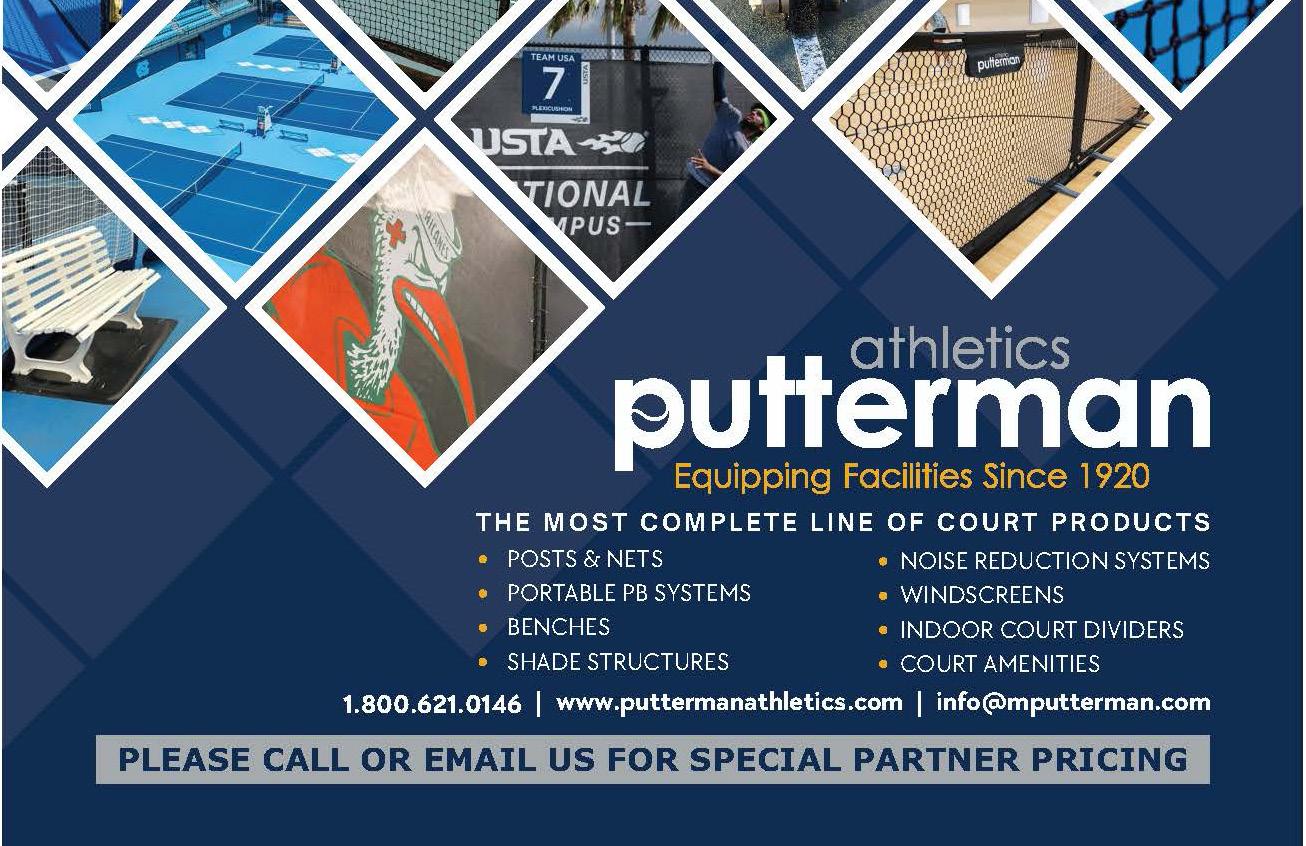
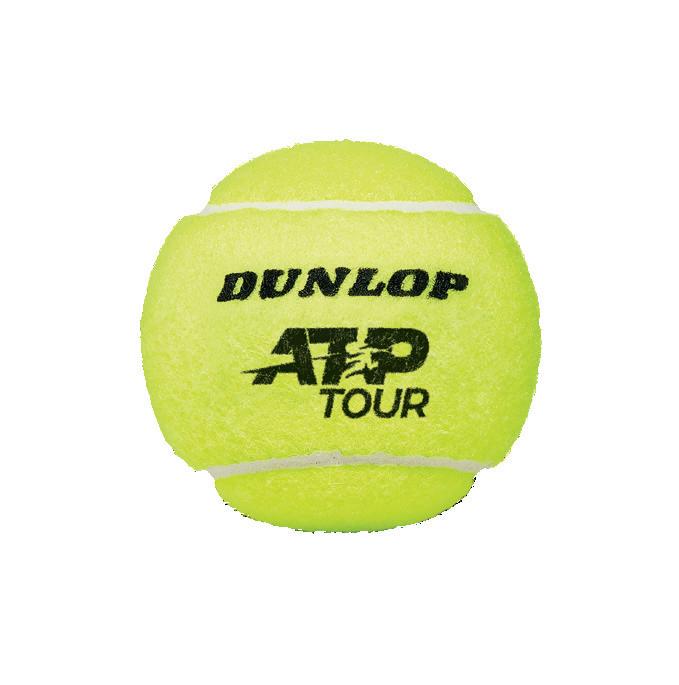

NOW MORE SUSTAINABLE PACKAGING
SAME GREAT PERFORMANCE
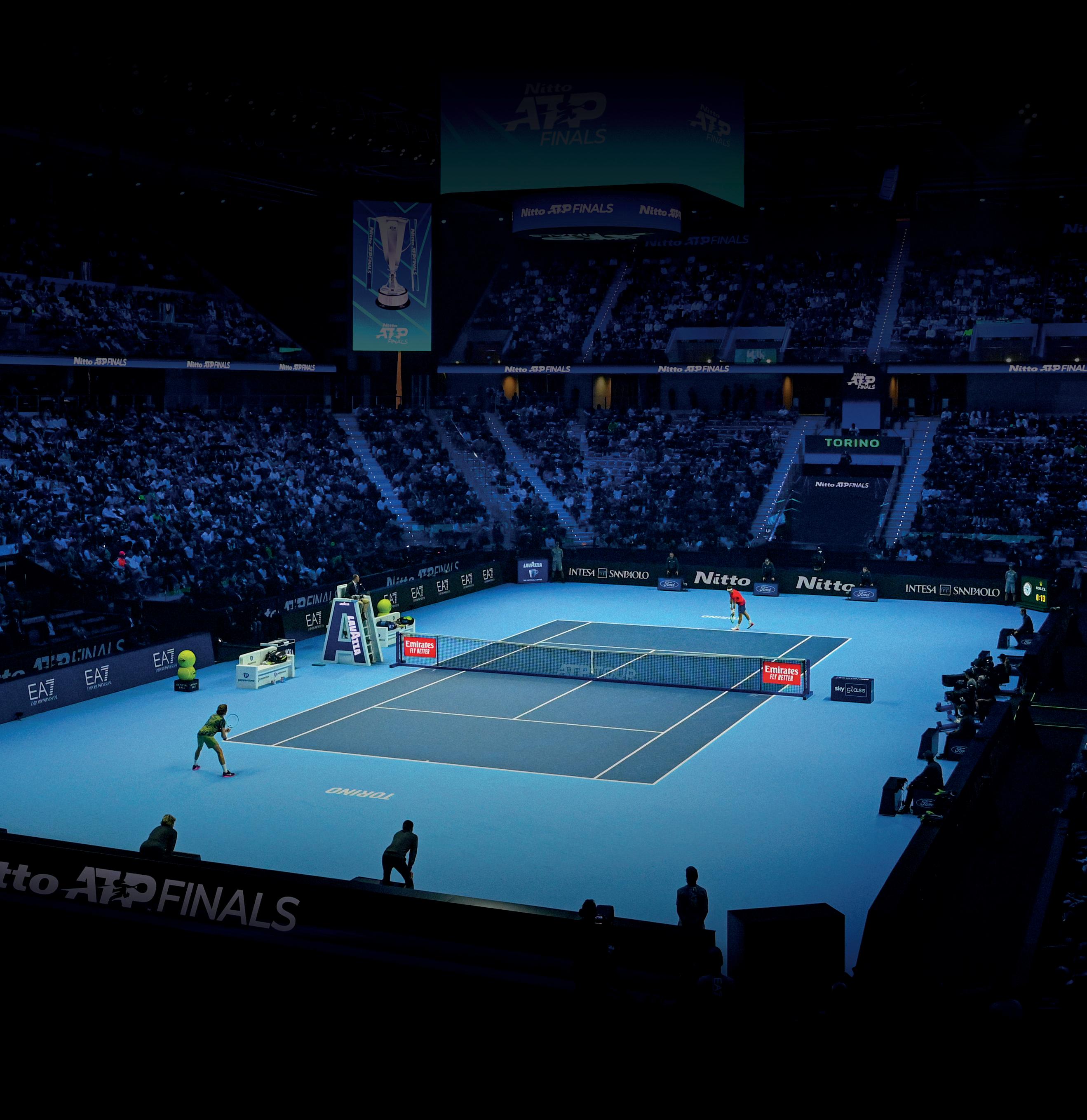
RECYCLABLE PAPER LID

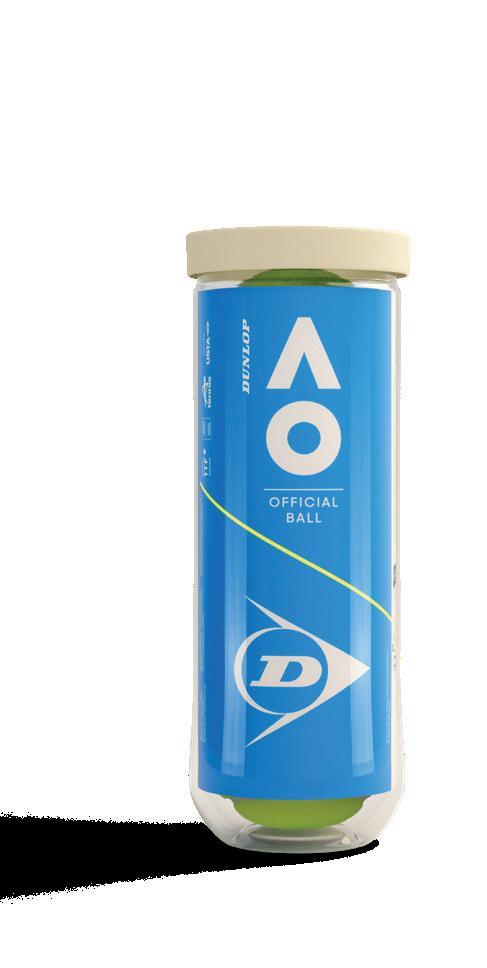
RECYCLED PAPER LABEL
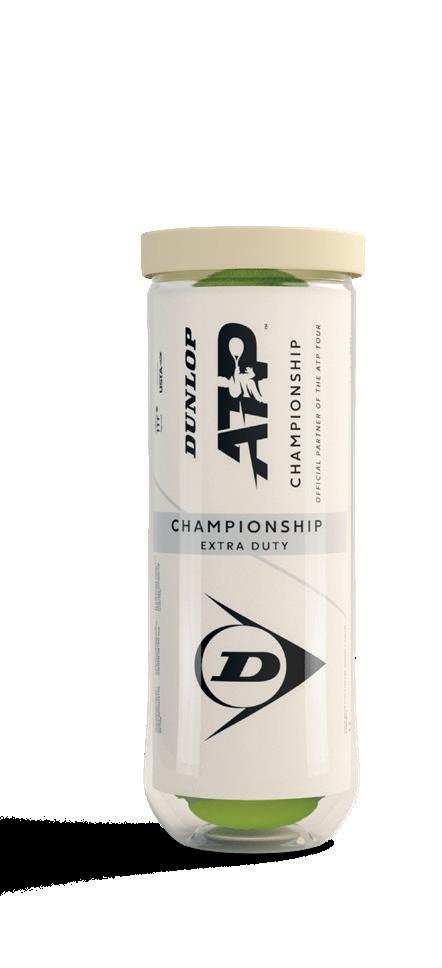
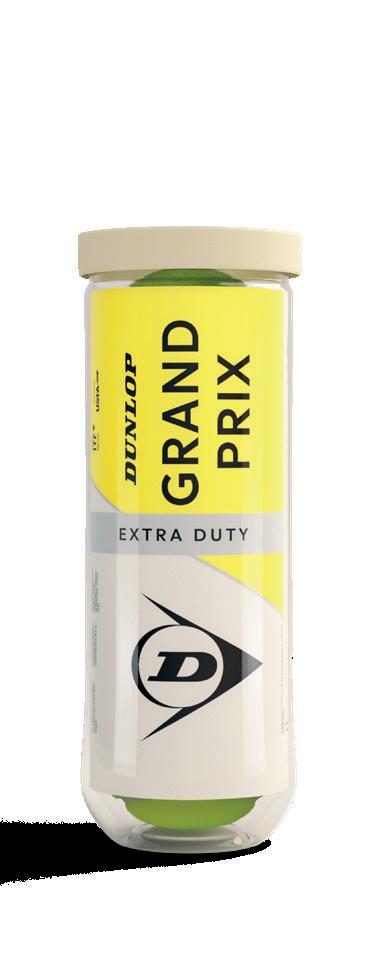
FROM 30% RECYCLED PLASTIC

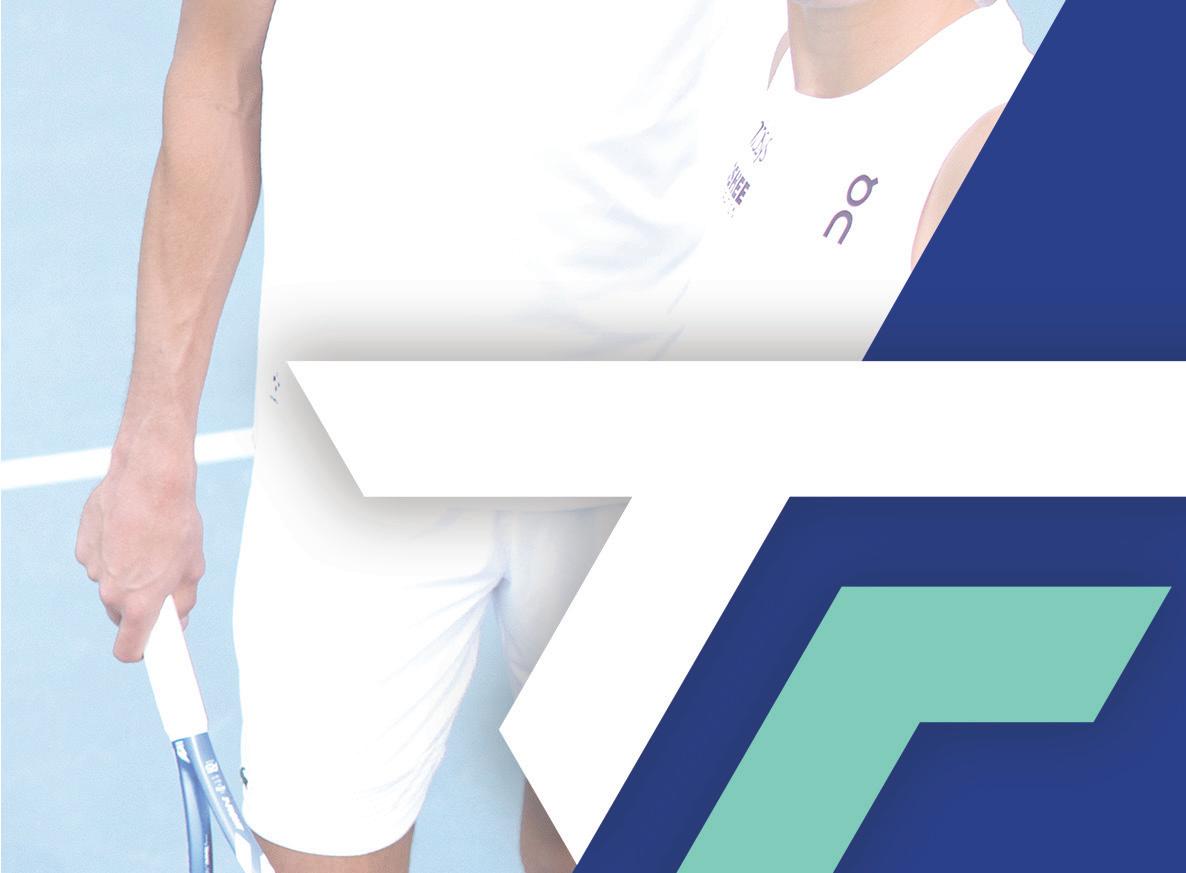
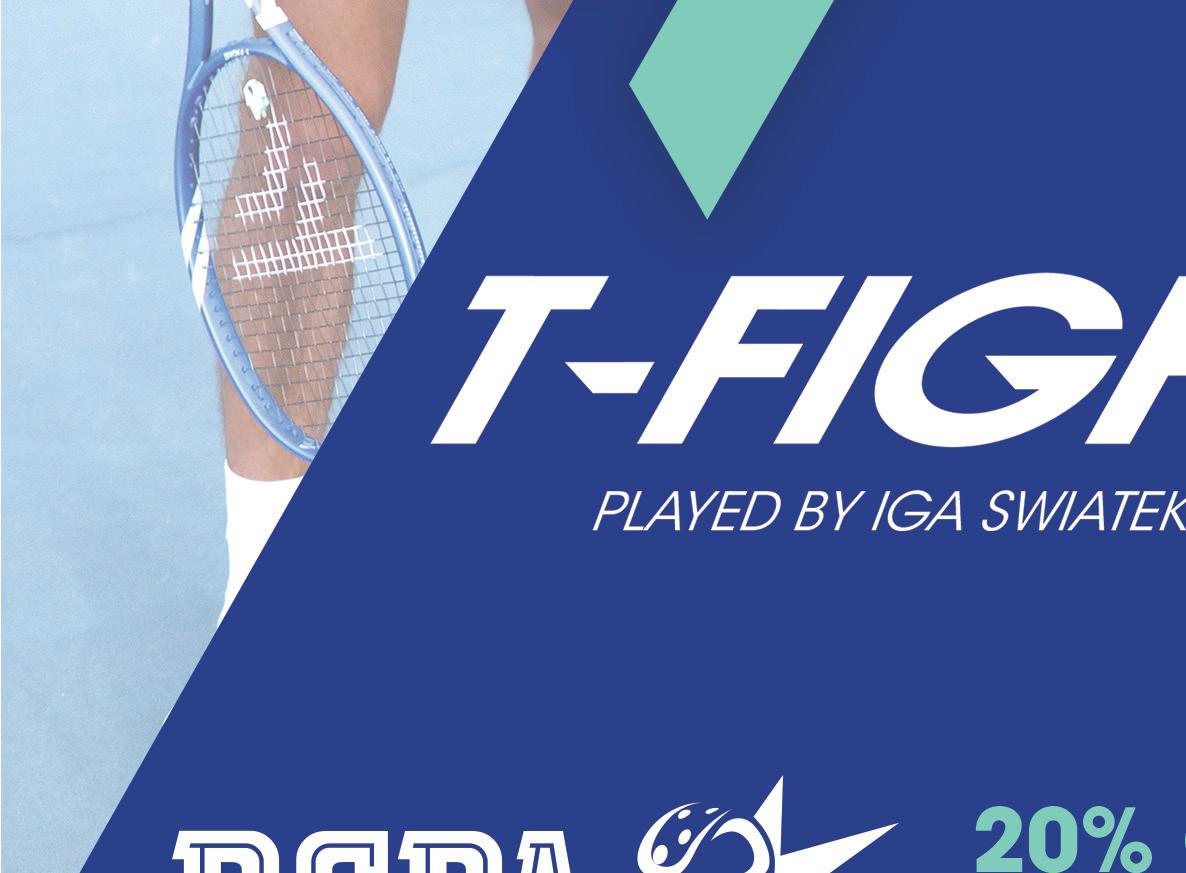






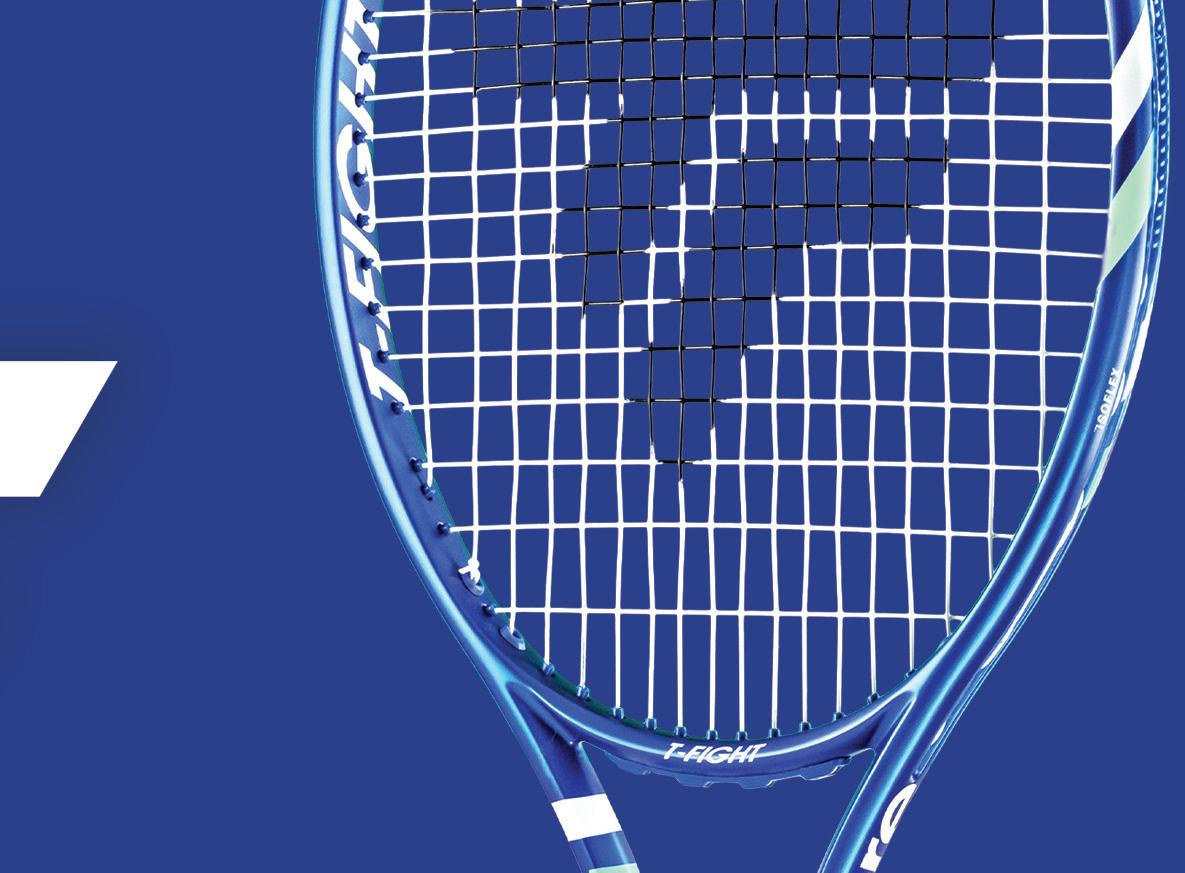




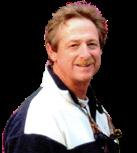
You or one of your students may suffer an unplanned, serious injury at some point. Understanding how to assemble a team to help correct the issue, heal and recover is an added service you can provide. The ideal team should include:
• A doctor to diagnose the issue and recommend treatment
• A physical therapist to support preand post-treatment range of motion and basic strength
• The coach to encourage the athlete and monitor progress
• The athlete to commit to strengthening the injured area and developing the mental aspects of performance It is important to understand the role of each team member so they can better assist the athlete and increase the odds of a better outcome.
Racquet sports demand agility, strength and endurance. While it offers numerous health benefits, it also poses the risk of various injuries, particularly to the musculoskeletal system.
The first step in addressing an injury is with a thorough initial evaluation that includes detailed history of the injury, including the mechanism of injury, symptom onset and any previous injuries. Physical examination typically involves assessing the affected area for tenderness, swelling, range of motion and strength. Diagnostic imaging
such as X-rays, MRI or ultrasound may be necessary to confirm the diagnosis and to rule out fractures or other severe injuries.
Some of the most frequent injuries in racquet sport include:
• Tennis Elbow (Lateral Epicondylitis): An overuse injury affecting the tendons on the outside of the elbow, causing pain and tenderness
• Rotator Cuff Tears: Injuries to the muscles and tendons that stabilize the shoulder, often resulting from repetitive overhead motions
• Ankle Sprains: Ligament injuries caused by sudden twists or turns, leading to pain, swelling and instability
• Achilles Tendinitis: Inflammation of the Achilles tendon due to overuse, characterized by pain and stiffness in the back of the ankle
• Stress Fractures: Small cracks in the bone caused by repetitive stress, commonly occurring in the lower limbs
Effective injury management involves a combination of rest, ice, compression and elevation (RICE). This approach helps reduce inflammation and pain in the acute phase of the injury. Nonsteroidal anti-inflammatory drugs (NSAIDs) may be prescribed to manage pain and inf1ammation. Modify or temporarily halt activities that exacerbate the injury to allow for proper healing.
A physical therapist will design a personalized rehabilitation program tailored to the specific injury and individual needs. The program typically includes exercises to improve flexibility, strength and endurance.
Non-surgical treatment options are often effective for many injuries and includes:
• Bracing and Taping - Braces and tapes can provide support and stability for the injured area, reducing strain on the affected tissues and preventing further injury.
• Corticosteroid Injections - For some inflammatory conditions, such as tennis elbow or rotator cuff tendinitis, corticosteroid injections can provide significant pain relief and reduce inflammation. However, these should be used judiciously, as repeated injections can weaken tendons and potentially lead to rupture.
• Platelet-Rich Plasma (PRP) Therapy - PRP therapy involves injecting a concentration of a patient’s own platelets into the injured area to promote healing. This treatment has shown promise in managing chronic tendinopathies and accelerating the healing process.
• Surgical Intervention - When conservative management fails to relieve symptoms or restore function, surgical intervention may be necessary. The decision for surgery is based on several factors, including the severity of the injury, the patient’s activity level and the response to non-surgical treatments.
Physical therapy becomes most important when surgical intervention is necessary. Maintaining range of motion and as much strength as possible will increase the odds of better result post-surgery.
The physical therapist’s main goal is to help the athlete return to or gain higher levels of function after an illness
or injury. They will evaluate strength, range of motion, balance and endurance and develop personalized treatment plans to help the athlete heal the affected areas, build muscle strength, and avoid further injury. According to a new study, physical therapy outperforms steroid injections and is more cost-effective.
Physical therapy is a cornerstone of recovery. Early engagement in physical therapy post-injury can expedite recovery, prevent complications and enhance the patient’s quality of life. The physical therapist can empower the athlete to regain strength, safely return to sports and decrease the risk for re-injury.
Physical therapists are movement experts. They improve quality of life through hands-on care, patient education and prescribed movement that improves the athlete’s balance and stability.
The doctor usually refers the athlete to the physical therapist; however, self-referral and directly contacting a physical therapist for an evaluation is also considered acceptable. Among the benefits of physical therapy are:
1. Significant reduction of recovery time by incorporating targeted exercises and therapy sessions.
2. Improvement of the overall quality of life by enhancing physical health and enabling a quicker return to daily activities.
3. Personalized treatment plans in physical therapy help minimize pain, reduce swelling and prevent further complications such as infections.
4. Ensuring an effective recovery pathway by monitoring progress and adjusting treatments as needed.
5. Physical therapy goes beyond physical rehabilitation, promoting improved functionality, reduced
discomfort and enhanced well-being in post-surgery care.
6. Engaging in physical therapy helps restore joint mobility and flexibility, which are critical components that are often compromised after surgery.
7. Physical therapy plays a significant role in scar tissue management, helping to reduce scar tissue formation, which can limit movement and cause discomfort.
8. Physical therapists provide invaluable education on body mechanics and posture, which can prevent future injuries and improve overall physical function.
9. The psychological benefits of physical therapy should not be overlooked; by actively participating in their recovery, patients often experience a boost in morale and motivation.
10. Physical therapy can also identify potential issues before they become serious, offering a proactive approach to health and minimizing the need for additional medical interventions.
The coach plays a crucial role in the healing, recovery and return of the athlete. Among the things that a coach can do during the process are:
• Encourage the athlete to use the recovery time to join a gym short term to maintain or strengthen the other areas of the body not affected by the injury.
• Work on joint stability muscles to help prevent other injuries.
• Physical activity post-rest or post-surgery becomes more important as the athlete gets older.
• Recommend that athletes work on the mental aspects of their games during the recovery period. Reading books and watching matches are great ways to learn how other athletes become better at their sport.
As the athlete starts to come back to the court, coaches can assist by watching for differences in how the athlete moves trying to minimize re-injuries due to any change in how the joint
functions.
The athlete is ultimately the one responsible for their healing and recovery. They are responsible for following the orders and recommendations of the team members to build strength in the injured area, getting back in shape and preventing further injury. They are the only ones who can listen to their bodies and control the speed of their recovery. The athlete is also in charge of their own mental, psychological and emotional health.
Understanding that an older athlete takes a little bit more time for recovery is also crucial, as well as the limitations that individual bodies have. With an entire team working together, the odds of the best outcome within the shortest recovery time greatly increases.
The whole team’s goal and objective is to get the athlete back to playing and enjoying their chosen racquet sport after their recovery from the injury. A secondary objective is to prevent further injury and/or cause new ones. Each member of the team, working separately but together for the common goal.
Image and Article Provided by Aer-Flo
Whether you’re managing tennis, pickleball, or padel courts, one thing remains consistent—the need for professional-grade windscreens that enhance play, reduce distractions and hold up under pressure. That’s where Aer-Flo Sports delivers.
As the Official Windscreen Provider of the Racquet Sports Professional Association (RSPA), Aer-Flo is known for setting the industry standard in durability, design and value.
From high school programs to resorts and pro-level training facilities, TUFFY® is trusted nationwide for its clean finish, durability and ease of installation.
Aer-Flo’s flagship TUFFY® Windscreen is designed to perform in even the most demanding court environments. Made from exclusive VIPOL® Matrix fabric, TUFFY® is virtually tear-proof and built with over 50% more microfibers than standard screens. Reinforced edging and brass grommets every 12 inches ensure strength across the entire length.
It’s the only windscreen finished with double-needle lock stitching, eliminating the frayed edges and unraveling commonly seen in lesser products.
With Aer-Flo’s CHROMA-BOND® printing technology, your screen becomes part of your brand. Choose from 23 colors and customize with school logos, sponsor recognition, or bold facility branding. Whether you prefer a sleek, distractionfree background or a vibrant, full-color design, TUFFY® adapts to your needs without compromising performance.
• Built to Last: Reinforced stitching and tear-proof materials.
• Fade-Resistant: UV protection keeps your screens looking sharp.
• Customizable: Match team colors or add logos with ease.
• Polished & Private: Reduces distractions and adds a clean, professional appearance.
• All-Weather Tough: Reliable performance in heat, cold, wind and rain.
Proudly Made in the USA
In 2023, Aer-Flo opened its 100,000 sq. ft. manufacturing facility in Lincoln, Alabama, allowing for better production control, faster lead times and unmatched quality assurance. From this hub, Aer-Flo serves a broad customer base—from NFL teams and Major League Baseball to community courts, schools and universities.
Whether you’re upgrading existing courts or outfitting a new facility, Aer-Flo provides the tools you need to create a better experience for athletes and spectators alike.
Let’s Talk About Your Court
Not all windscreens are created equal. If you’re ready to upgrade, Aer-Flo Sports and TUFFY® Windscreen offer unmatched protection, brand presence and long-term value.
Reach out today to your local dealer or visit www.aerflosports.com to learn more. Because when your screen performs better—so can your players.

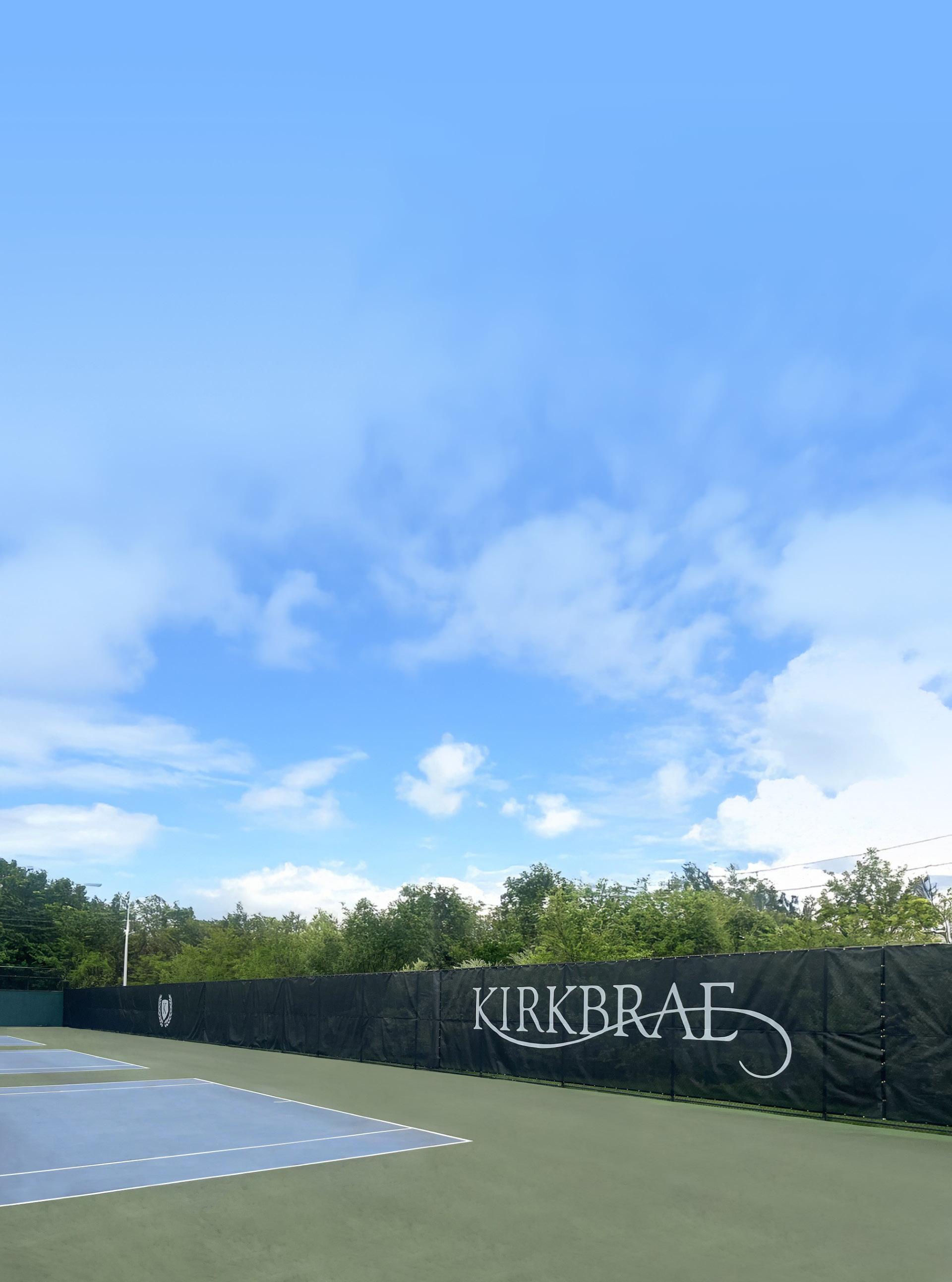

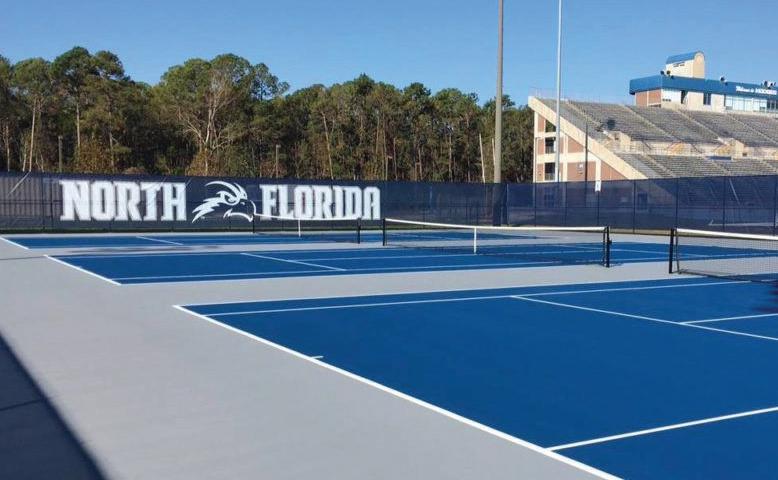
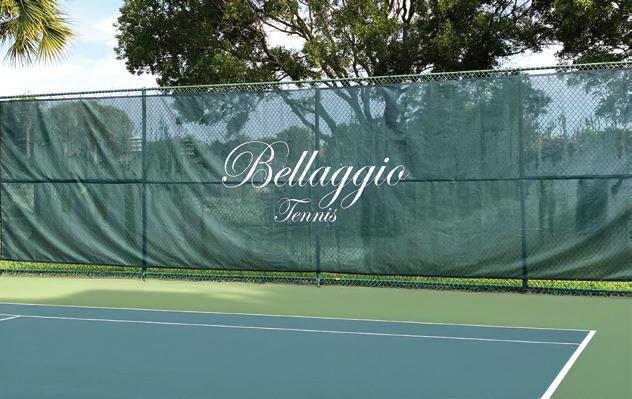
Virtually tear-proof and UV-resistant, TUFFY® is the only windscreen finished with double-needle lock stitching to prevent unraveling. Made from our exclusive VIPOL® Matrix, it offers unmatched durability — ideal for courts, fields, and fence lines. TUFFY holds strong with reinforced edging and brass grommets every 12 inches. Add your team colors or bold graphics with our CHROMA-BOND® printing. Trusted by schools, parks, and pro facilities nationwide. Make the Tough Choice. Choose TUFFY. Get a quote today.
Built to Last: Virtually tear-proof with reinforced stitching and grommets.
Fade-Resistant: Superior UV protection keeps colors vibrant.
Customizable: Add team colors or logos with CHROMA-BOND® printing.
Clean & Private: Creates a polished look while blocking distractions.
All-Weather Tough: Performs in heat, cold, wind, and rain without breaking down.
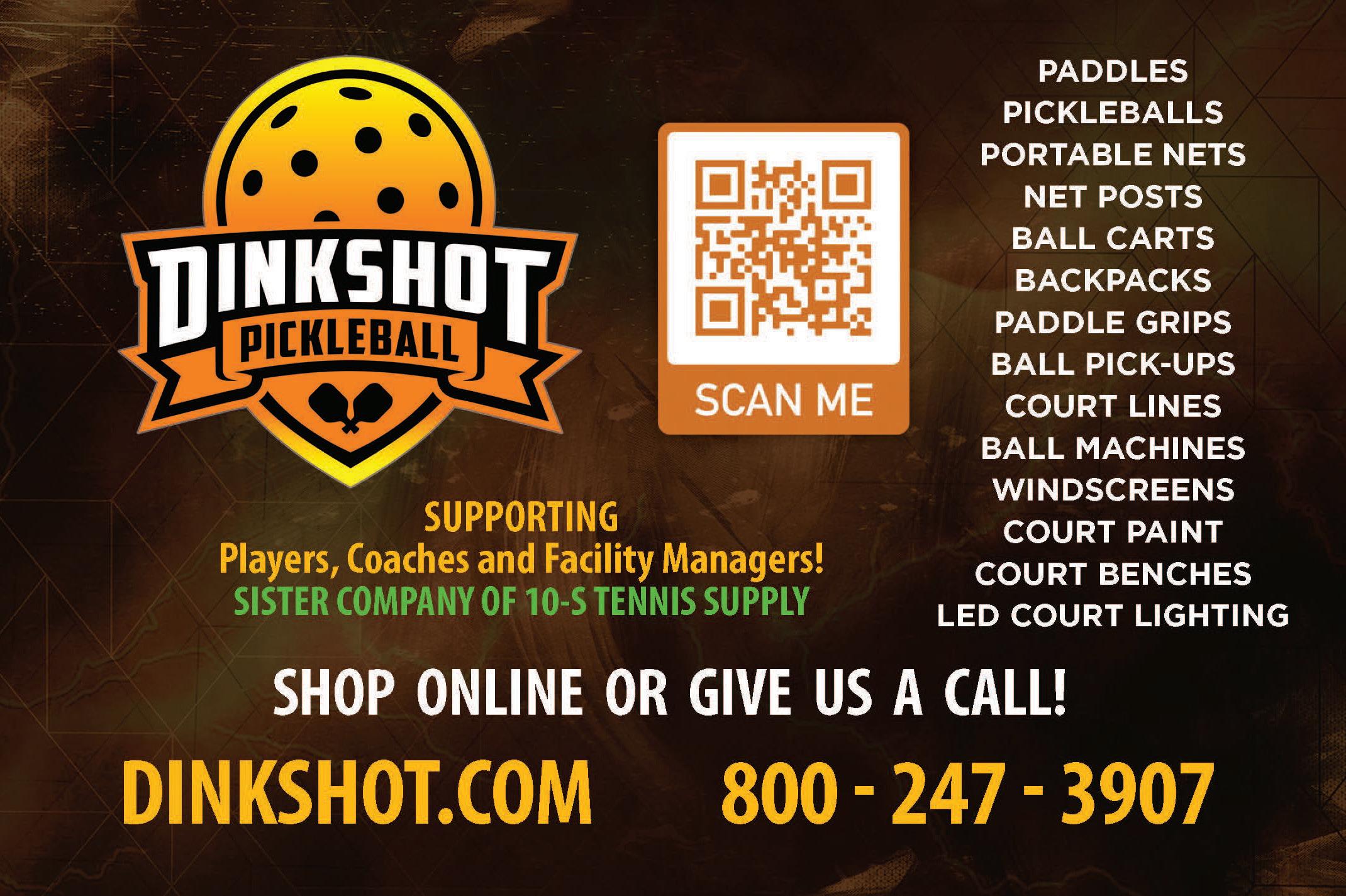

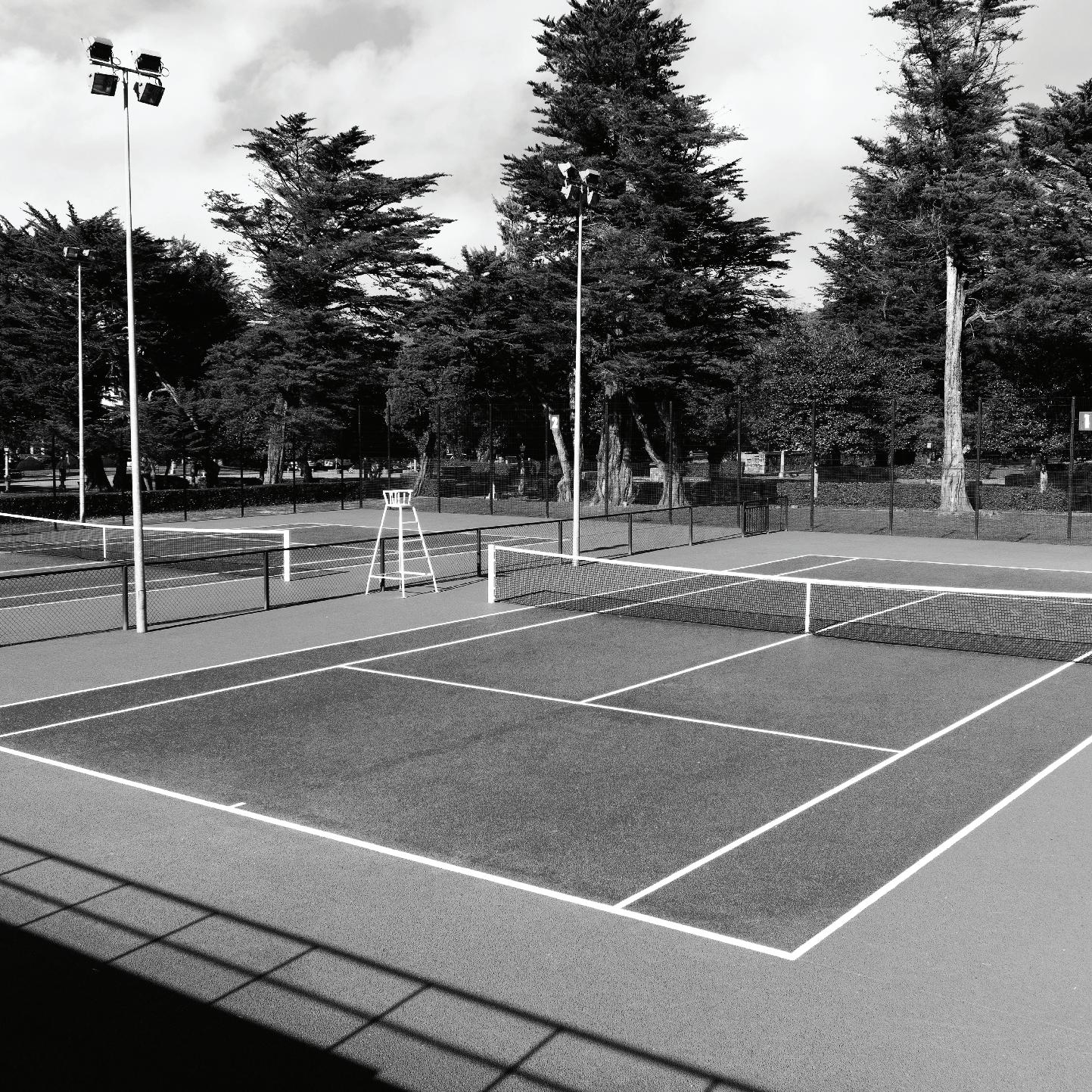


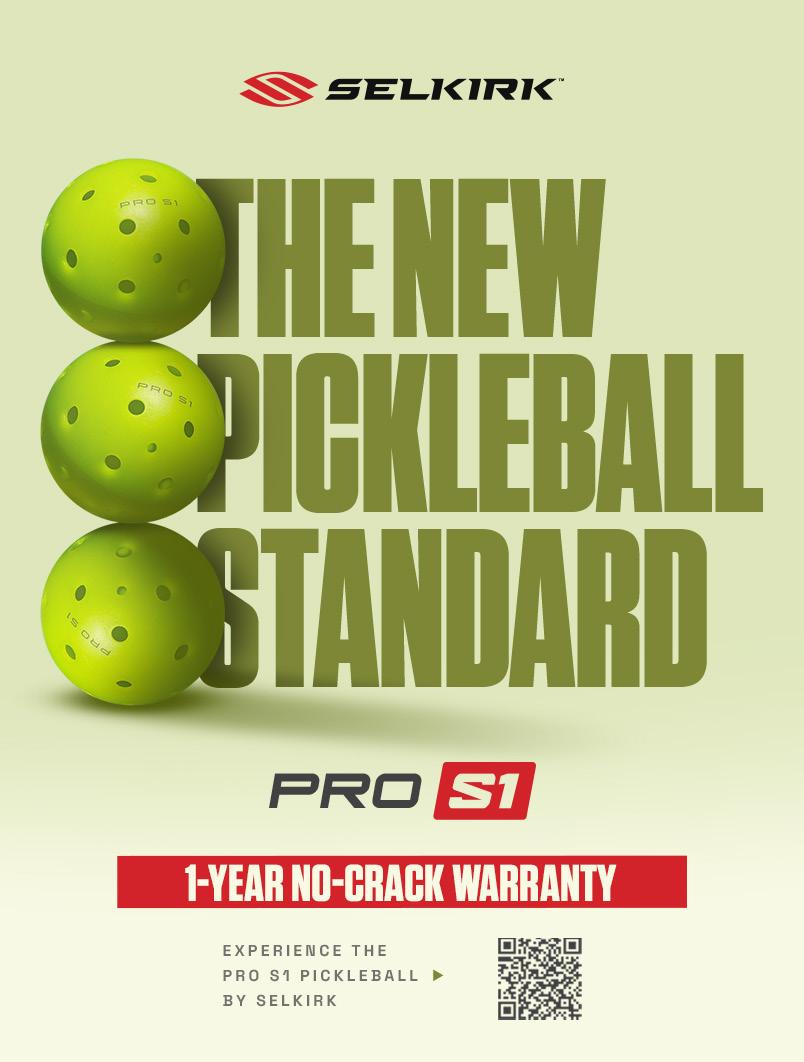
Liability insurance is something that no person ever hopes to need to use but is glad to have in case of any accidents. One of the most valuable member benefits that the Racquet Sports Professionals Association offers its certified members is a $6 million personal on-court insurance policy. With this policy, members are covered, while on court, against any instances of bodily injury to another player, and for damage to property not in the professional’s care, custody or control. It does not cover injury to the professional or damage to his/her property. This policy covers tennis professional, pickleball, padel and platform tennis applicants, along with certified members at all levels. An active and qualifying member’s insurance verification letter can be found at documents.rspa.net.
Not only do members receive personal coverage, but they also have the opportunity to purchase a variety of additional insurance policies! Our most commonly purchased policy is the “additional facility insurance’ coverage. This policy extends your personal policy to any facility, club, school, HOA, etc. and covers them for up to $6 million in any claims filed against them. This is something that most entities request from the member, so it is recommended that you check with your “facility” before purchasing this coverage to avoid spending money on a policy that is not needed. This coverage can be purchased by certified tennis instructions, professional tennis applicants, all other racquet
President. Trish Faulkner
First
Vice
Immediate
CEO

sport applicants and certified members in all sports and at all levels!
Second to this is the non-member teaching assistant policy. This insurance policy gives a certified professional the ability to add a non-member staff assistant to the liability policy that is provided to them by the RSPA. The assistant must be at least 18 years of age and the policy is active only so long as the certified member is on court or on the premises while the assistant is teaching. The policy is void when the certified professional leaves the facility. This is a great option for members who, for example, run summer camps and have local college students assisting them for a couple of hours a day. Only certified tennis professionals and certified members in all other racquet sports are able to purchase this coverage. Neither applicants nor certified tennis instructors can receive this policy.
Finally, an additional insurance policy that our team has seen an increasing need for from our members is the sexual abuse and molestation insurance. This policy protects members against claims of sexual harassment or misconduct. Anyone who purchases this coverage must first complete an extensive course through one of our partnering organizations, along with a background check that runs the person’s information through the National Sex Offender registry. The Safe

Play course and background check do not substitute for these requirements. This policy covers professional tennis, pickleball, padel and platform tennis applicants, along with certified members at all levels.
Insurance can be a complex topic, so please do not hesitate to reach out to our incredible membership team with any questions about what additional policies you qualify for, which coverage may or may not be necessary to purchase, or if you need assistance in ordering any additional insurance. Send an email to insurance@rspa.net or give us a call at 407-634-3050, option 2, and our team will gladly assist!
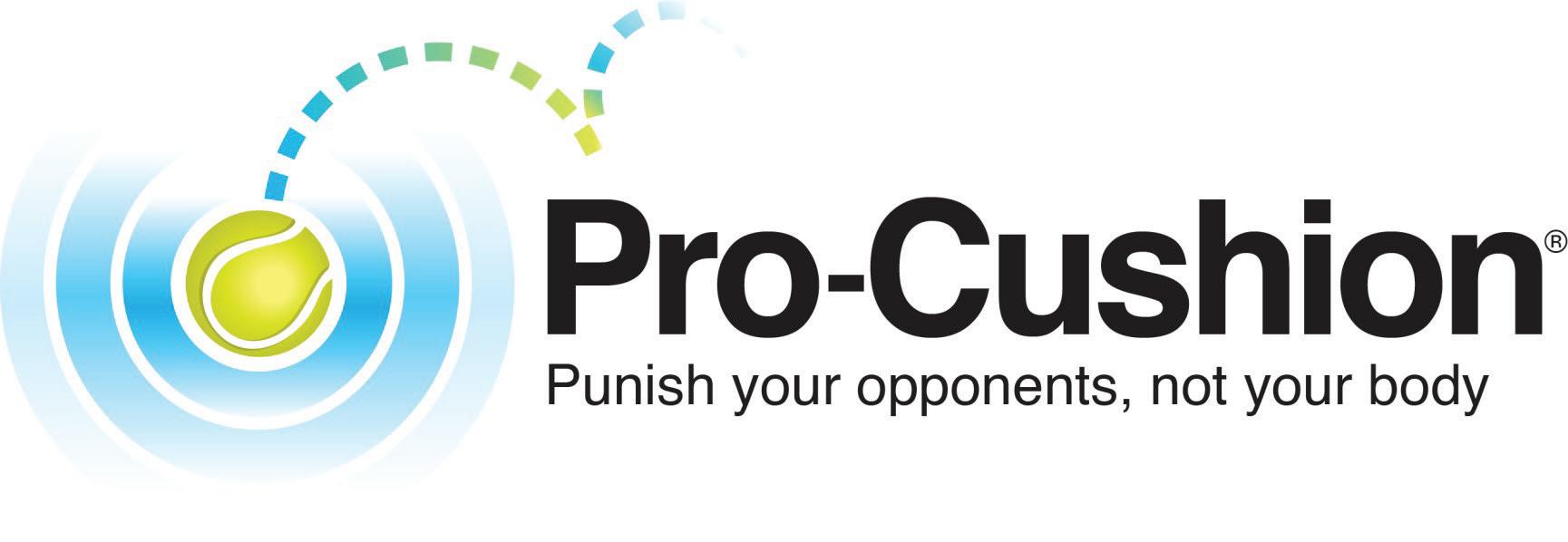

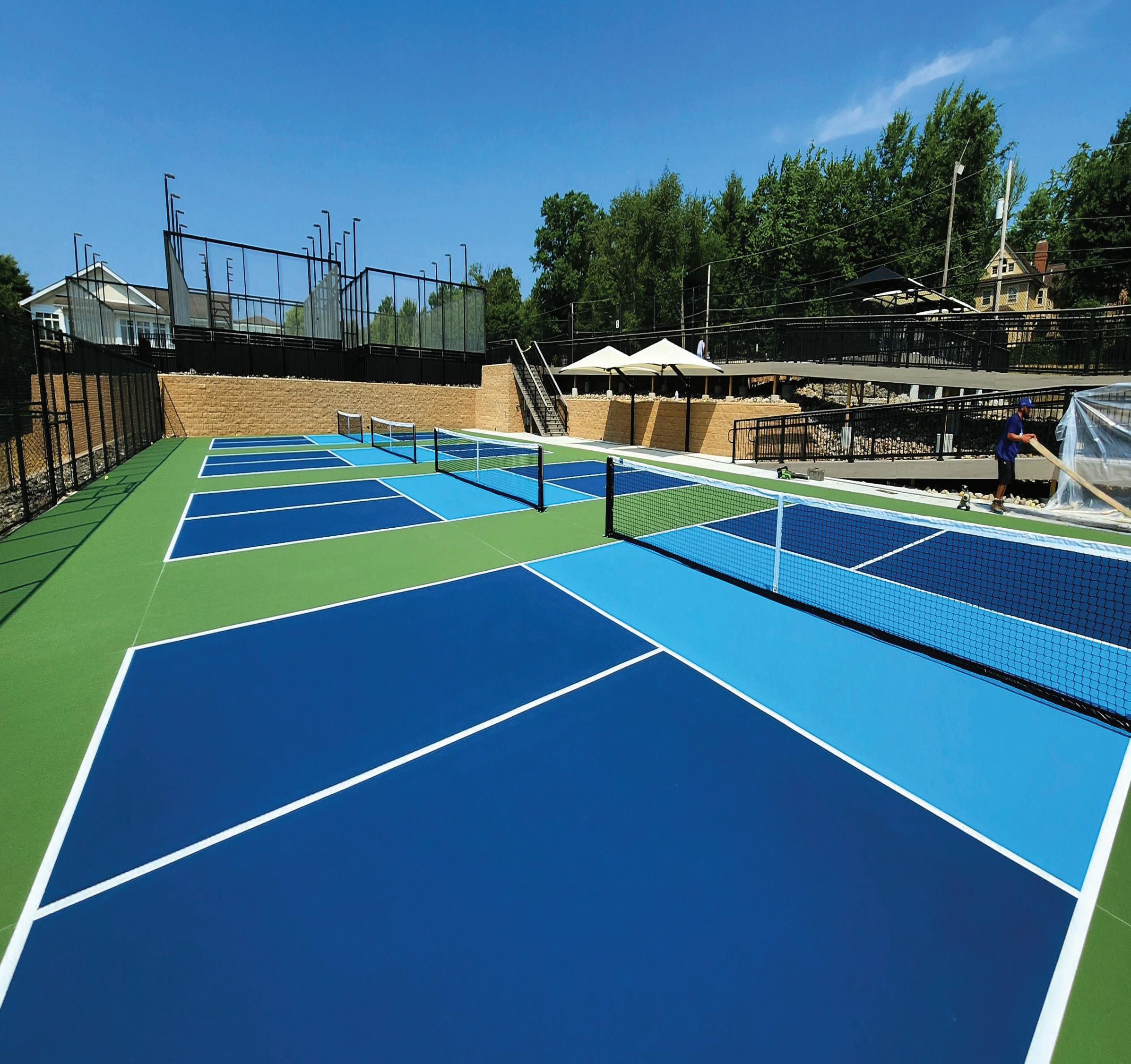
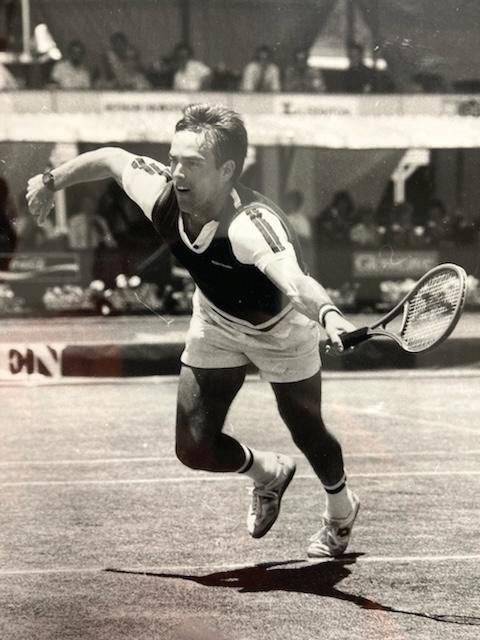
“PRO-CUSHION is the best solution for the truest bounce for tennis and pickleball. It transforms courts into permanent, crack-free, cushioned surfaces while providing a playing surface that’s easier on the body and joints. I love playing on Pro-Cushion for those reasons and I highly recommend it”
Tim Wilkison, Tim Wilkison Tennis Academy
Competed in 40 Grand Slam Tournaments High ranking of #21 on ATP Tour
